
Comparing Vital Capitals: An anthropological analysis of the global value chains of sea buckthorn and raspberries
Aim
Description
The current research project, which is carried out in Serbia, Latvia, and neighboring countries, triangulates multi-local archival research with participant observation and expert interviews to follow the berry fruits from the plantations to the end-consumers. The study compares how rules, norms and desires are assembled, negotiated and aligned to ensure the high quality, safety, and competiveness of globalized European products. It queries modernisation paradigms that operate on center-periphery models of innovation, by tracing how the main impulses of sustainable berry commodity chains may emanate from peripheral rural spaces inside and outside the EU, and their values translated and channeled by European Union centers.
- Video blog
- Public Lecture at RSU Doctoral Seminar (23.03.2022)
I gave a public lecture at the RSU Doctoral Seminar 'Infrastructuring Raspberries: Agronomists, Cold Chains, and the Socialist Base of the ‘Red Gold of Serbia’ and introduced by my colleague Dr Ieva Puzo. Read the announcement on RSU website.
Video recording of the talk
- Sea buckthorn events 2021, or: Angela Merkel and the forgotten colour film (15.12.2021)
In which I reflect on Latvian sea buckthorn selling in Cologne, Germany's troubles with sea buckthorn blight and ex-Chancellor Angela Merkel's farewell song "You forgot the colour film" (OwSpSubs, view here) that prominently features sea buckthorn in its first line (for the grand tattoo, see this).
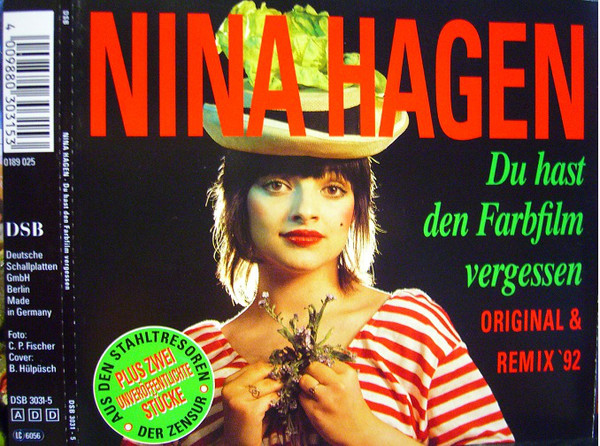
Nina Hagen: “You forgot the colour film”
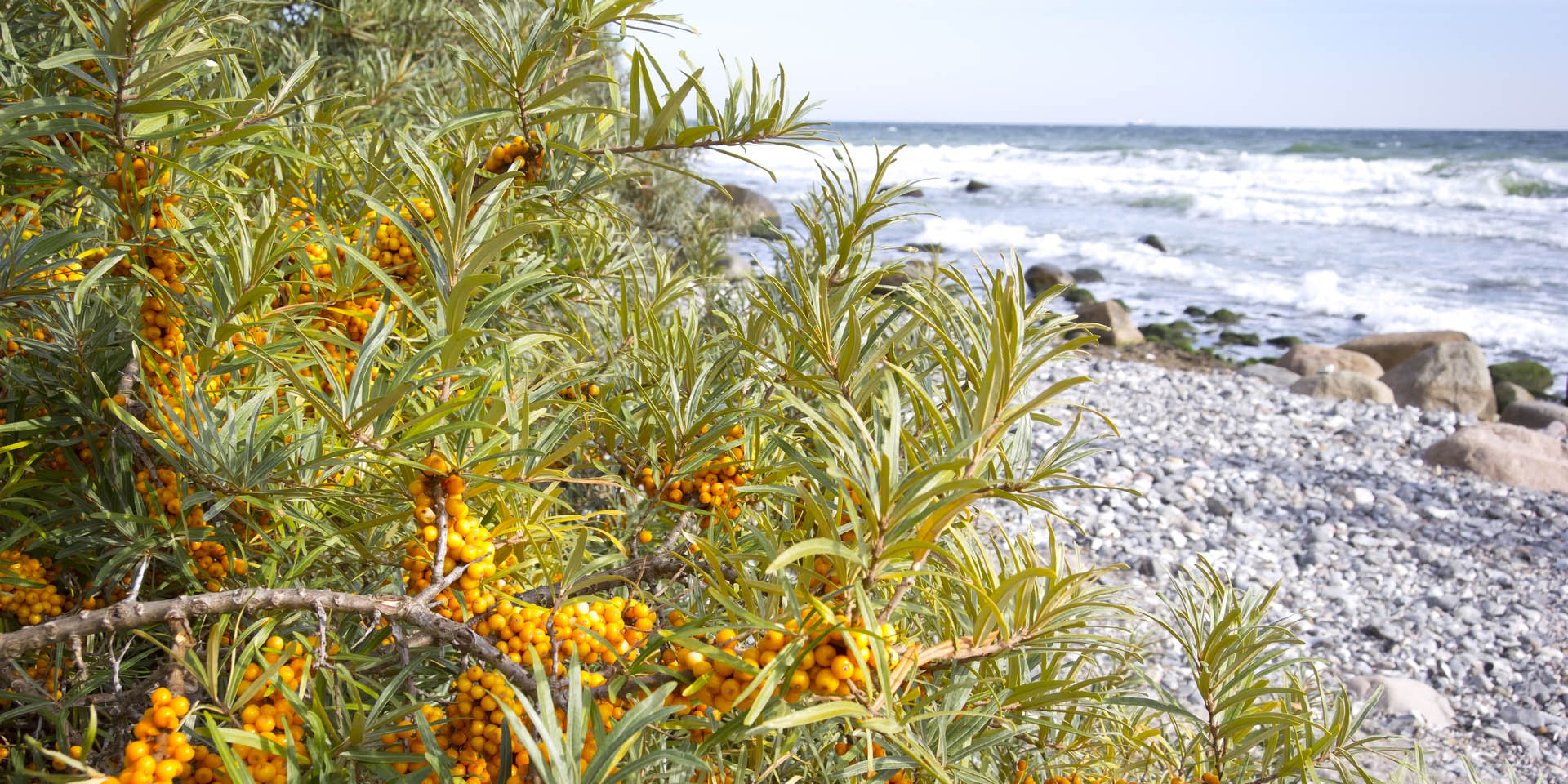
Sea buckthorn at East Germany's Baltic Sea
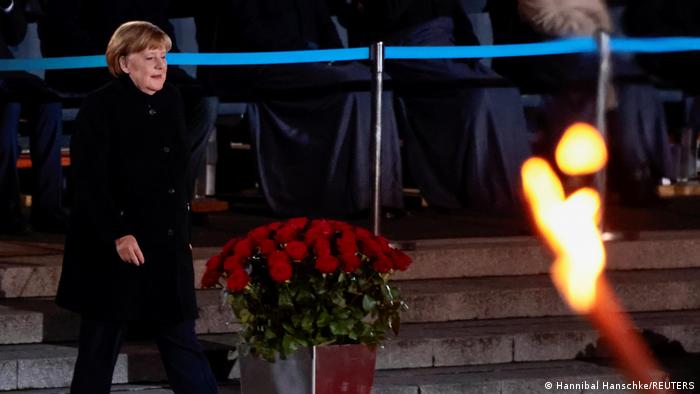
Merkel's grand tattoo
- Harvesting wild sea buckthorn on Ķīpsala Island, Rīga (16.9.2021)
This is a super short clip I recorded at the end of a very exhausting, but productive fieldwork season on Latvian sea buckthorn. In Latvia, unlike other states along the Baltic sea, these bushes are considered a neophyte, which have probably been eradicated during the reforestations in the 19th century. It has been growing “wild” on Ķīpsala Island in Rīga, i.e. uncut and nonharvested, for less than thirty years. It is not known who planted the sea buckthorn there. Today, the bushes have turned into trees, some as high as 10 meters. The thorny thickets are tended for voluntarily by Gavin, a studied anthropologist and ethnobiologist who runs the alternative cultural space Fukushima nearby. This space is open from spring till autumn, and if you are lucky you can get served Gavin’s fantastic, organic sea buckthorn juice with vodka. Write him a message on FB and enjoy!
- How Can We Survive Capitalism Using Sea Buckthorn? (09.07.2021.)
-
Interview by Jūle Rozīte, RSU English Language Content Editor
- On global value chains, reproduction & food with Prof. Ania Plomien @ ZiF (30.03.2021)
My interview with Prof. Ania Plomien, LSE, touched on global value chains, reproduction, food and gender. It took place at the close of my Elinor-Ostrom-Fellowship at ZiF–the Center for Interdisciplinary Studies in Bielefeld, Germany, on 30 March 2021. Prof. Plomien has been a 2020-2021 Fellow in the ZiF Research Group “Global Contestations of Women’s and Gender Rights”. As a feminist political economist she studies labour mobility across the EU, among others. The conversation tackled three questions: how to open the black box of the 'global'; who, what and why creates value, and the materiality of food.
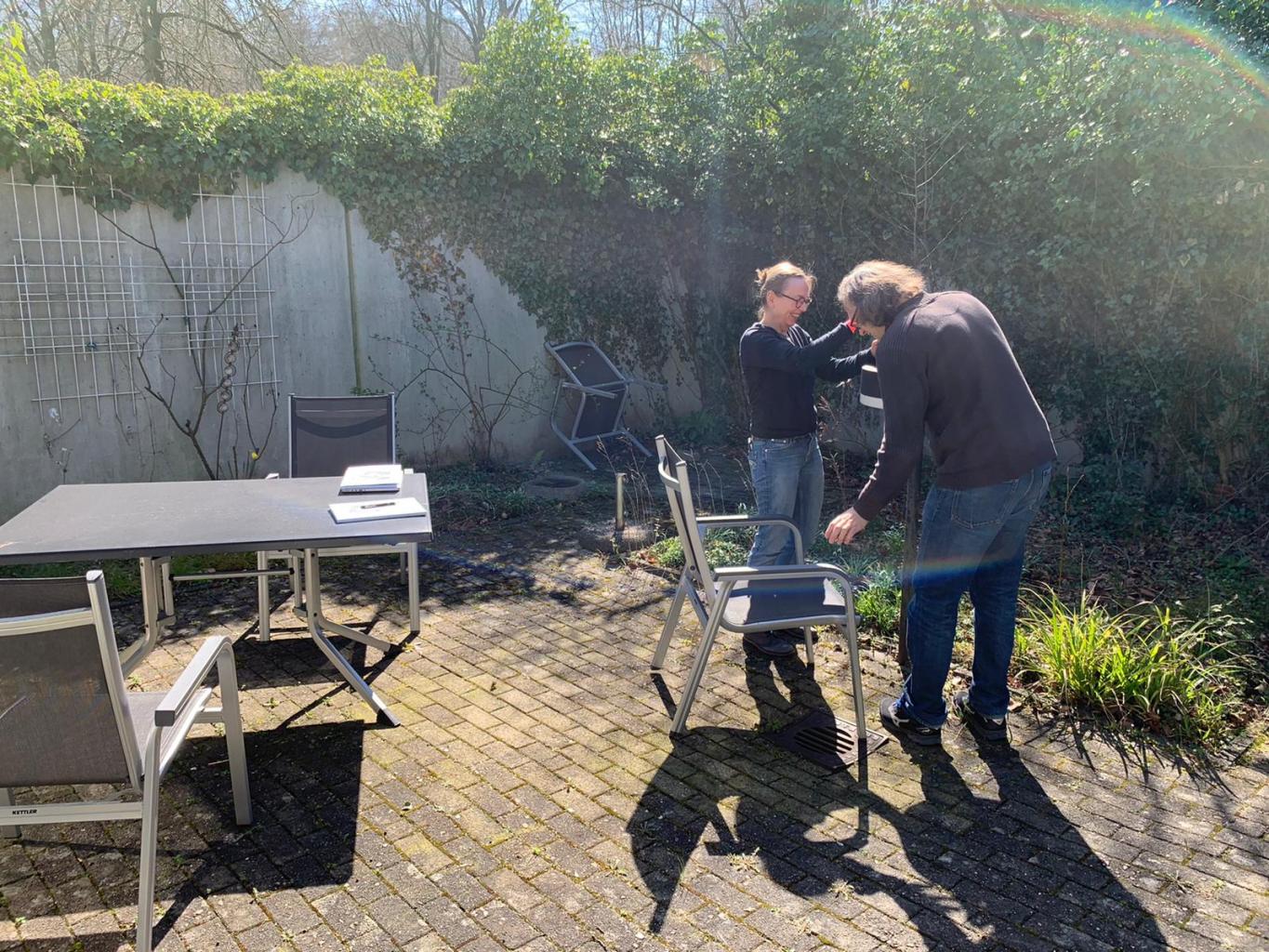
Preparing for the interview with Prof. Ania Plomien
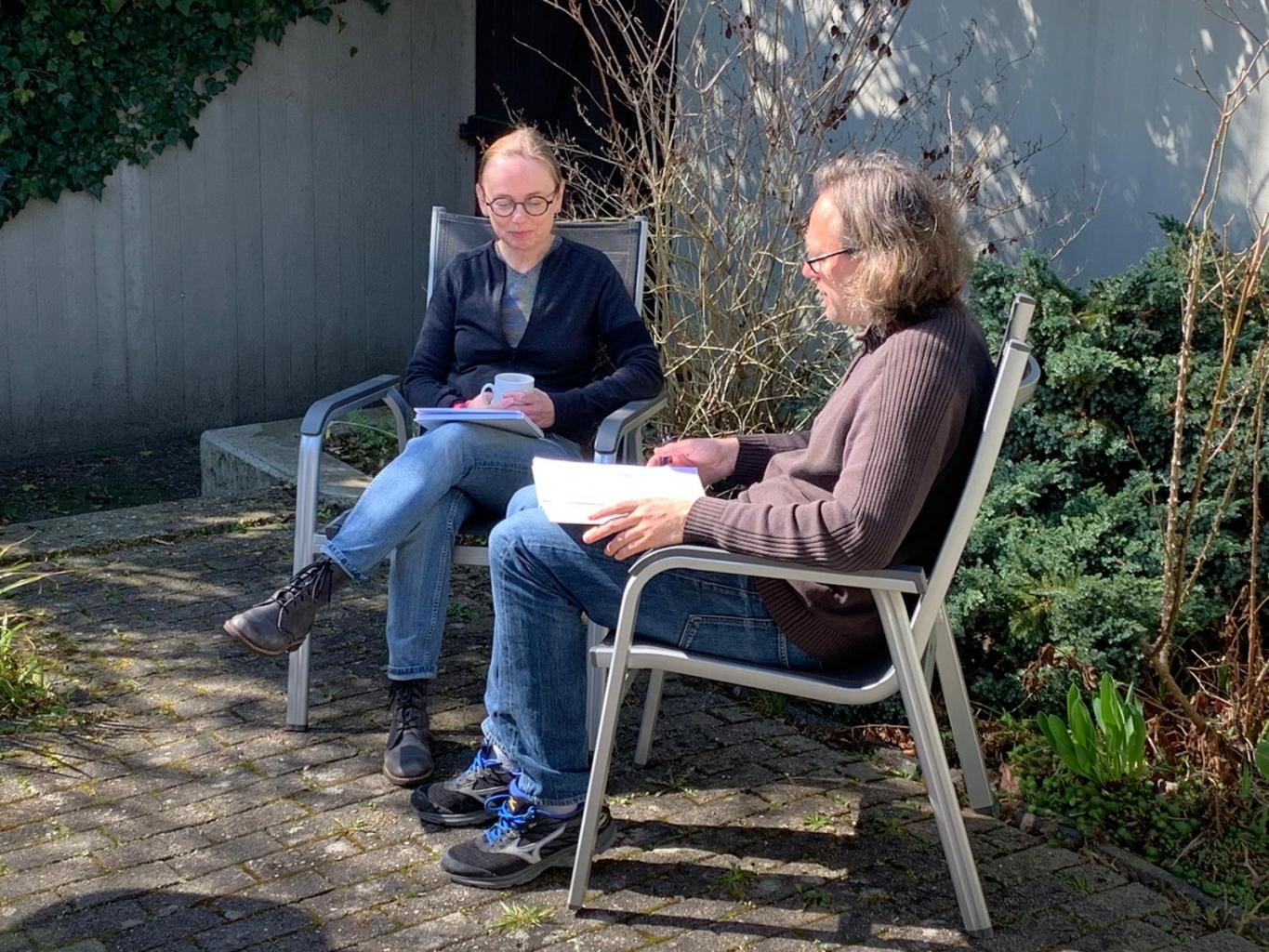
With Prof. Ania Plomien at ZiF
- Transcript of the interview
André Thiemann: So, dear Ania Plomien, I am so grateful for you to be so willing and so kind to formalise part of our conversation that we had here on GVC, agrifood, social security and gender during the last four months. We are here at the Center for Interdisciplinary Research and you have have been here a long-term fellow in the research group Global Contestations of Women’s and Gender Rights, and I have been an Elinor Ostrom Fellow for the last four months, and I have learned a lot from our conversations. So, Ania, can you quickly introduce yourself.
Ania Plomien: Sure. Thank you so much for inviting me to participate in the project. I am Ania Plomien, I am based at the Department of Gender Studies at the LSE in London, and I am working here with colleagues and independently on some aspects of my research on social reproduction and capitalist production.
André Thiemann: Yeah. It was such a pleasure to listen in to your work, and I really think that your perspective, a feminist political economy with an Eastern European perspective is very very important, and also we anthropologists of food can learn a lot when we engage with this perspective. So far I have uploaded different videos, and one of them included an interview with a member of a Latvian cooperative producing sea buckthorn, but this is the first with a social scientist. I am happy to have you and you set the tone. So, we decided to talk about three points which are important for my project. These are the ‘global’, value, and agrifood. And for each we planned to minutes. So, the first one would be to open the black-box of what it means, the global. What territoriality do we actually mean with this shorthand, the ‘global’?
Ania Plomien: Sure, the global is an especially important question now, through our first year of living with the Covid19-pandemic, because we have realised that the global is not only currently a matter of public health, but also is quite evident in terms of the movement of goods and mobility of people, and that has come to light through the mobility of people within national borders but especially, importantly, across national borders. And so, over the last years, I think people have really noticed within their everyday lives what global means, especially that the global has been interrupted in some ways, as well. And so people have realised how really interdependent we are across different localities. So, globality is experienced, I think, both when it works rather smoothly or when not inconsequentially, and we have felt also what it means how we experience globality in place in our daily lives. The global can also be seen as a process and when you think about the development of capitalism, it really is a process, the global constitutes capitalist development. And, I draw here on the work of David Harvey, who is a Marxist geographer. He came up with the term ‘a fix’, a fix to production systems…
André Thiemann: … a spatial fix…
Ania Plomien: Yes, spatial fix being one of them, where he draws attention to the point of capitalism being that, the extraction of value, and capitalist accumulation always comes up against some kinds of barriers. In order to overcome these kinds of barriers we have to find some kind of a fix. One of the fixes is moving production elsewhere in space, the spatial fix, would be when you move somewhere else to produce more cheaply so that value can be expropriated and accumulated further. But some things have to be continuously produced in space and cannot be shifted, so you cannot ship your grandmother, or you wouldn’t want to ship your grandmother to places where care is cheapter. What you do is you actually bring the global into the local. So, moving the producers of value, the laborers, is one example of this. I am working with Gregory Schwartz on Europe and how transnational labour mobility in care provision, food production and housing construction is being facilitated within the context of uneven and combined Europe, where different living costs as well as wages secure the movement of people across borders transnationally.
The one thing that I wanted to mention about the global and territoriality is that the global came really closer to home. So, you can think about all these nurses in the UK and Romanian construction workers in Germany, or Ukranian raspberry pickers in Poland, you have this entanglement of the global in play.
André Thiemann: This is fascinating. So, the boundary can become a border of capital accumulation, and Europe’s inside and outside borders can be shifted in different ways, they can be moved to the people, and so on. That is really interesting, and brings us to the second question, of how, and who and why produces value in our contemporary life. So, maybe you use the word valorization, do you find it meaningful for that?
Ania Plomien: Valorization – I have not really used in my work the term, but I draw in the production of value and in the realizing of value I draw on the tradition of social reproduction theory more, so you have feminist work that has worked with Marxist theories, thinking about or through how the importance of securing life and how it is interdependent with capitalist production really is drawing attention to the contradictions that we are seeing today in our social systems. So, value is always produced by the workers, by people who are working in the fields and care homes and construction sites, but their surplus values, anything that is produced above and over what they need themselves to pay for foodstuffs for example is always appropriated by capital. And capital needs to appropriate more and more of that value and social reproduction theory shows how capital both needs that labour, which is being done outside of the market, but at the same time infiltrates it. So, there is a contradictory relationship between what is being produced not according to market rules and how the market rules are trying to infiltrate this sphere. Market production, food production that is commercial necessitates the existence of life outside the market, but is trying to also get in there and extract more value. So, social reproduction is really affected by those fixes like the spatial fix by Harvey, but also other fixes like falling wages, the necessity of more and more people having to participate in the labour market, deregulation of labour markets, precarious forms of it. All these affect our ability to socially reproduce ourselves as individuals, as families, as households, because time and wages are affected as well. The transnational labour mobility then comes in in terms of what can be produced more cheaply, because workers need the kind of input. And so it is more and more difficult for households in Germany, where we are now, or in the UK, where I live, to realise all their reproduction needs in a way that enables them to flourish. And so a cheaper migrant labour comes in so that people that are working and busy with their employment have somebody to come in and clean the house. Or whether you go to a supermarket and buy a prepared meal for dinner because there isn’t enough time to do that at home. And so, securing livelihood compels more people to participate in the market, yet that kind of non-market activity is squeezed out and somebody has to do it.
André Thiemann: Right. This is fascinating. The anthropologists of value where I would also include now Anna Tsing, they have shown how the reproduction both by human nature, it is also done by more-than-human nature including mushrooms, raspberries, sea buckthorn, and the other ones you are interested in. So maybe you can tell me how much you think that the materiality of food stuffs – because this is what I or we did as research topic – how that might influence how value can be created or expropriated.
Ania Plomien: I think, well I am not an expert on food production, but I have interviewed a number of migrant workers who are transnational workers both who work in the food industry. So I had interviews with Ukrainian workers in Poland and Polish workers in the UK who work in the food production broadly defined, so they would be people who pick fruits on the farm or people who work in food processing plants to slice meat and produce sandwiches. And with some elements these activities cannot be automated, so Polish cherry pickers in Kent for example have to be on side to pick the cherries. It is those Polish pickers who come and pick the cherries, and not UK workers, because it is a very insecure form of employment…
André Thiemann: It is not because they have “nimble fingers”…
Ania Plomien: Somehow everybody in Poland and the UK tends to have 10 fingers and they tend to work similarly, so (we laugh). It is not a question of nimble fingers, but of the ability of people to socially reproduce. So, if you have a short season for cherry picking, it is possible that you can be on a farm that has cherries and other types of food where you can be employed for a few months, but what happens over the winter months, what happens in terms of farms being away from living quarters? People living in housing, not on farms. So, they have to have a farm and sufficient resources to commute. So, a short season, very hard labour, low pay, difficult living conditions make it unattractive for people who live in the UK and have their families in the UK, unattractive not only from the point of view that it is unglamorous labour, but because it is impossible to survive with higher rents and commuting to your work place. What happens with the transnational workers they defer their social reproduction needs. Because they cannot secure employment and wages where they live they take that few months away from their families, live in communal quarters, caravans often, on site on the farm often so that they are ready at 5 am in the morning to go to the field and pick the cherries. So this materiality of what kind of food stuff this is, when it is produced, how we as consumers like our perries picked in the shop, how they cannot always be processed – it is just a different product – does affect the labour relations and the labour conditions and the ability for people to secure a decent livelihood.
André Thiemann: So, the materiality that I was asking about is constituted by the humans and the plants, so they have to grow in a certain space, people have to feed themselves, they have to be housed properly, if you do that that according to high western standards it would be so expensive that the food itself might not be competitive in the market, which explains in a way the need to bring in migrant labour, but at the same time they are abroad at risk and they have to live in squalid conditions which really means they are affected by Covid19. So, the materiality of housing, of work and agriculture, they all have to be looked at together.
I was last week reading about Serbian raspberry pickers that are now hired by the UK which opens exactly for me also this new topic. So maybe we will – I hope that I do not have to sleep in a trailer to often – but maybe we will be able to continue the conversation in a different format, perhaps in the UK or in Poland, which is also a great raspberry producer.
Ania Plomien: If I could make one last point, with this materiality of the production we also then have to bring in the social relations of production. So there is an interaction between the materiality of the food, of the housing, and the social relations in how people are positioned vis-à-vis each other.
André Thiemann: Thank you so much. Dziękuję bardzo.
Ania Plomien: Thank you.
- Interview with Agnis Vikmanis of Baltic Seaberry at Sēja, Latvia (17.12.2020)
Shortly before the second lockdown in Latvia, Agnis from Baltic Seaberry allowed me valuable insights on the Latvian sea buckthorn production network. As part of the trip, we visited the sea buckthorn plots planted around 2013 adjacent to the farmstead already built by his great-grandfather, where we filmed this small interview. For more on their delicious products, see https://balticseaberry.com/.
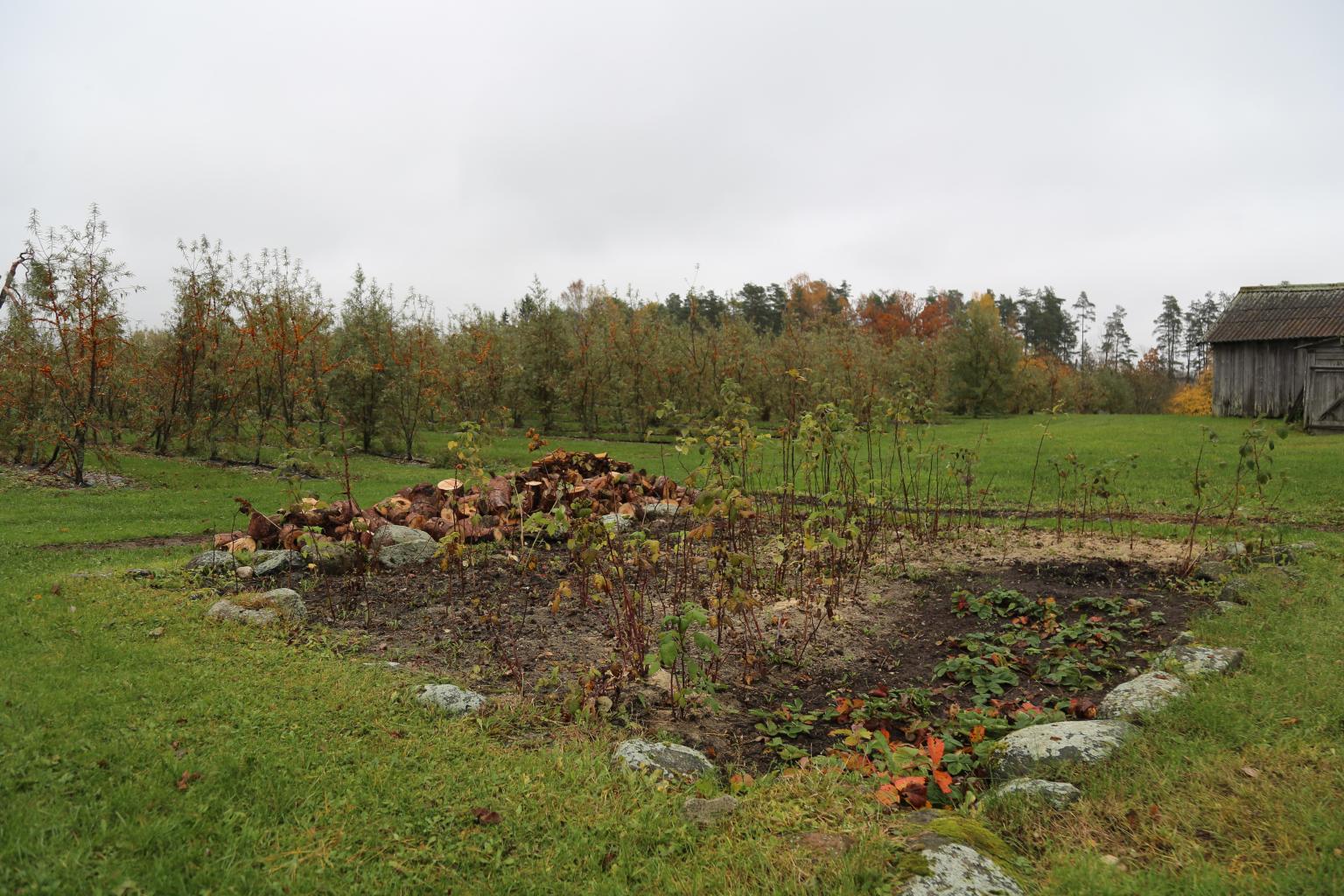
Strawberries and raspberries in front, sea buckthorn in the back
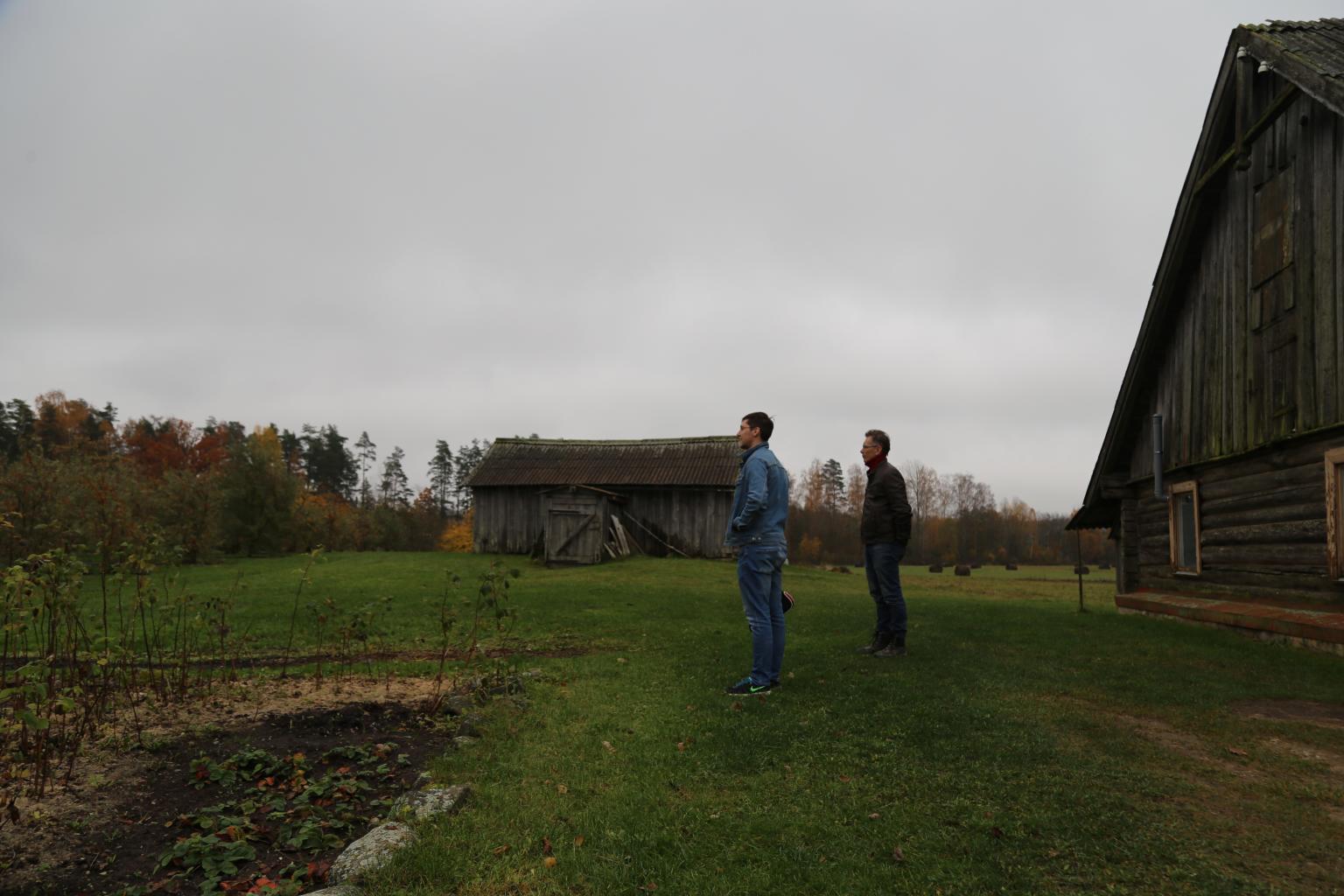
Agnis Vikmanis and Livis on the farm
- Gossamer reflections on sea buckthorn in Germany and Latvia (30.9.2020)
Late summer and early autumn are the time of the sea buckthorn harvest. During this time, I led 9 interviews with scientists, breeders, producers and processors in Eastern Germany and Western Latvia. Among the most interesting issues and problems emerge entanglements of post-socialist transformation, international scientific collaborations and environmental change.
With Kārlis and Reinis Blūms (covered) in their nursery garden by the river Venta
Very ripe sea buckthorn turning dark orange
- What happened in BiH this spring? Thoughts on the ‘raspberry-respirator affair' (30.06.2020)
This vlog relates a corruption story from Bosnia-Herzegovina from spring 2020, where the federal government ordered in the midst of the Covid19-pandemic unusable and overpriced respirators for its population, via the local raspberry enterprise “Silver raspberry” (Srebrna malina). I thank Elissa Helms and Linda Austere for independently making me aware of this affair.
- Pandemic, manual work, and possible effects on agrifood chains (01.04.2020)
Many greetings from my home city Berlin where I took refuge during the Covid-19 pandemic. In this short post, I reflect on the possible effects of the pandemic on agrifood chains. I hope to do some limited fieldwork in Germany in the near future. Stay tuned.
- The sweat of the raspberry plantation – Pecha Kucha presentation (30.12.2019)
As I reported in my regular blog, I attended an Environmental Anthropology network conference and presented my research with a Pecha Kucha, a 6min40sec presentation, in which every 20 seconds a new PowerPoint slide shows up. A good friend told me afterwards she now knows much better what I work about. So, I thought, why not produce a little video so that others can also get acquainted with my work.
Over the recent holidays I found the time to produce the video, with a little help from a friend. So, here it is, enjoy watching!
- Project activities
- Letter by the organizers of the 6th Baltic Summer School of Anthropology – Global-to-local food chains: Food sovereignty and climate change (25–28 August 2022)
The summer school is over, and we are just so overwhelmed and grateful for all the people we had, all the places we visited and all the events that took place! These were the questions we tackled:
Why do people care about ‘good’ food? Who can nurture our communities (has food sovereignty)? Since the 1970s, multinational corporations like Unilever and supermarket chains like LIDL began to globalize: As “value chain drivers”, they outsourced food production to ever more external producers, while keeping the strategic research & development and the profitable marketing in-house. Along such globalizing food chains, we may distinguish eleven links: science and technology, extraction, production, processing, packaging, logistics, finance, wholesale, retail, marketing and consumption. Concerned about health and safety, environmental issues, financialization and societal inequality, counter movements have proposed a quality turn or short food chain initiatives. But like all successful systems, corporate food began to assimilate these alternatives, attempting to transform them into market segments for an affluent, discerning clientele.
The event hosted 40 B.A., M.A. and PhD students who presented their research, attended seminars, and participated in small group-fieldwork with different actors along the food chain like scientists, producers, processors and traders from Cēsis. The idea was to strengthen the participants’ practical knowledge and strategic thinking about the nexus between climate crisis and food sovereignty. It brought together students and scholars from the Baltics, Czech Republic, Germany, Europe and beyond, who study social anthropology and related disciplines for networking and initiating future collaboration.
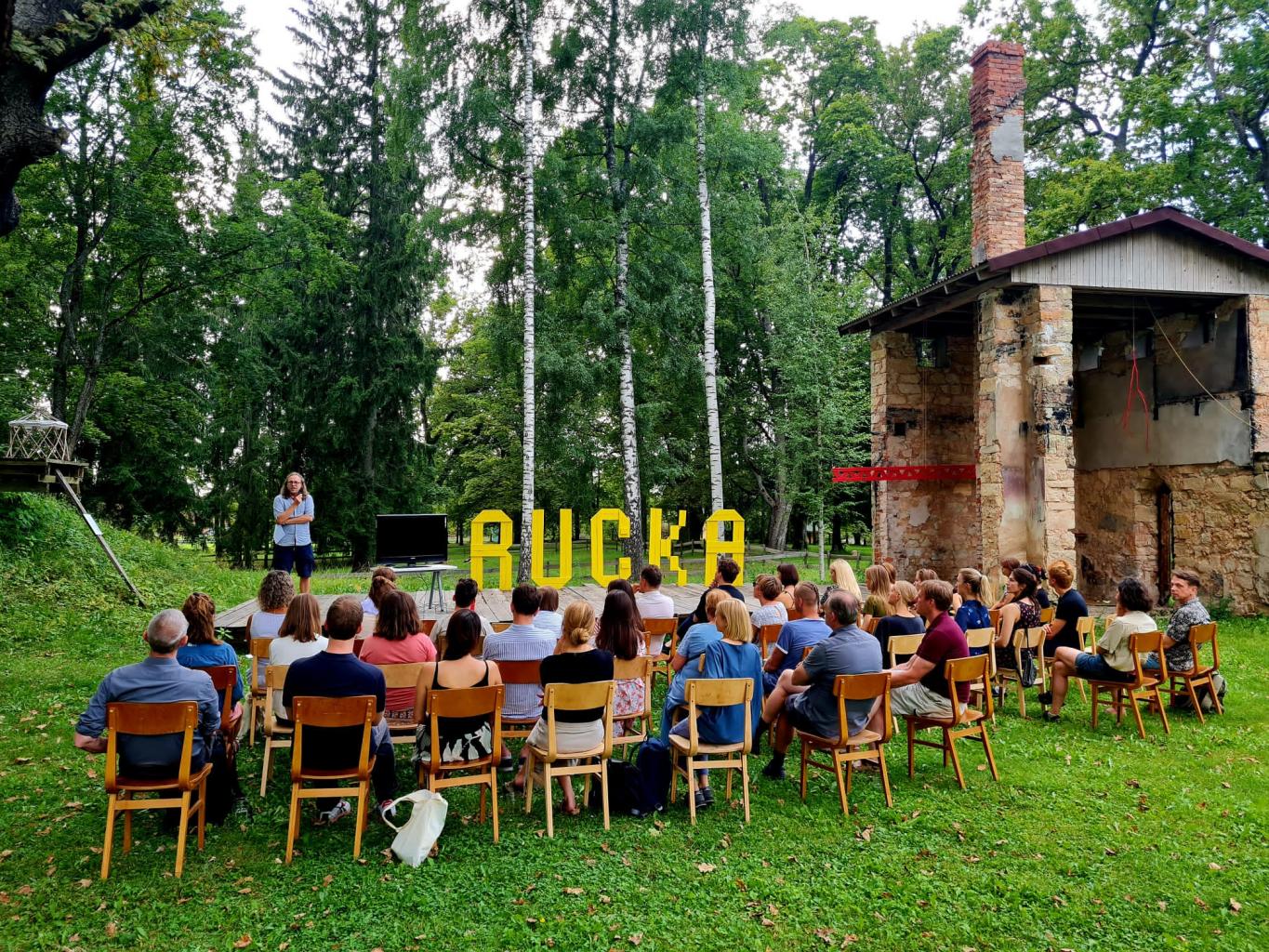
Introductions
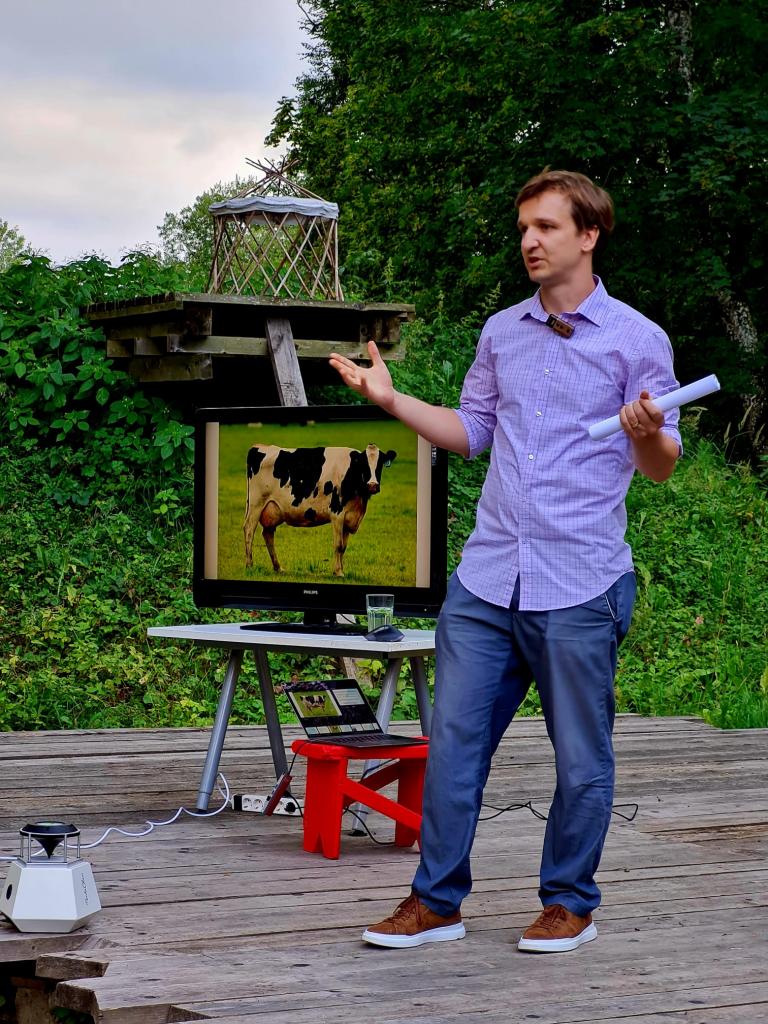
Keynote by Miķelis Grīviņš

Preparation of fieldwork shop
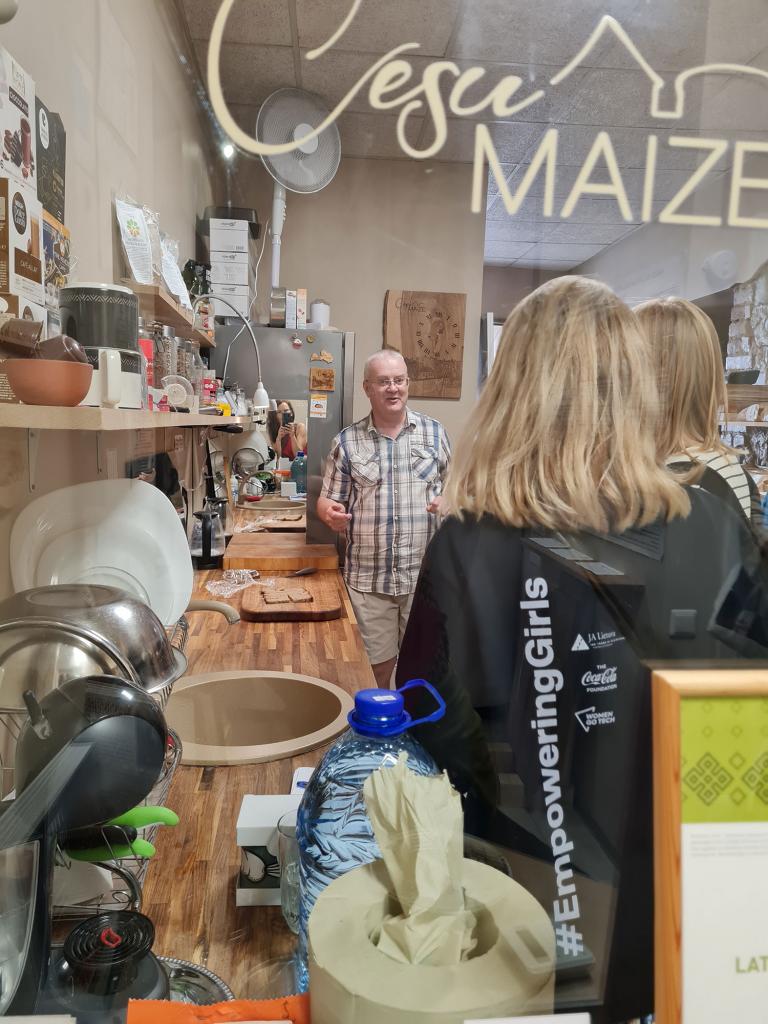
Research at the Cēsu Maize bakery
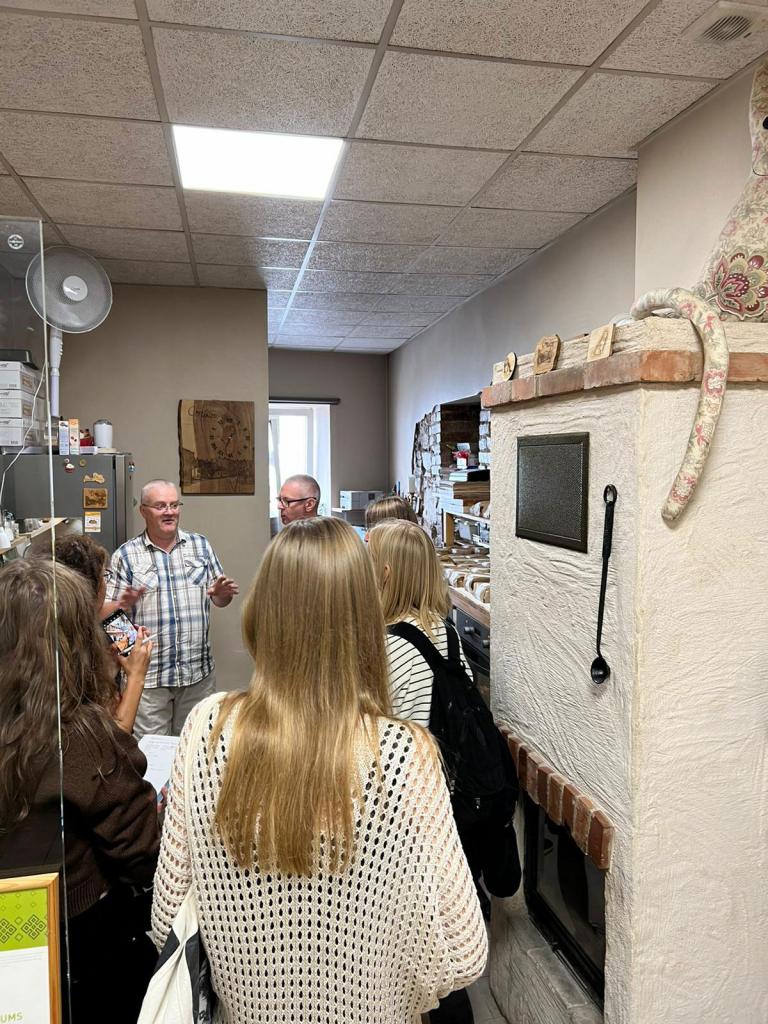
The subsidized participation fee was 80 EUR. Students from the Baltic states qualified for a further 25 % reduction (60 EUR). This fee included an academic programme, lodging in a shared dormitory room, and full board (breakfast, lunch and dinner).
As in the previous summer schools, the venue was the Rucka Artist Residency in Cēsis, Latvia, a beautiful manor hidden in the middle of Cēsis, a vibrant medieval Latvian town placed in the center of Gauja National Park – the oldest and largest natural park in the country. Rucka hosts various artist residency projects, academic summer schools and symposiums. For more information, see http://www.rucka.lv/en/. The weather was great and so all presentations were held outside. On the evening of Saturday, 27.8. we also joined the MALA street-festival in the center of the old town.
First of all we want to say huge thank you to all the participants, all of the lecturers we had this year, and all the Cēsis workshop hosts from Cēsu Maize (bakery), Labas saknes (producer of veggie snacks), Smilga cakes & wine (pastry shop), Cēsu Pluriversitāte (environmental learning place and garden under the blue sky), Trimpus (craft brewery), local supermarket Solo and Cēsis farmer’s market, and Vides risinājumu institūts (private food and environmental research institute)!
We are humbled by the bright and awesome people from 11(!!) countries that were part of this amazing summer school! We are thankful to our lecturers Mikelis Grīviņš, Sandra Calkins, Bertram Turner, Daniela Ana, Nicolette Makovicky, Ester Bardone, Eugenijus Liutkevičius, Agnese Bankovska, Guntra Aistara, Paride Bolletin, Agnese Gaidelione and Māris Jansons.
Additionally, we say thank you to our partners from the Baltic-German University Liaison Office, Cēsis municipality, Rīgas Stradiņa universitāte (Rīga Stradiņš University) and Latvian Association of Anthropologists (Latvijas Antropologu biedrība) – without you all it wouldn’t have been possible!
We are also so very happy about our team where students and scholars from both Rīga Stradiņš University and University of Latvia were working together flawlessly. We – Elizabete Grinblate, Ilze Mileiko, Laura Cipruse, Liene Rācene-Riekstiņa, Egils Stūrmanis, Līvis Lāma and Martins Bitans, the team of organizers – salute to our team leader Andre Thiemann for his never ending sparks of inspiration!
Special thanks to our great chef Oleg Serafimov and his team for making this even more pleasurable.
Last not least, a sample of feedback from our participants, answering which part of the program they liked best or inspired them most: “The main lectures and the [fieldwork] workshop”; “The venue and fieldwork. As well as fieldwork presentations”; “Meeting the people and informal conversations/ discussions! Learning and sharing experiences with peers (particularly other ‘beginner’ anthropologists) is very useful”; “Plenty of space for questions and discussions after the presentations (discussions were great). The possibility to present my student research - the feedback was incredibly valuable and it helped me greatly with my work. Loved the Mala festival as well as an opportunity to spend some time together outside of ‘school’ surroundings. I loved the sheep noises during the presentations as well.” For future summer schools, participants expressed the wish that the program could be a bit longer (5 days instead of 4), allowing more time for teaching and breakout sessions and more open space/free time (e.g. longer lunch breaks, more fieldwork, or explorations of the city).
Thank you all, Viva la Rucka, it’s been a ride!
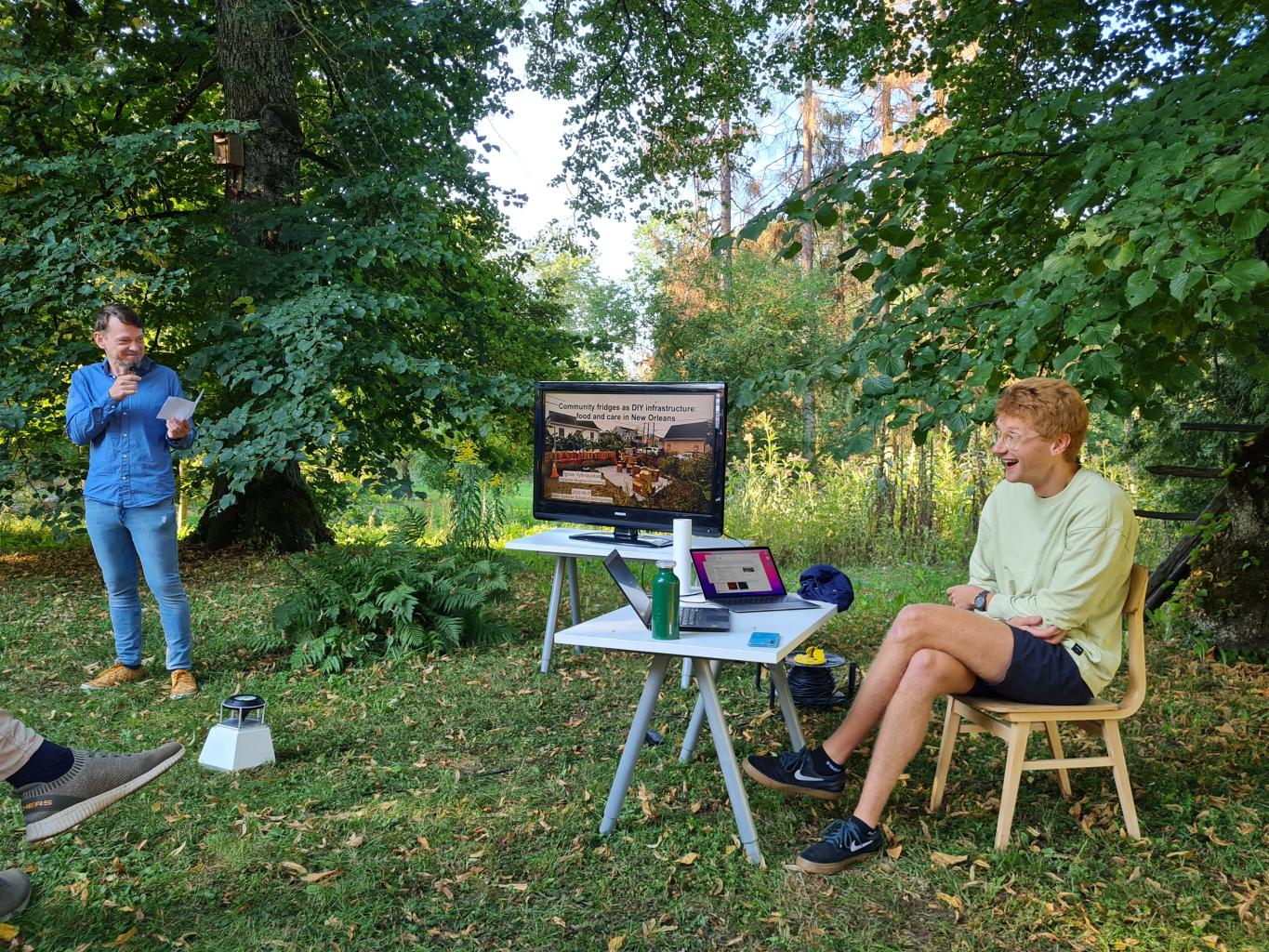
MA student research Ignas Vyšniauskas
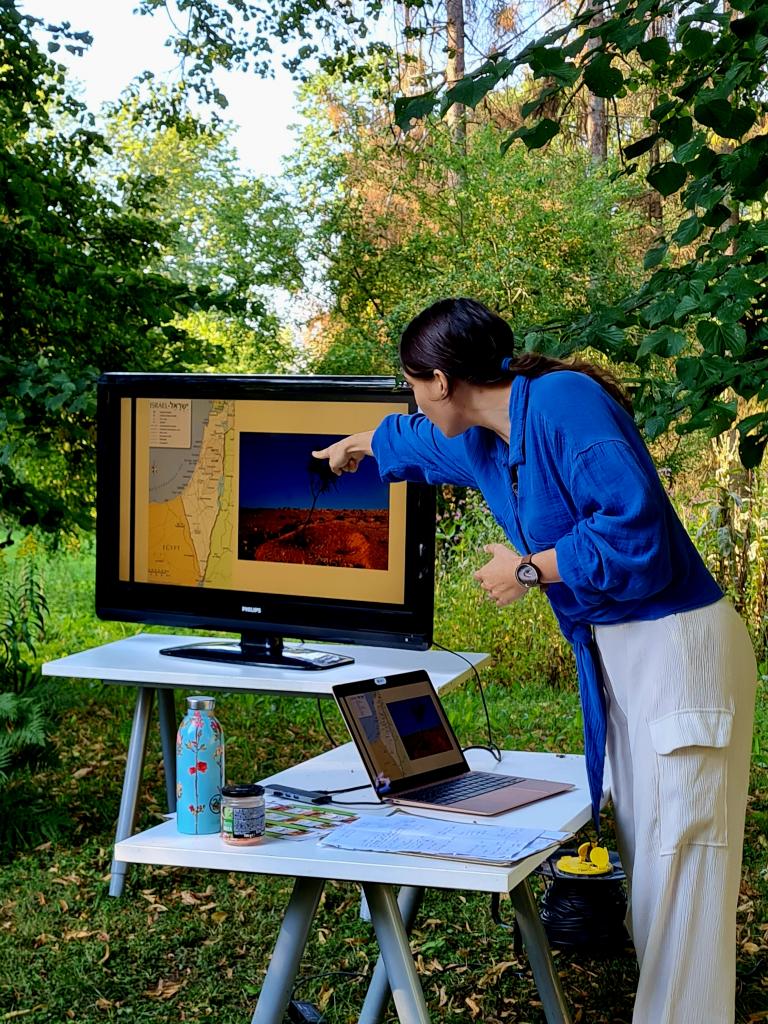
MA student research Lucya Passiatore
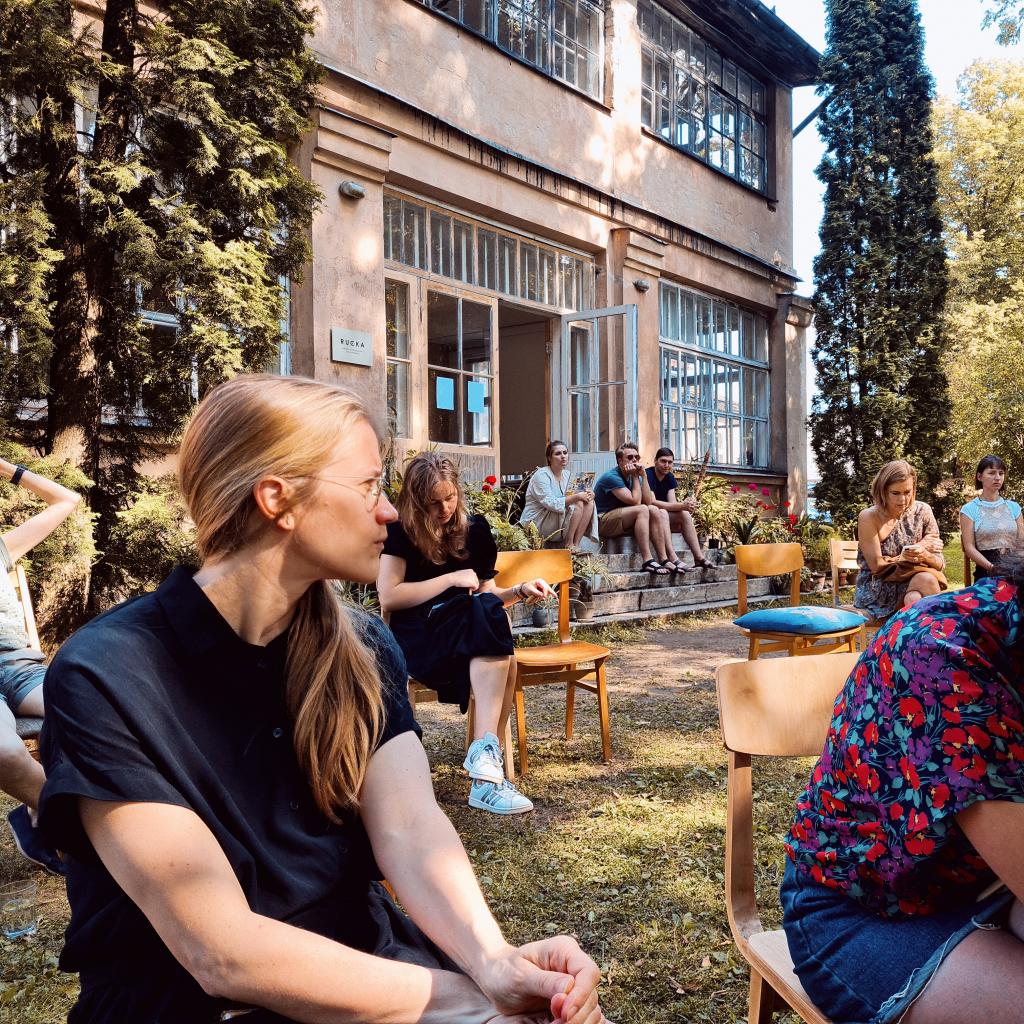
During a lecture
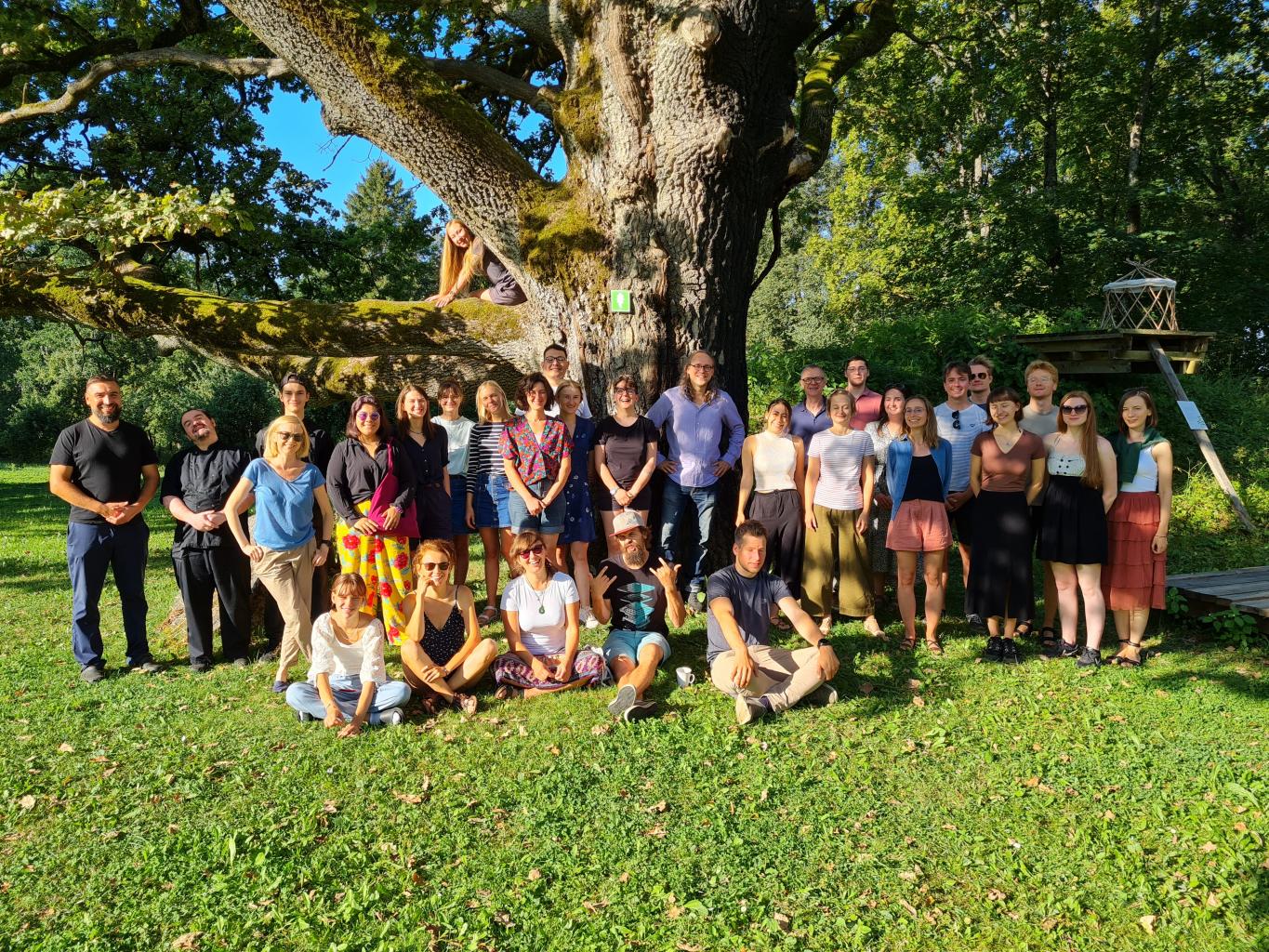
Day 3 snapshot

Organizers and chef Olegs
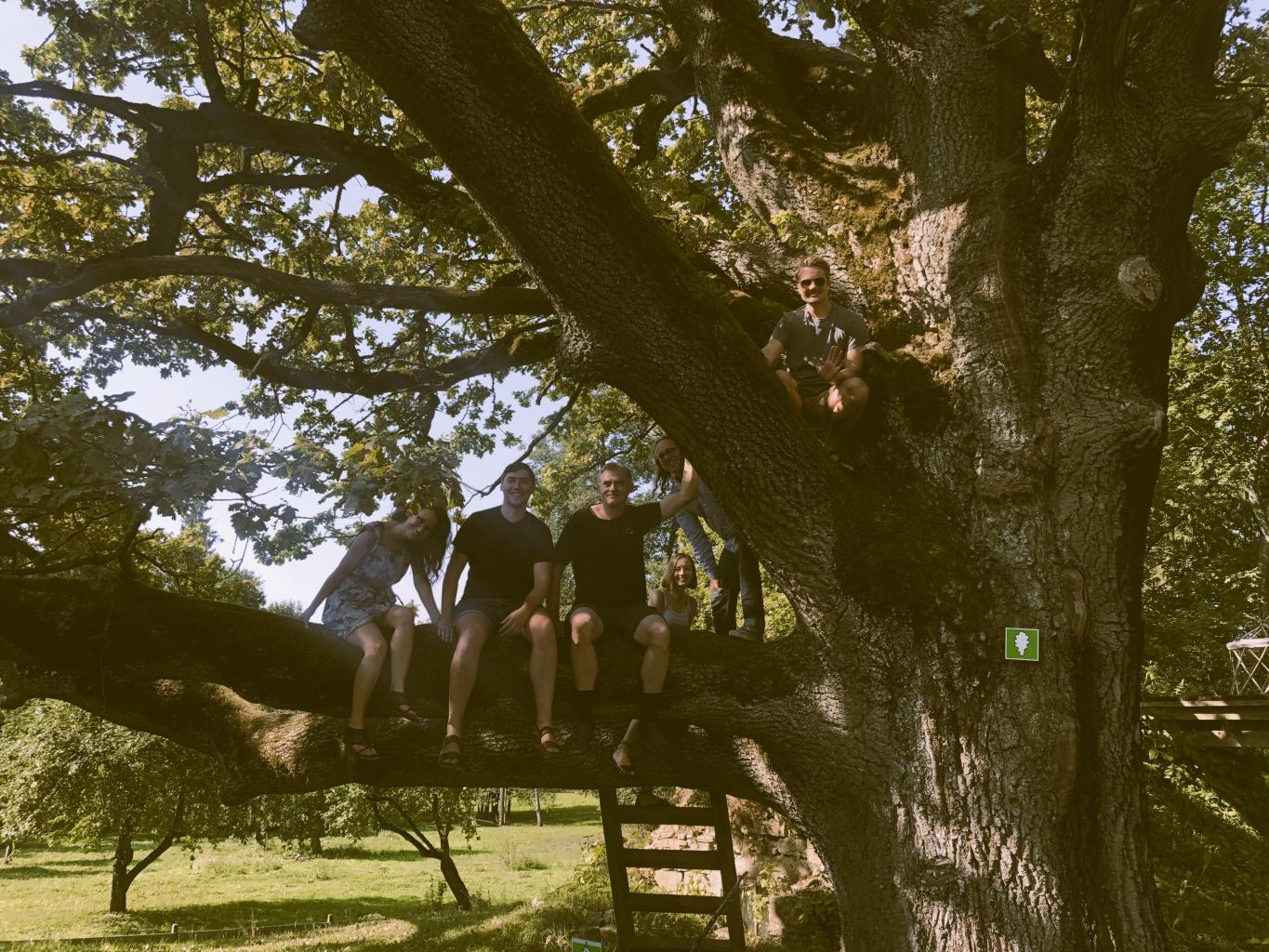
The organizers
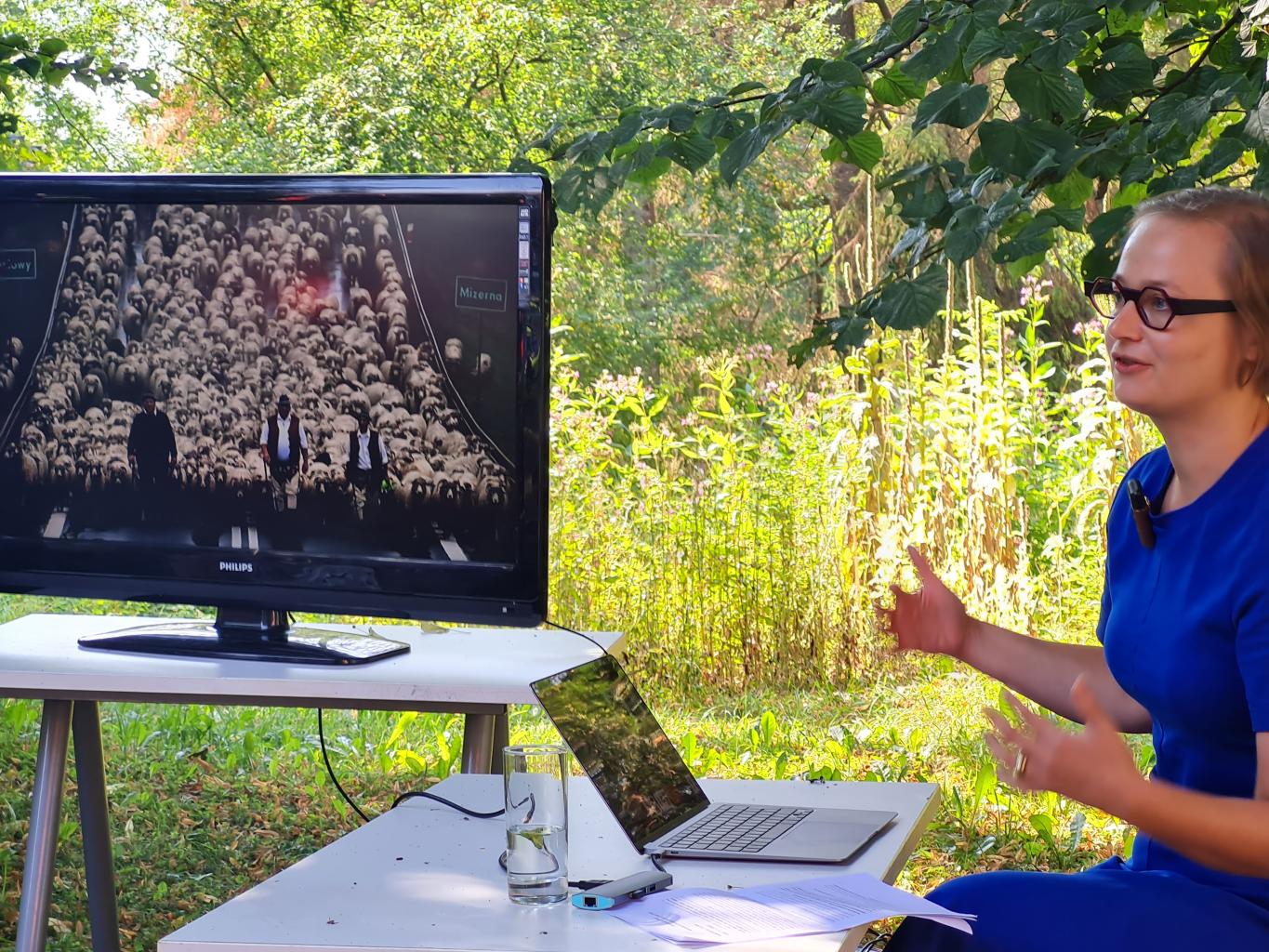
Lecture by Nicolette Makovicky
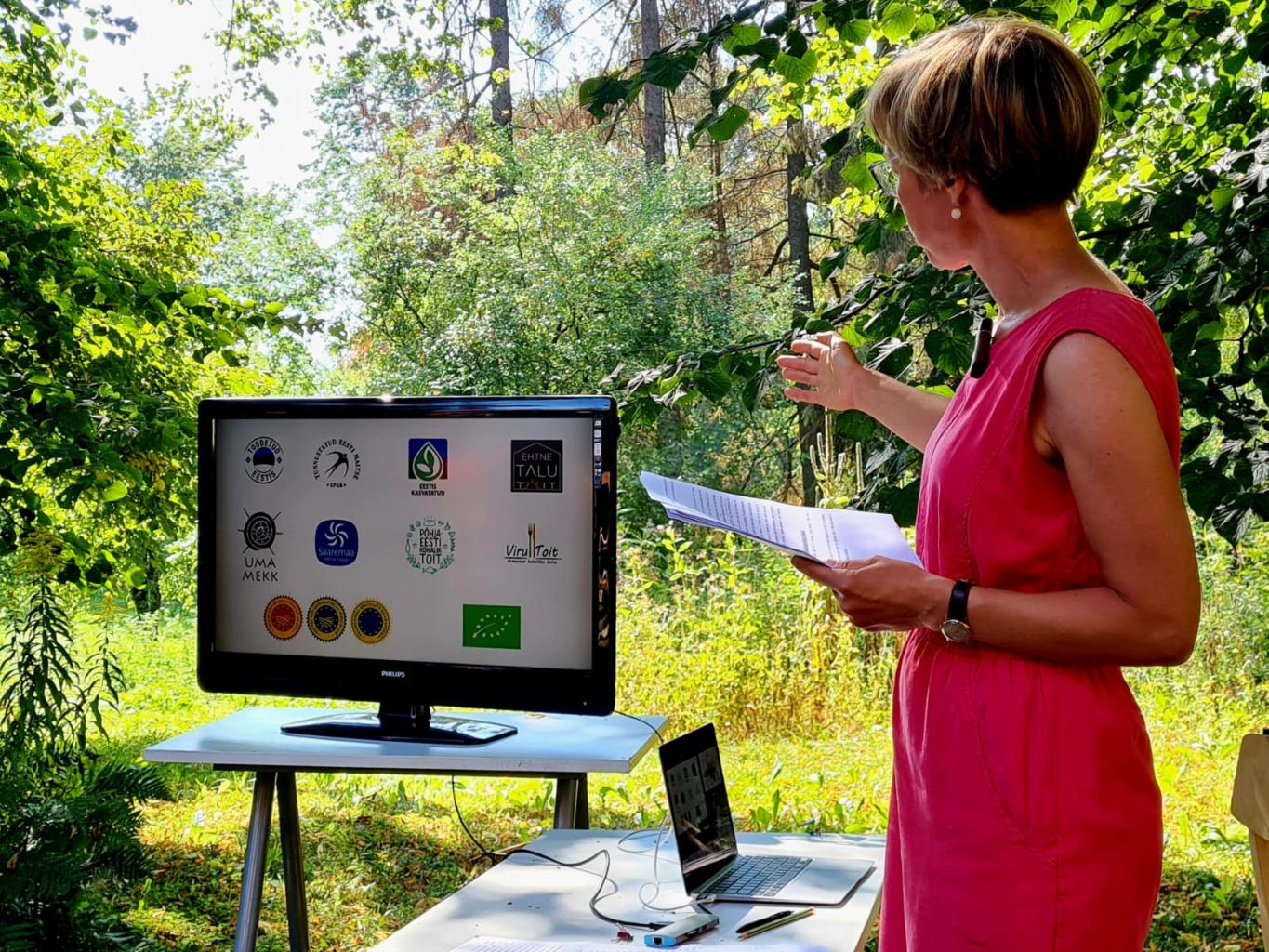
Lecture by Ester Bardone
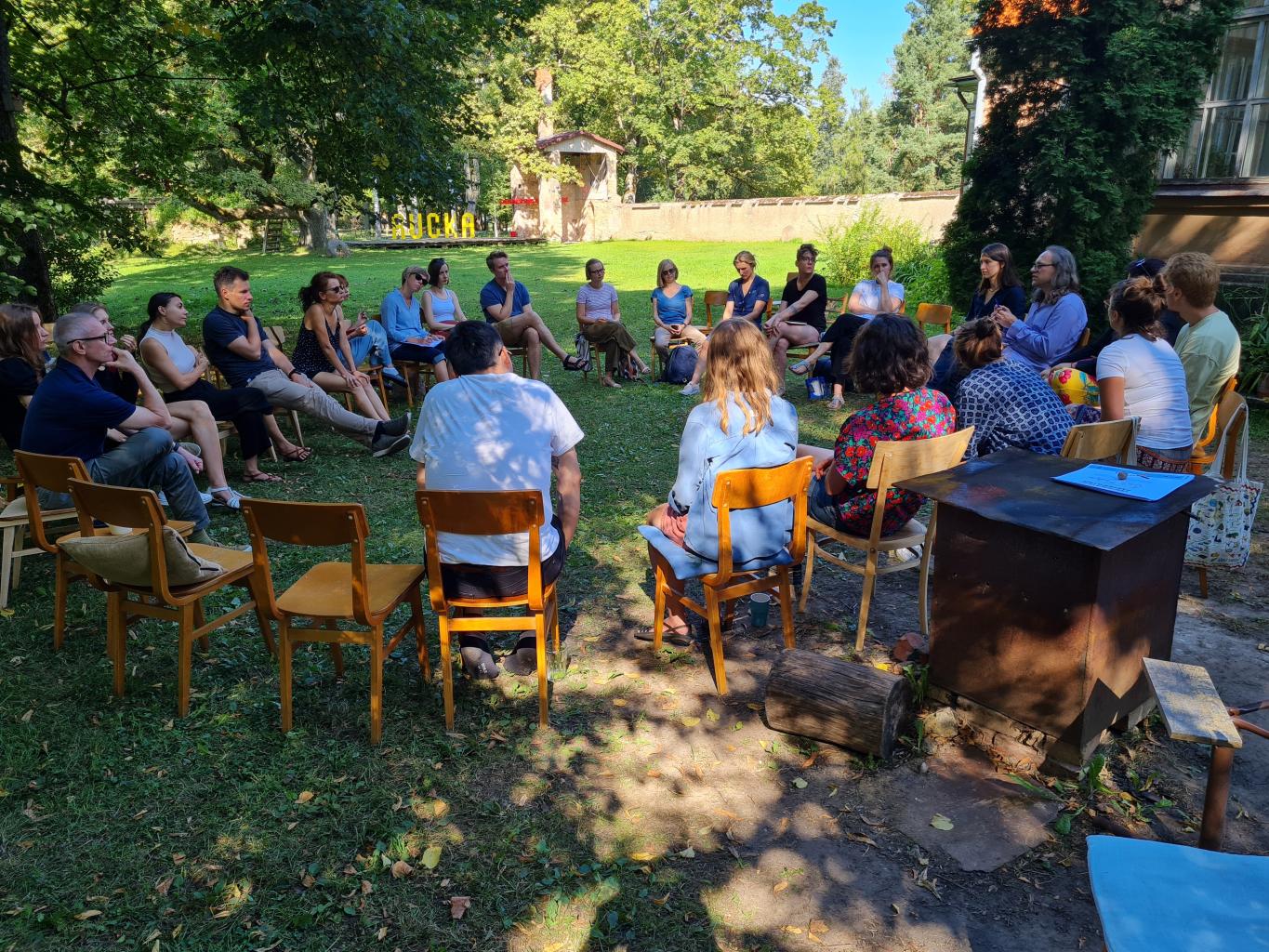
Plenary session
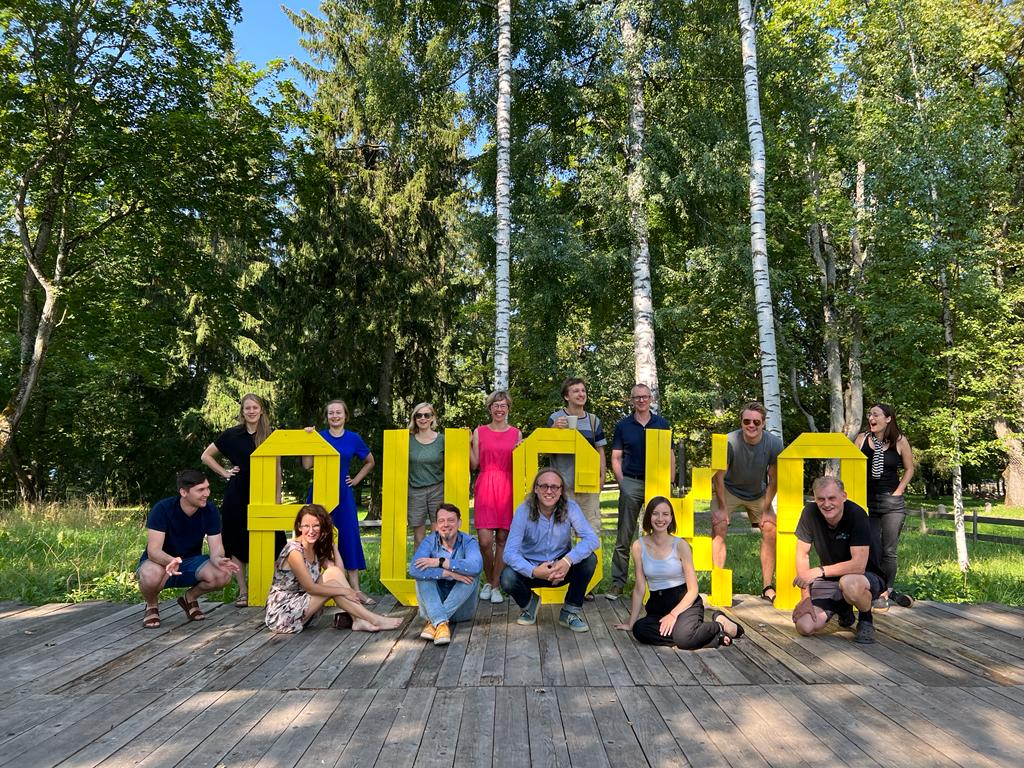
Lecturers and organizers
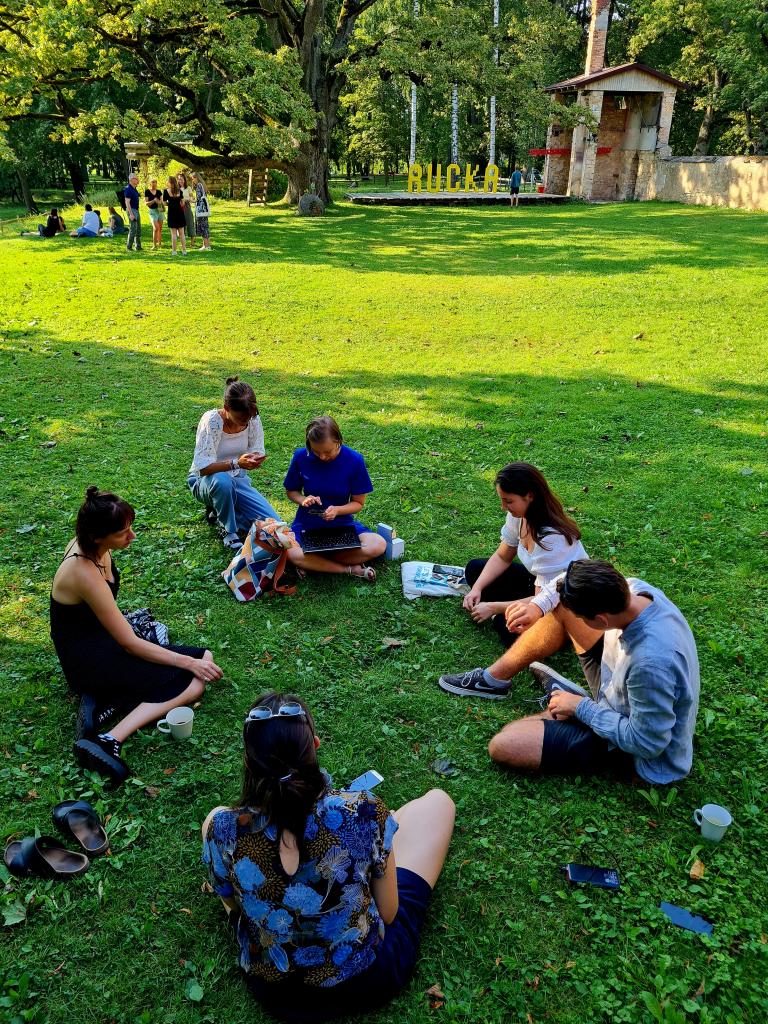
Preparing a presentation of workshop findings
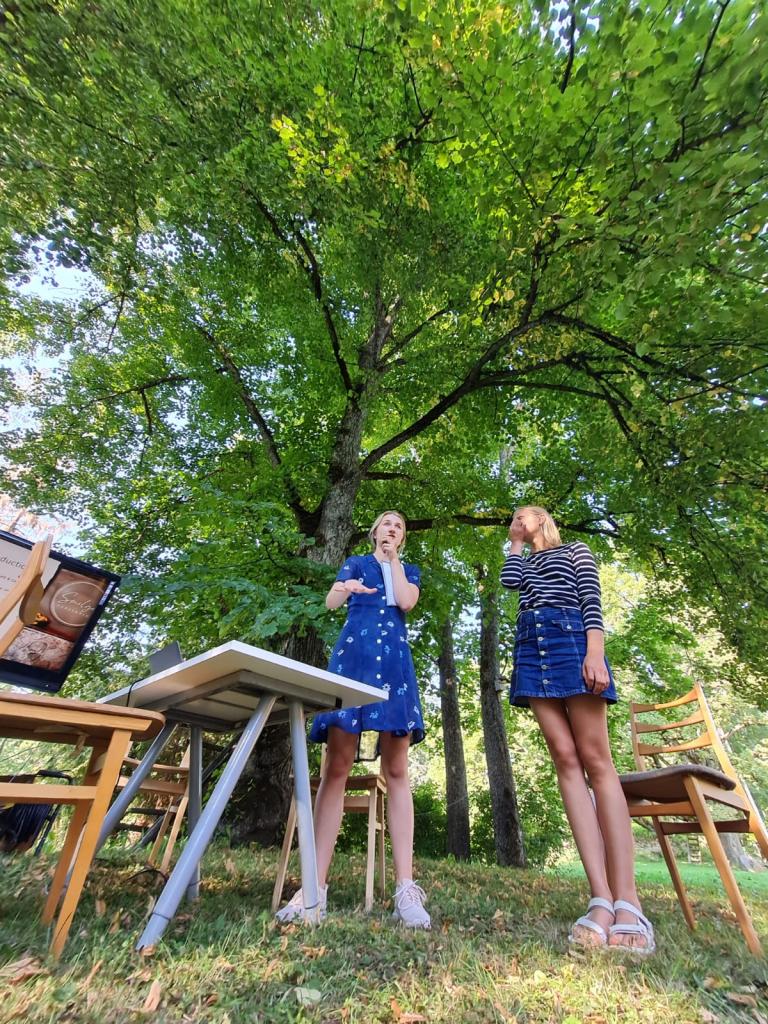
Workshop presentation
For more information on the summer school, its problem statement, lecturers, and a sample of pictures from the event, visit https://www.facebook.com/BSSoA/.
The organizers of BSSA 2022
- Oxford during Hilary Term, January-March (12.03.2022)
Here comes the final update on my Academic travels (and travails). From 15.1 until 12.3., I have been an Academic Visitor at Oxford University’s Russian and East European Studies (REES), part of the Oxford School of Global and Area Studies (see here).
I visited REES under the mentorship of Course Director and Departmental Lecturer Dr Nicolette Makovicky. My visit coincided with ‘Hilary term’, the second trimester of the academic year that lasts in Oxford a short and intense eight weeks. The high workload of Oxford University’s denizens – lecturers, researchers, graduate students and so on – is interspersed with peculiar academic rituals. Among these are the so-called ‘high-tables’, formal dinners at one of the 39 Colleges, where wearing a black smoking is required and members from different College invite each other reciprocally (and the odd guest from outside). After a typical two-hours dinner in the refectorium follows the less formal dessert in the staff room, with coffee and cake, fruits and Sherry, today sometimes replaced by organic locally sourced apple juice.
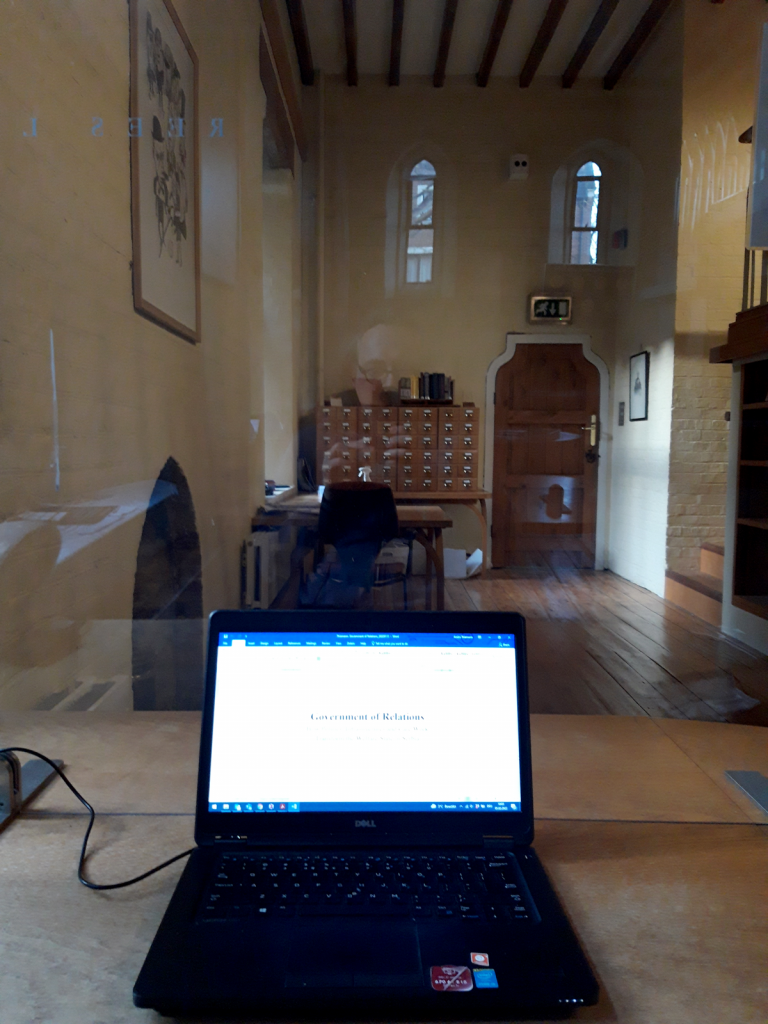
Russian and Eurasian Studies Center Library
For a beautiful insiders’ account by a former Spanish Lecturer at All Souls College, read Javier Mariás’ All Souls.
Another peculiar pastime is rowing. For a few trainings I joined the Open Division 2 of St. Antony’s Rowing Club (REES is affiliated with St. Antony’s College).
Academically, I discussed my work with colleagues from Russian and East European Studies, Anthropology, and the Social Policy Research Centre. On the publishing front I have good news, too: I corrected the flags and await the imminent publication of Thiemann, A. in press. Commodity Chains. in A Handbook of Economic Anthropology, 3rd edition, edited by James G. Carrier: 368-378.
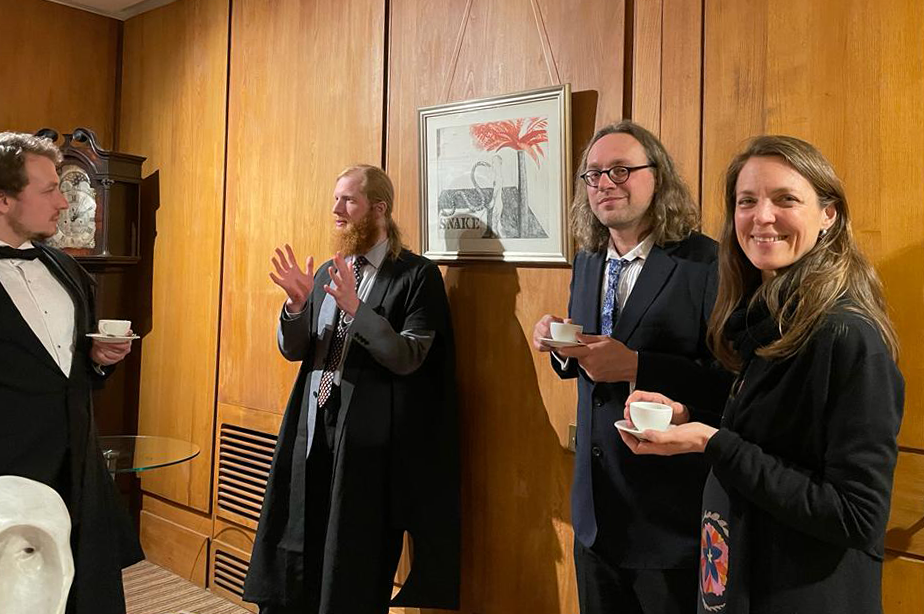
Coffee after high table
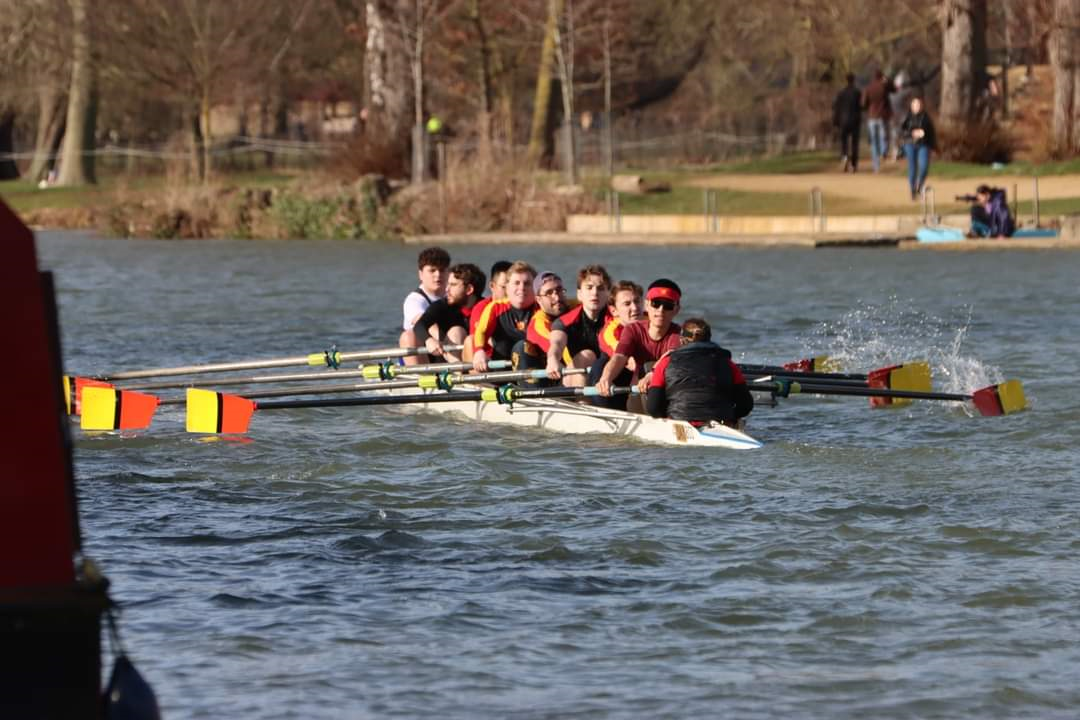
Rowing club St Antonys O2
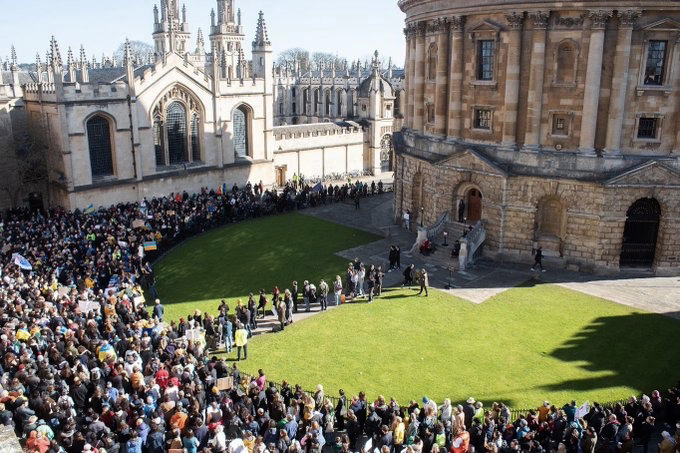
Antiwar Demonstration in Oxford
Sadly, the last 20 days of my sojourn were overshadowed by the war in Ukraine, a tragedy for entire Eastern Europe.
- Guest Fellowships in IISL Oñati, Spain and MPI Halle, Germany (12.01.2022)
The last three months I have been on the move as visiting researcher. I kicked off academic mobility with a one-month fellowship at the Oñati International Institute for the Sociology of Law in the fascinating Basque country. From 17.10.2021 until 14.11.2021, I revised two publications, re-submitting one, and presented my research in the M.A. seminar “Methods in sociolegal Research”.
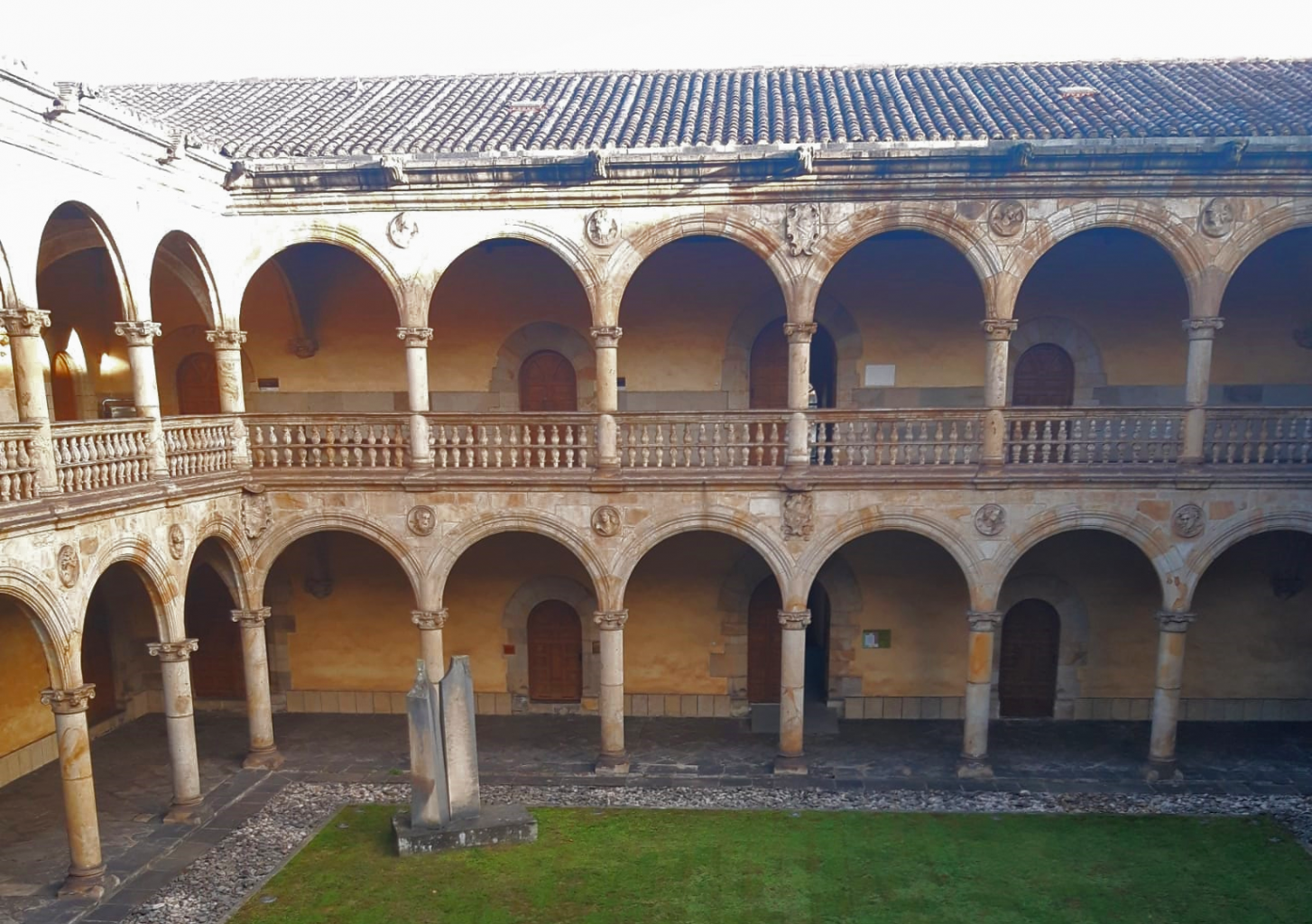
The Oñati International Institute
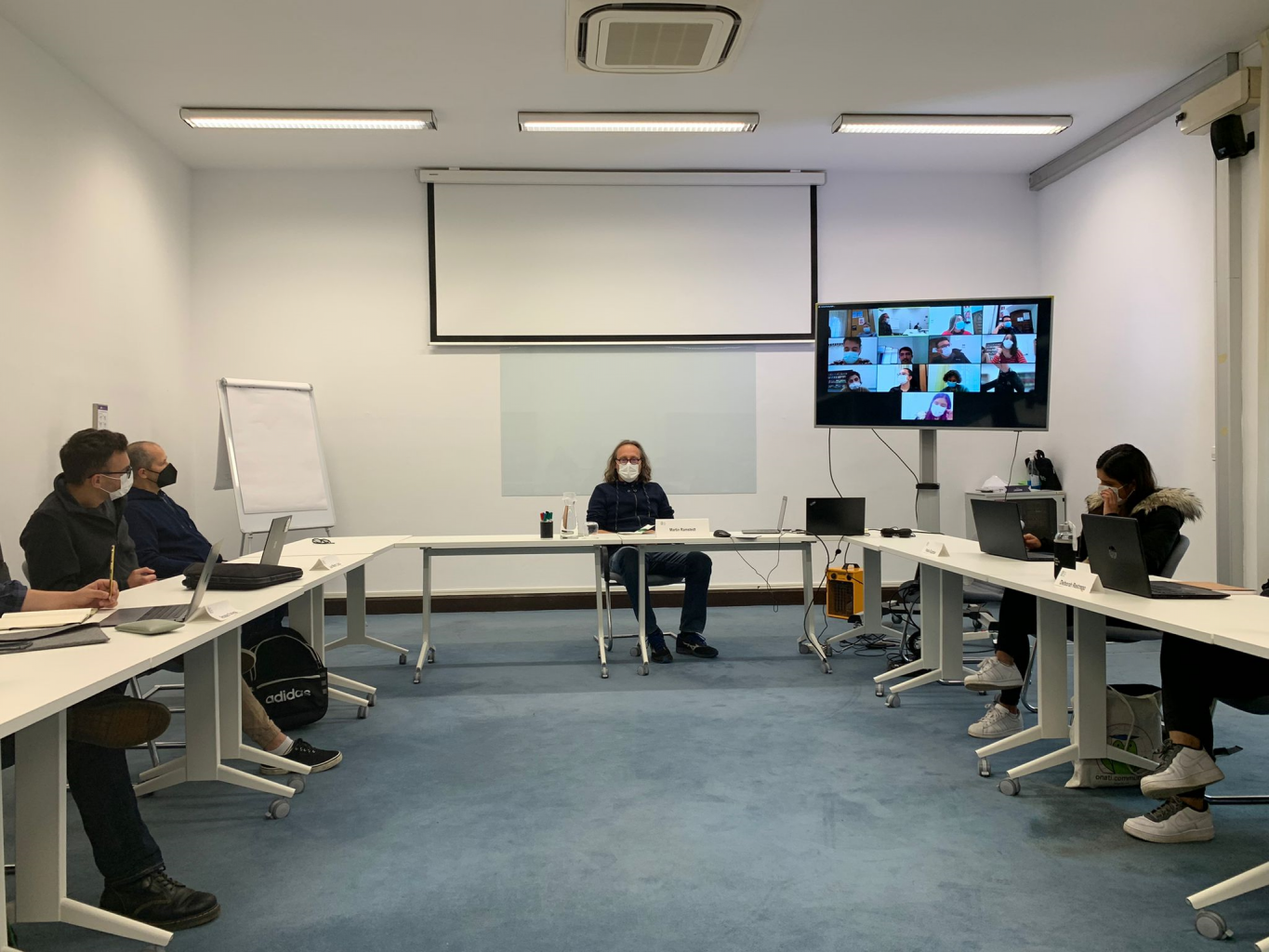
Presenting at Oñati
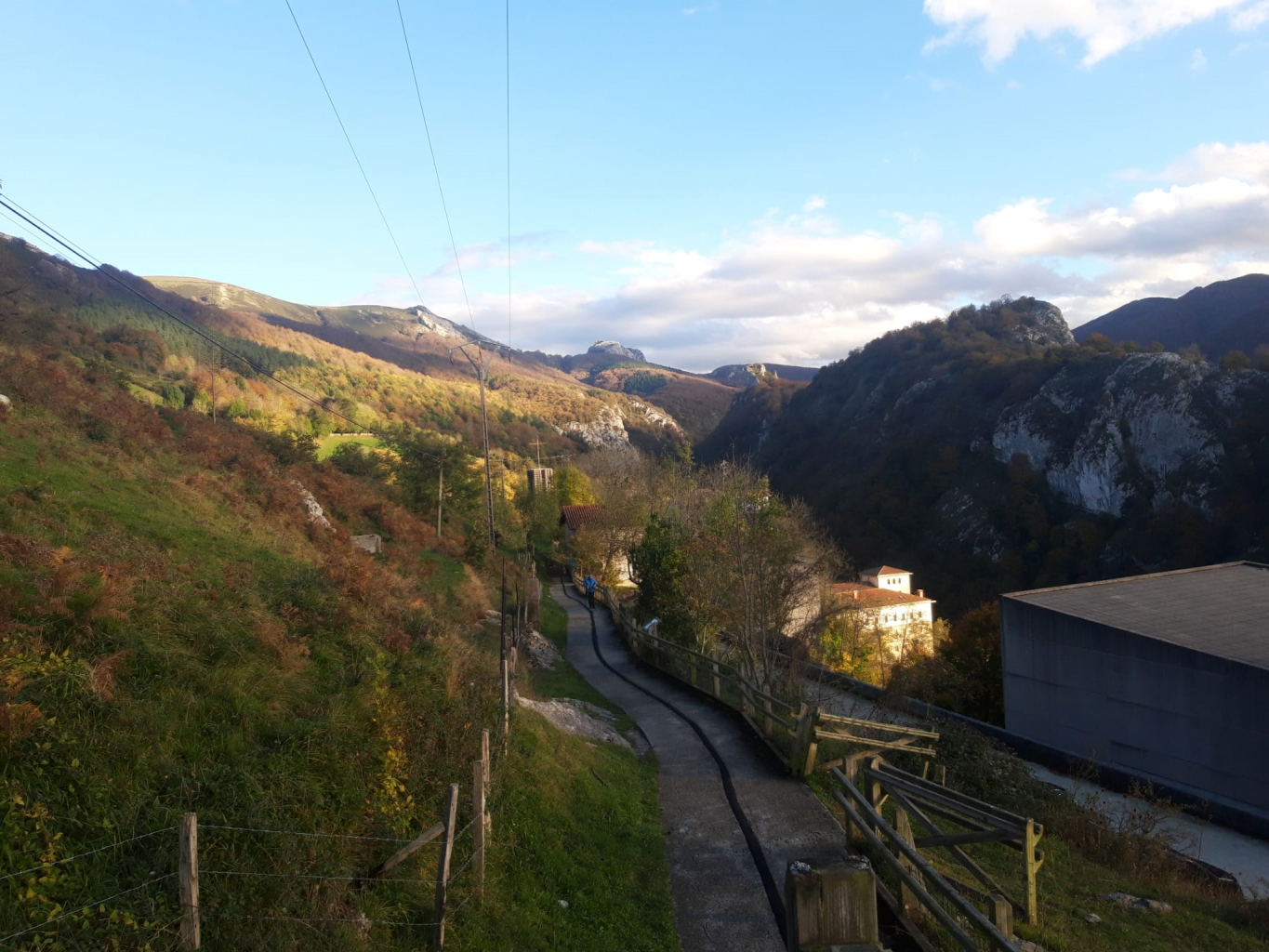
Mountains near Oñati
This was followed by my stay at the Max Planck Institute for Social Anthropology in Halle/Saale, Germany, from 15.11.2021 until 14.01.2022. It is always a pleasure to be back in Halle. My fellowship in the Department of Law and Anthropology provided me with the space, time and community necessary to advance my work on a special issue on material infrastructures of food production in the Capitalocene. The Department provided me with an office space, invited me to join hybrid workshops, and the librarians did a fantastic job in keeping their wonderful collections accessible. Old and new colleagues shared their insights and discussed with me in the seminar rooms, offices, cafeterias, guesthouse or nice restaurants and pubs in the vicinity. I am already looking forward to return again.
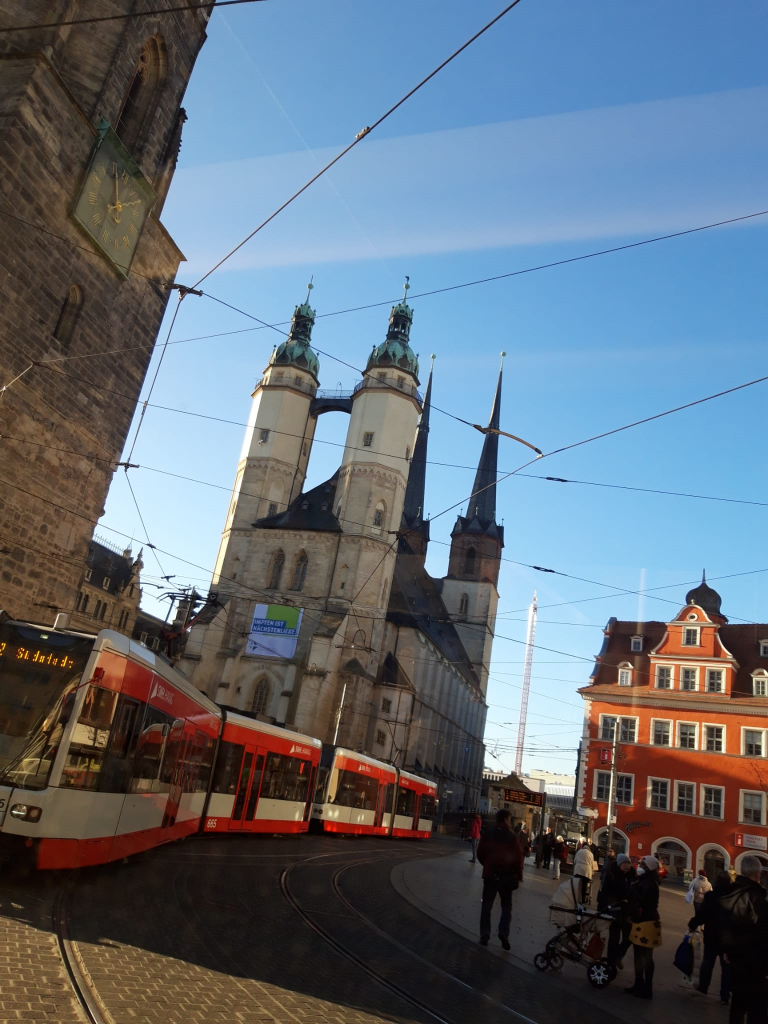
- Observations from the ANUGA food fair, Cologne. Diary excerpt. (12.10.2021)
I leave the huge youth hostel in Cologne-Riehl (7 floors, with 2 roommates in my 4-men room with bunk beds: all other cheap accommodations were sold out) at 10:00, and on the way to the city centre, I chat with two Croatian women who had negotiated with their boss to be allowed to pack their things today already in order to buy new shoes in the main street.
Then I walk alone through the drizzling rain over the bridge across the river Rhine that starts right next to the Cologne cathedral and main station. I join the stream of visitors at the station Deutz/Messe. Many hundreds of people are on the move. Employees check our Covid vaccination certificate (I show the covid app) and the contactless ticket (on the ANUGA app) in front of the south entrance of the ANUGA fair. After I have passed all queues and electronic gates and left my coat at the coat check, I begin to wander through the first halls.
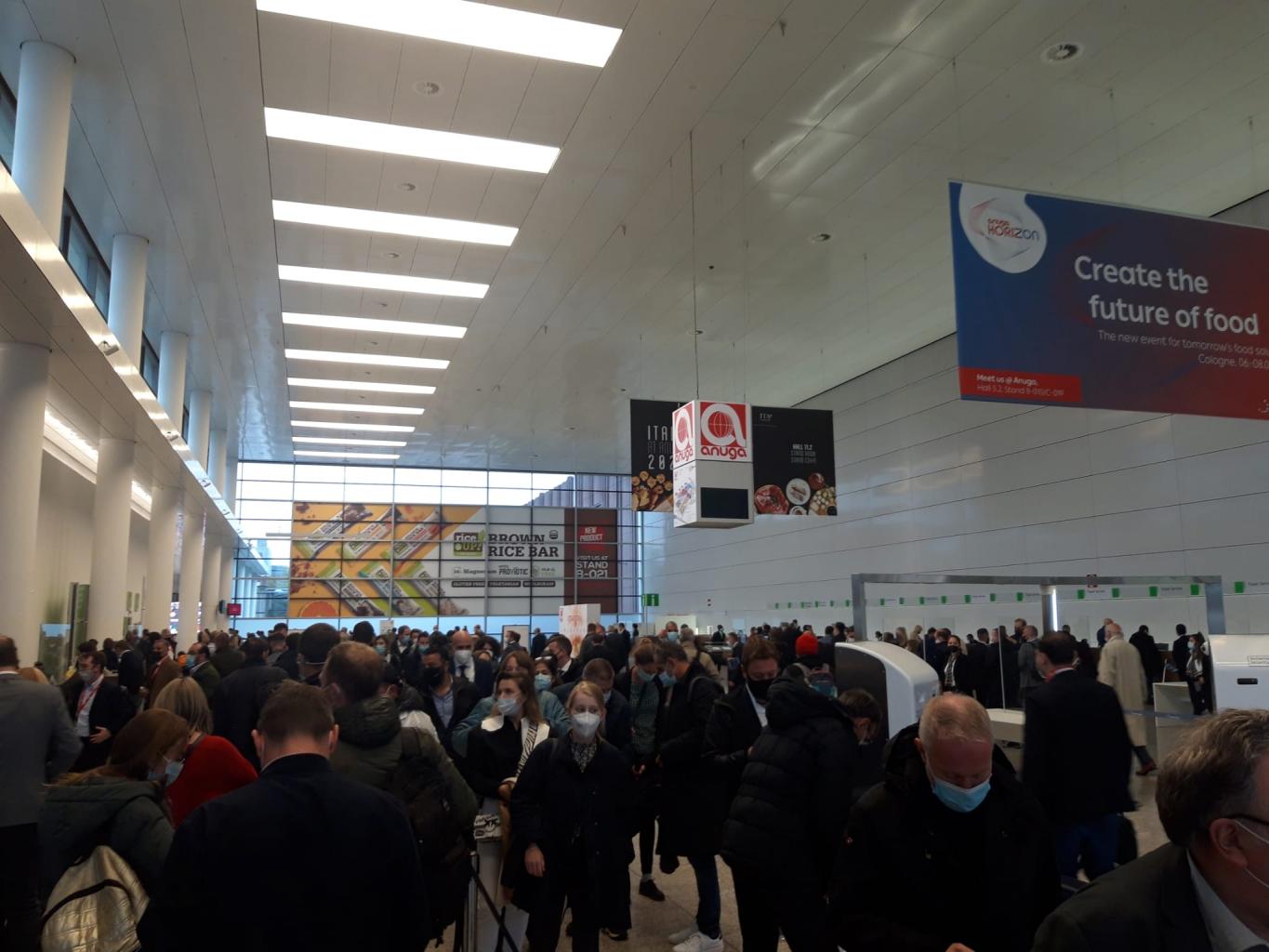
ANUGA Entry Hall
The exhibition is immense, with some 4,500 vendor booths, but it still relatively empty compared to 2019 when there were 7,500 exhibitors. Some halls, like numbers 4 and 5, even have 2 floors. I later learn from my Latvian sea buckthorn producer friends that it took them three days to walk down all the aisles.
I first speak to an employee of the wholesale chain Metro. She is nice and tells me a bit about the life of wholesale buyers and logisticians. We walk to the Serbian stand in ANUGA Frozen Food Hall 4.2 that has around 8 exhibitors.
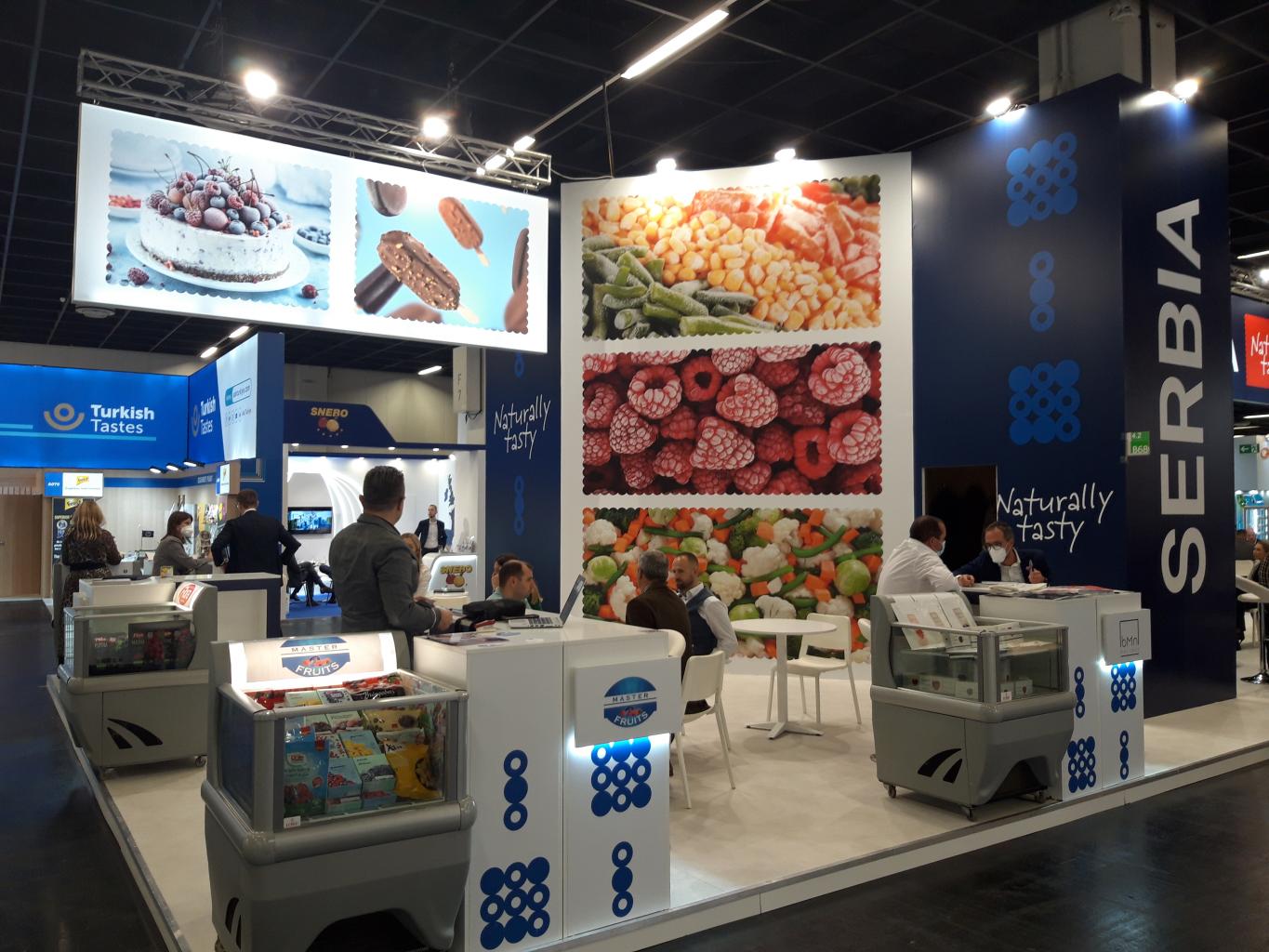
Serbian stand
Unfortunately, I can't listen in on her conversation with the Serbian wholesaler ITN (she has quickly said goodbye and disappeared in the crowd), so I talk on my own with the representatives of 2 companies, but they are not that interested when they discover that I am not a business person but “just a visitor” even though I speak Serbian and know the sector. There is not much going on here – the raspberry cold stores are practically empty. Wholesale prices have more than doubled since last year to 4 euros (the same goes for retail which is now 9 euros). This is due to bad harvests in Serbia amid an increased demand for healthy fruits thanks to the Corona pandemic.
Around 12:30 I reach the Latvian stand in Hall 5.1 - ANUGA Chilled and Fresh Food.
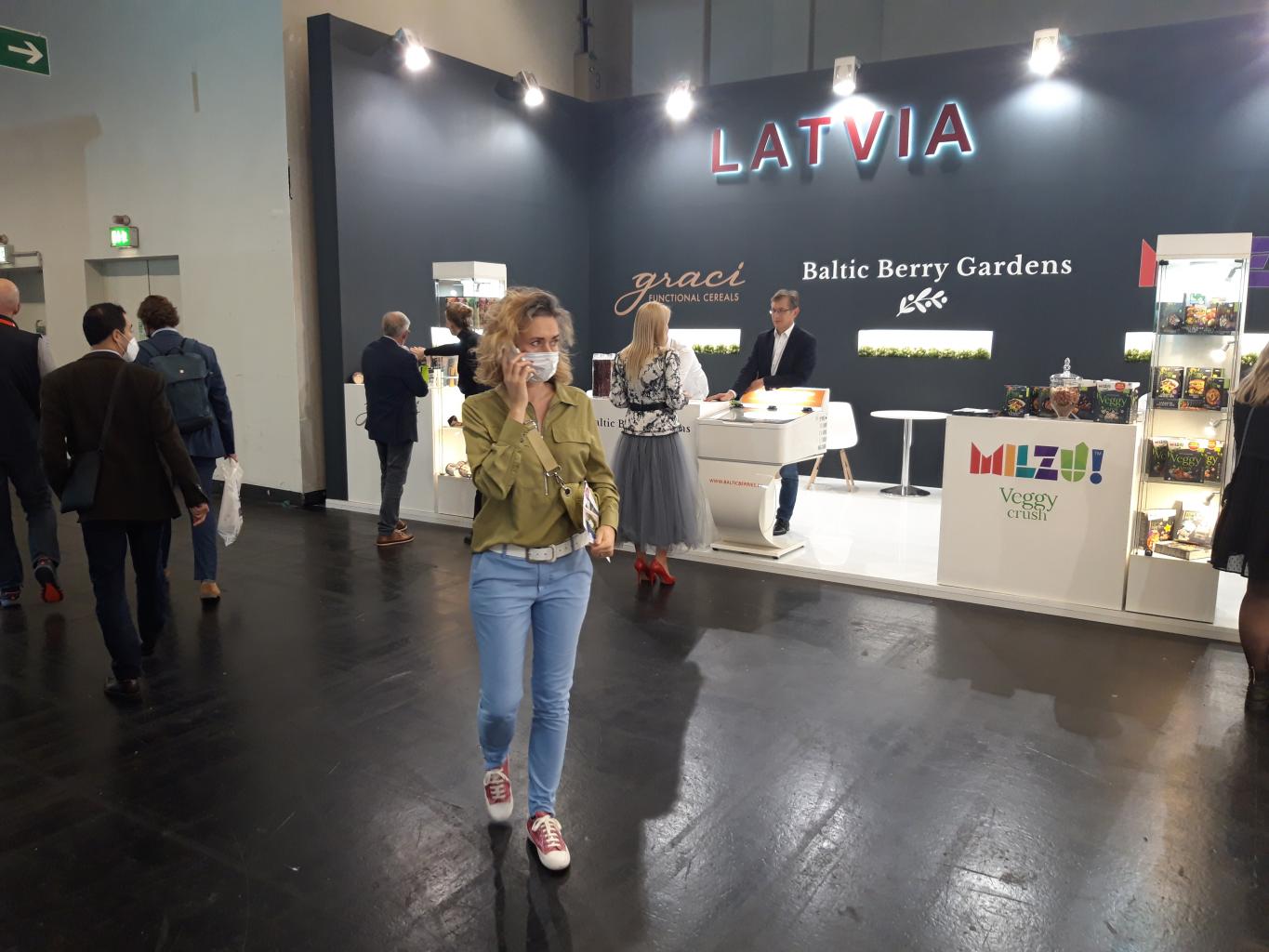
Latvian stand
There are four different booths, and I greet the Latvian sea buckthorn cooperative “Baltic Berry Gardens”. The main work on site is done by A., G. and L., while D. and J. visit booths that appear potentially interesting to initiate new business relations. Furthermore, they are particularly interested in the food innovations and trends also presented here in hall 5.1. They photograph particular innovations, so that they can find their way back to the booths later. Or they look up an address in the catalogue, whether it is analogous or digital (on the ANUGA app). Thus, they have marked booth 8.1 D010, “Lienig Wildfruchtverarbeitung”, a Brandenburg juice and juice concentrate producer specialised on sea buckthorn and a few other “wild fruits”.
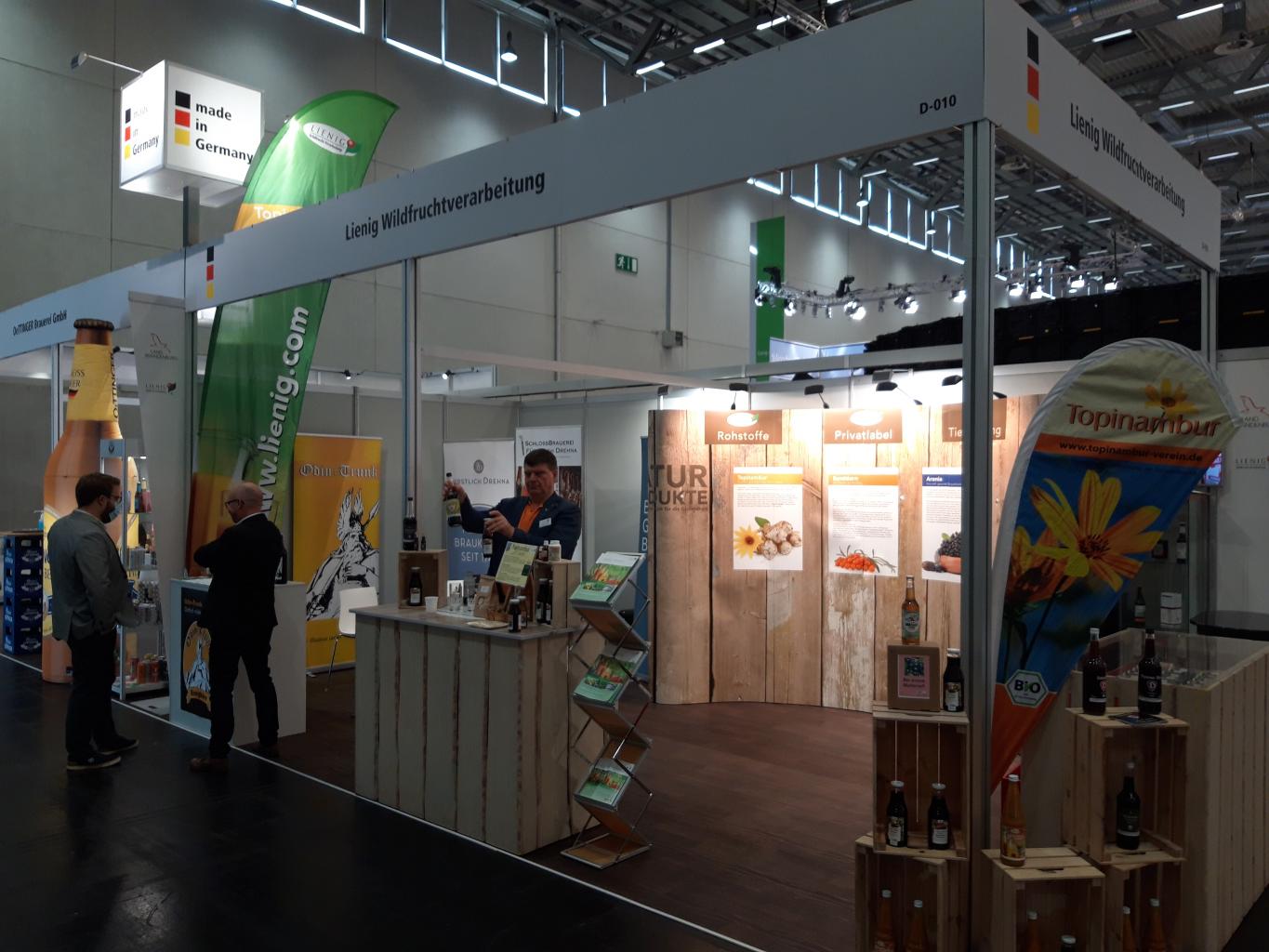
Lienig Wildfrucht
Unfortunately, Lienig mainly uses German sea buckthorn berries, which he buys from the major German processor.
L. and I chat a bit, and she expects to bring in workers from the Baltic States and Ukraine for the next harvest. She has already talked about this with an acquaintance of hers who has experience with it. The neighbouring booths from Latvia visit each other, chat, bring flyers or exchange produce. They also share access to a cubbyhole in the corner, a room with coffee maker, milk and a sink and where you can charge cell phones or store bags. While I get a coffee, one lady changes her daredevil stilettos into more relaxed DocMartens, joking she now looks almost like a soldier in a black uniform.
A. blossoms into a salesman all-rounder. Today he made at least 7 potentially good contacts, as he tells me in the early afternoon (on previous days it could be up to 20). While I sit with L., we see how A. pulls off a show for two Dutch wholesalers for 10min. They remark afterwards that they have already been to quite a few fairs, but that they have really learned something new here. In his other life A. works in procurement for an international company, so he must have picked up some tricks. In comparison, G. appears initially rather stiff, but he also becomes more relaxed and jokes with some visitors. […]
- Pre-harvest sea buckthorn research in Latvia (1.09.2021)
In August, the sea buckthorn fields were ripening and the farmers prepared for the upcoming harvest. During spring 2021, field assistant Līvis Lāma finished successfully his M. A. studies and became a project leader in organisational consulting. Congratulations! For the new season, the project employed as research assistant M. A. Mārtiņš Bitāns, who has meanwhile also become PhD candidate in Anthropology at Rīga Stradiņš University. Kudos. Our new field research covered farms and firms in the capital city of Rīga and three of four regions – Kurzeme (Ventspils, Kuldīga, Skrunda, Sabile, Talsi), Zemgale (Jaunpils, Tērvete, Jelgava) and Vidzeme (Rīga, Ragana, Smiltene, Burtnieki).
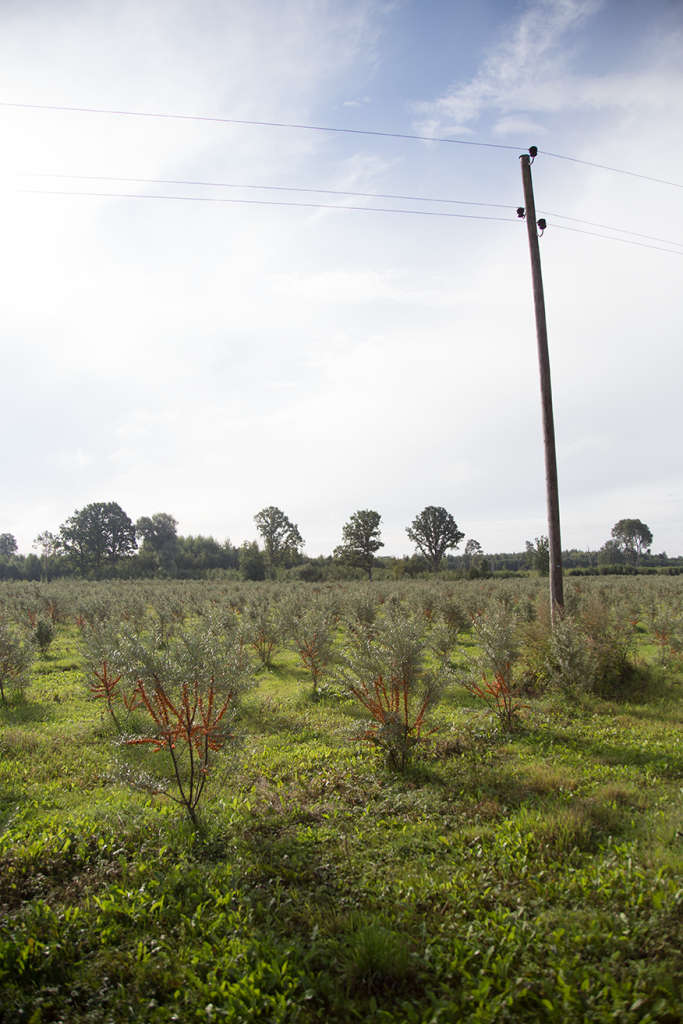
3-year old sea buckthorn plantation in Jaunpils
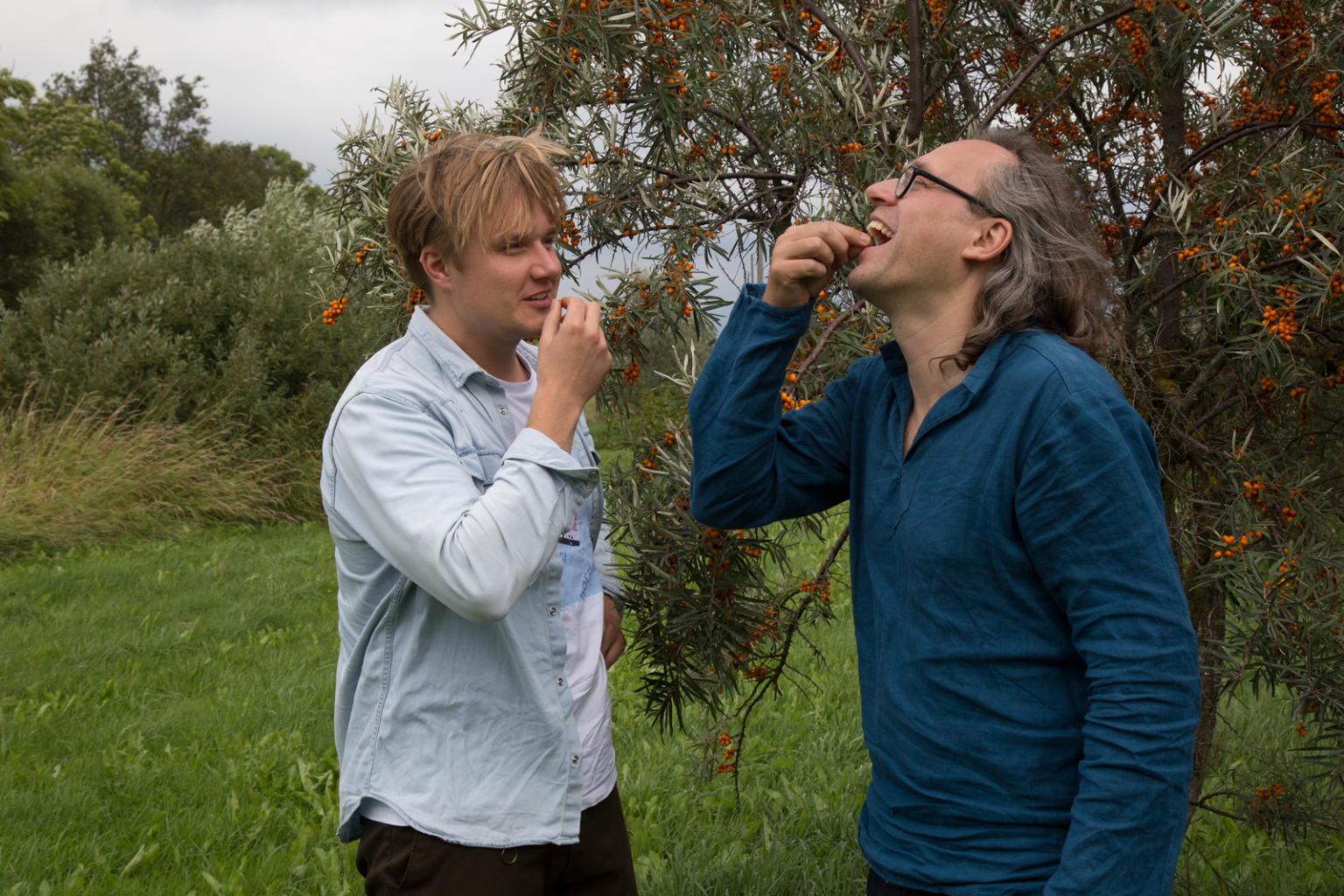
Sea buckthorn research near Burtnieki: Mārtiņš Bitāns (left) and Andrè Thiemann
- The drafting season (22.06.2021)
So, both in team work and as sole author – gratefully acknowledging the invaluable input by those commenting on online presentations and manuscripts – I wrote up and submitted four manuscripts. If every anthropologist did similarly during the lockdown, the double-blind peer review process should get even more tedious in 2021 than usual (for that matter – get rid of the metric valuation of research enshrined in neoliberal academia and for-profit publishing, see https://researchwhisperer.org/2021/06/22/open-access-at-no-…)!
First off, I wrote with Kristīne Rolle (also RSU) a comparative article on Latvian agricultural strategies vis-à-vis EU funds for a special issue. We have discussed the piece in March in our RSU PLACES panel and submitted in April – an intensive collaborative writing process covering material partially described in my past vlogs and activities.
Speaking of intensive collaboration: secondly, and thirdly, the special issue Christof Lammer (University of Klagenfurth) and I have been editing since way-back-when has been, finally-finally, submitted. It includes our Introduction: Infrastructuring Value and my article on Infrastructuring Raspberries.
Fourth, and indeed just yesterday, I submitted a chapter on Commodity Chains for an Anthropological Handbook. It has been fun to read up and refresh my memory on the moments in commodity chains research I have identified: World-Systems analysis, global value chains (tackling neoliberal globalisation) and multispecies ethnographies.
Exhausted from all the theorising, I would cherish a bit more fieldwork for a change. But first, I need to get my second jab.
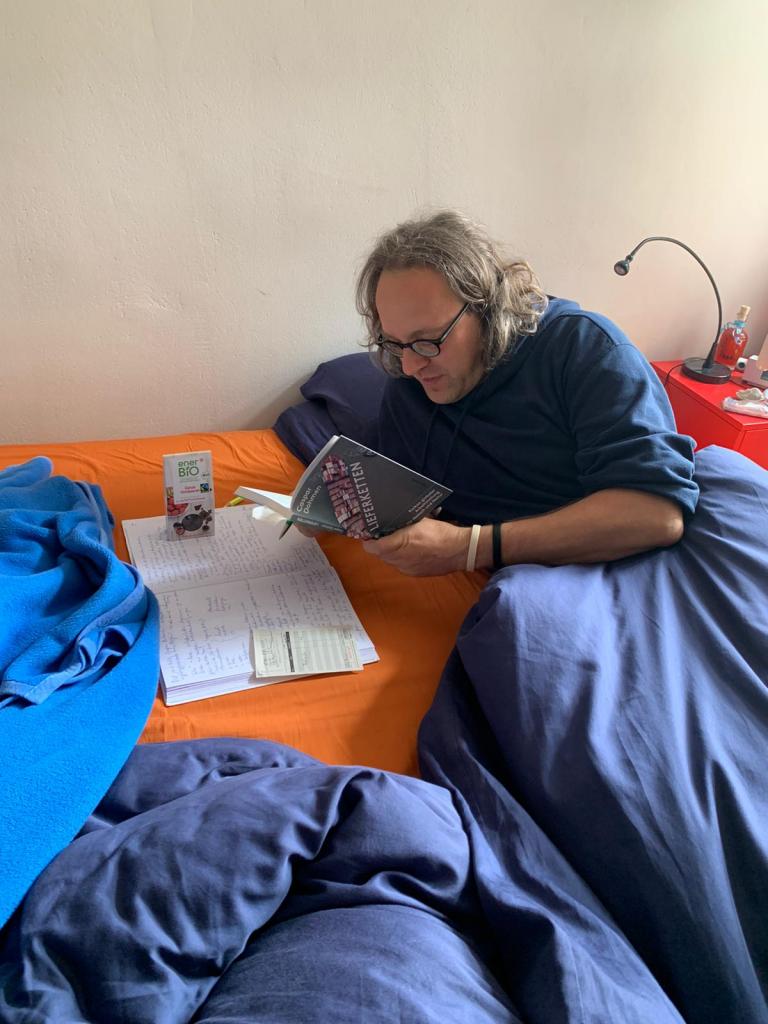
Doctor T at work studying supply-chain capitalism
- Report on the Elinor Ostrom Fellowship at ZiF Bielefeld since December 2020 (15.03.2021)
As it is drawing to a close, I want to reflect on my experiences as an Elinor Ostrom Fellow in Bielefeld in winter 2020/21. In one sentence, it was productive, I met old and new friends and deepened my knowledge due to the current ZiF-research group “Global Contestations of Women’s and Gender Rights”.
The overall circumstances were not too auspicious. In autumn 2020, the number of corona cases skyrocketed in Europe and (inter) national travel was severely restricted. Following my field research in November 2020 in the sea buckthorn garden in Petzow, Germany, this would have meant 10 days of self-quarantine in Riga, then home office, because Riga Stradins University and the Latvian National Library closed. What happened instead?
I arrived in Bielefeld in early December 2020. There were certain restrictions of the use of facilities in place, including the phenomenal indoor swimming pool, the sauna and various sports facilities, but one could always hike in the Teutoburg Forest behind the institute. Friendly collegial relationships had already been established among the global interdisciplinary fellows of the research group and they invited me to partake in scientific events in the well-ventilated, spacious lecture hall.
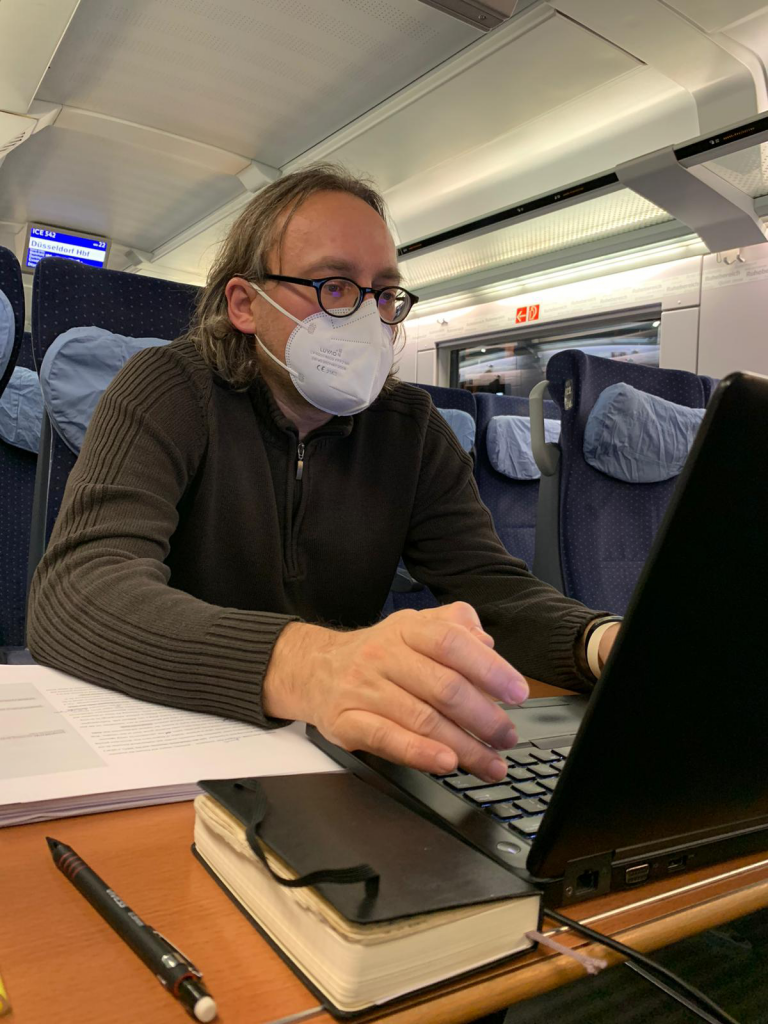
Travel in Covid-19 times
The material conditions at ZiF included a spacious apartment with terrace and an office with fast cable internet, printer and large screen, located just a few steps from the apartment. The way to the office led under the canopy of other apartments along the beautiful park-like courtyard. Even heavy snows in February could thus not affect my daily routines. I prepared three articles and a special issue in close (zoom) exchange with colleagues from Austria and Latvia and prepared for an online panel at the conference PLACES 2021, 25 March 2021, at RSU.
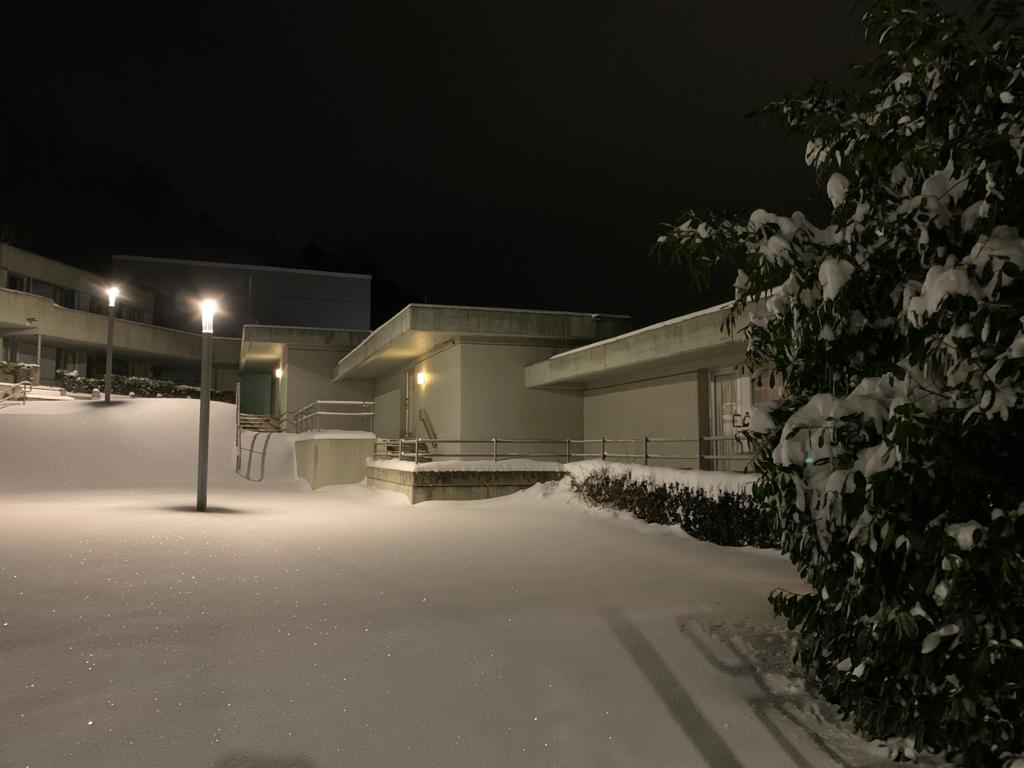
ZiF in snow by night
There we will discuss Kristine Rolle’s and my article “Becoming In-visible: Small Family Farms in Rural Latvia in the Framework of National and EU Agricultural Policy”, which we will submit in April at CAFE: Culture, Agriculture, Food and Environment journal. Furthermore, the special issue “Infrastructures of Value: New and Historical Materialities in Agriculture”, with Christof Lammer, can be soon submitted (planned for Ethnos), including our introduction and my article “Infrastructuring Raspberries: Agronomists, Cold Chains and the Socialist Base of the ‘Red Gold of Serbia’”.
I also greatly cherished the possibility to meet and open up new, interesting research and cooperative perspectives. I met my old acquaintances social historian Dr Jennifer Rasell and social anthropologist Prof. Minh Nguyen for walks. Prof. Nguyen invited me for a conference at ZiF in December 2021 and a lecture in her seminar at Bielefeld University in June. We also discussed our research with the ZiF Fellows, often on extensive Sunday hikes, from which I took decisive impulses for deepening the gender aspect in my book project on the state in Serbia. In particular from exchanges with Alexandra Scheele, Martina Sproll, Andrea Petö and Ania Plomien I gathered new ideas directly relevant for my research area.
For all of the social, bureau and scientific reasons mentioned above, I would like to thank the entire ZiF team, the Research Group and RSU for an extremely productive fellowship.
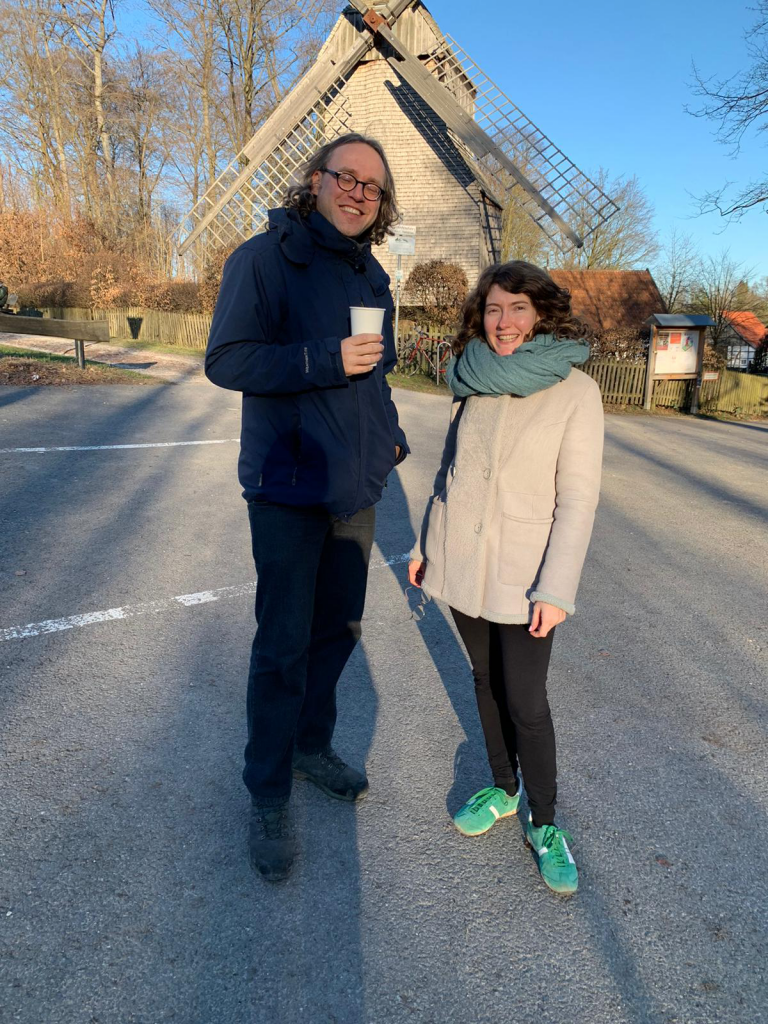
With Dr Jennifer Rasell at the Open Air Museum
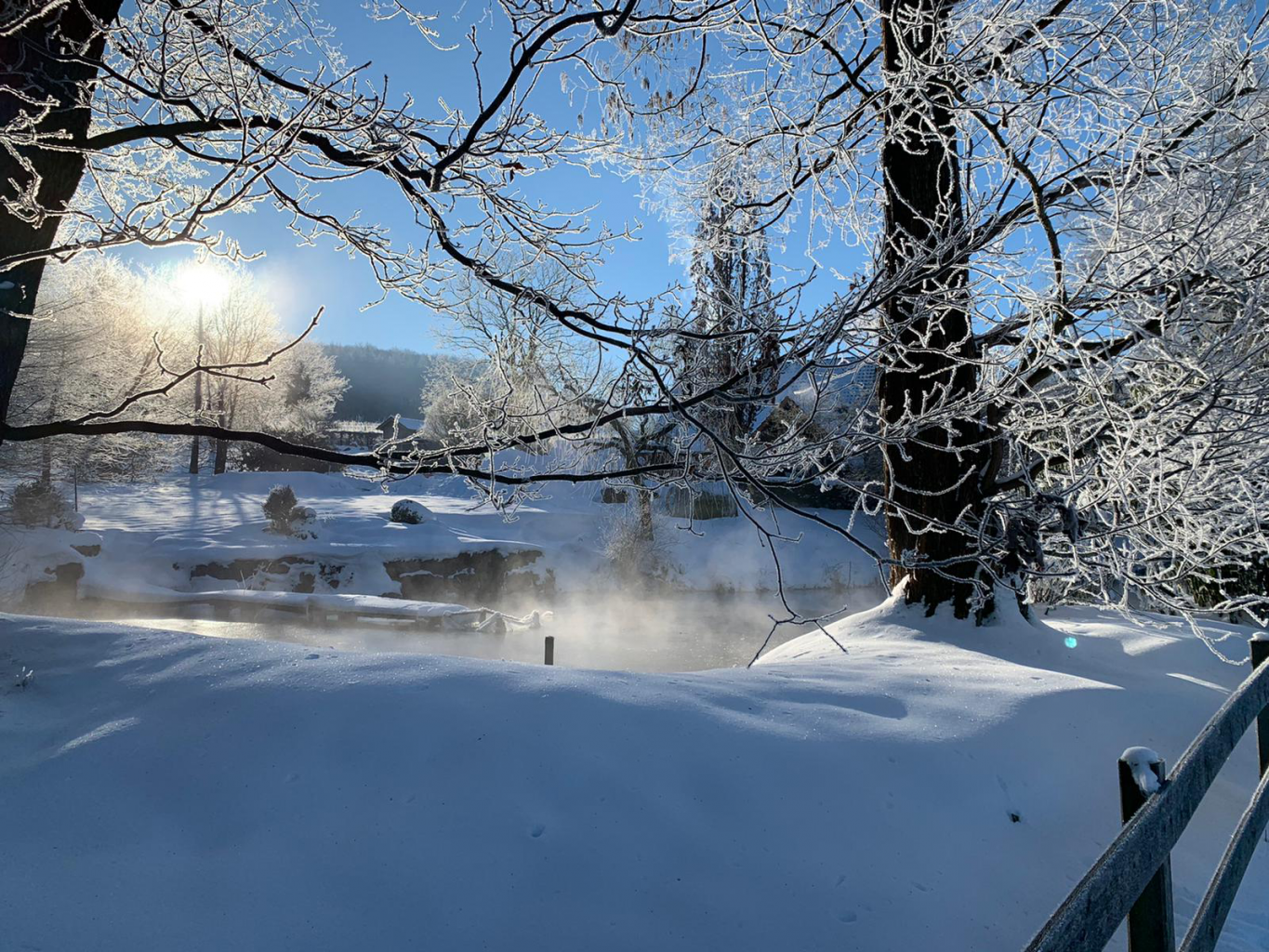
Scene from a walk in Teutoburg Forest
- Just out: The Red Gold of Serbia: A Historical Ethnography of Serbian Raspberry Production for the Global Market (17.12.2020)
I am happy to announce that my article The Red Gold of Serbia was just published as volume 10 of the Vienna Working Papers in Ethnography. This paper presents the first historical ethnography of raspberry production in Serbia, using an example of two typical actors in a field of entanglement between local production and kinship, global markets and politics of science.
Read article here.
Introducing a small-farming household and a manager-agronomist, it disentangles how raspberries became a major export commodity – the red gold of Serbia. This economic success is traced to configurations of the socialist Yugoslav development project since the mid-1970s, when the agricultural cooperative Arilje in southwestern Serbia assembled a complex production, processing, transport and commerce network at the intersection of state-financed science and technology and small-scale farming. During early post-socialism, this cooperative innovation became radically dispersed and production skyrocketed. However, this competitive fragmentation unravelled the collaboration between agroscientists and farmers and aggravated the problems these actors face today, including labour shortages and price fluctuations because of a diminishing ‘quality’ of ‘their’ product.
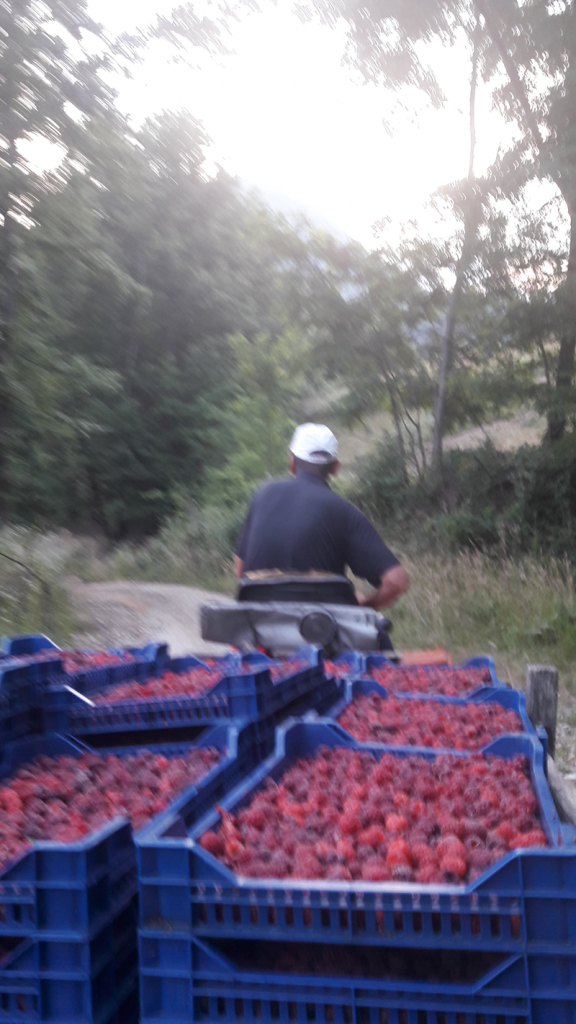
Marko brings the fresh raspberries to the collection point for cold-storing
- October 2020, Visit to the nursery garden of Andrejs Brūvelis, near Engure (30.10.2020)
In October, we followed up on contacts from the Latvian sea buckthorn festival in August and arranged a fieldtrip to the nursery garden of Andrejs Brūvelis in Rideļi near Engure in Western Latvia. Despite low autumn temperatures and drizzling rain, the “father of the Latvian sea buckthorn” gave us a fascinating tour through his gardens. Over several hours he discussed with us the contemprary history of sea buckthorn growing in Latvia, which started in 1984 as a prestige project of a leading Latvian kolhoz. We learned of several phases of development – the pioneer phase in which Brūvelis imported a dozen Soviet cultivars from the Moscow Botanical garden, and bred two local varieties through natural selection. In the 1990s interest in the fruits grew in Estonia, in the 2000s, and especially after the financial crisis of 2008, in Lithuania. Since the early 2010s, in Latvia plantations have been multiplied and scaled up to such an extent that Brūvelis can now live from multiplying seedlings in his nursery. Recent challenges – including the occurrence of the sea buckthorn fruit fly (Rhagoletis batava) – can be less an less met through agrochemical measures (pesticides, fertilizers, etc.), as the EU agricultural laws are becoming more restrictive. Therefore Brūvelis has dedicated this mature phase of his carreer to research on new methods of plant protection, and to continued efforts in his breeding and selection trials.
- September 2020, German sea buckthorn festival in Werder, near Berlin (30.09.2020)
In September, the lead researcher attended the seventeenth sea buckthorn festival in Petzow, which is located in the Werder commune, in Brandenburg, in eastern Germany. The festival was opened by representatives of the Federal Republic of Germany and the federal state of Brandenburg (from the respective Ministries of Agriculture), the chairman of the association of sea buckthorn and wild berries, and members of the Berger family, sea buckthorn-affected since one family member had been employed in the socialist cooperative’s experiments with cultivating the thorny bushes on the fringes of the Havel fruit-growing region in the early 1980s. Besides presentations about the sea buckthorn story, its wellness, health and care properties, we learned about challenges to the industry during Corona times, like a temporary shutdown of the Bergers’ local sea buckthorn store in spring, later almost offset by a hightened turnover because of the juice’s health properties.
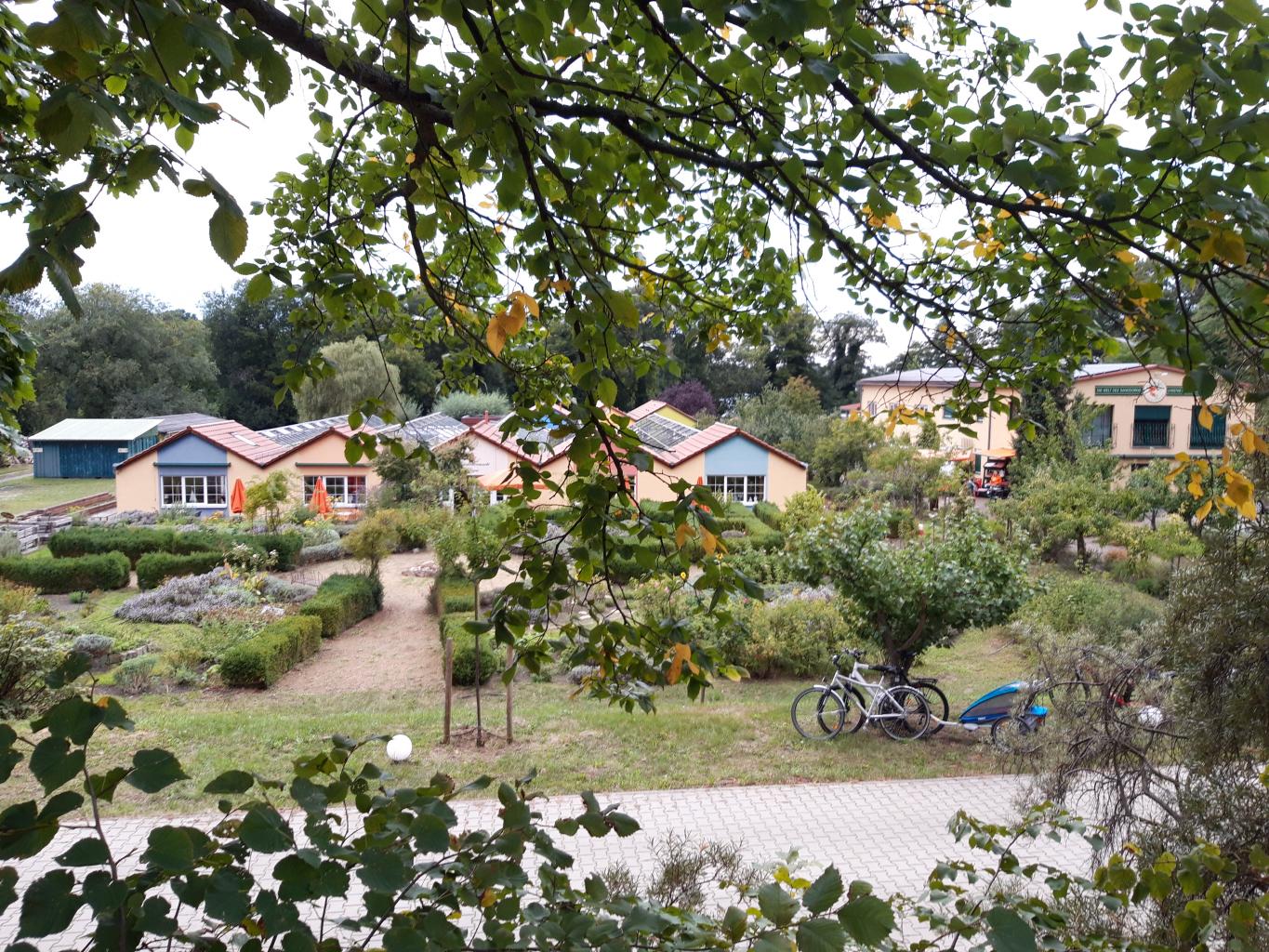
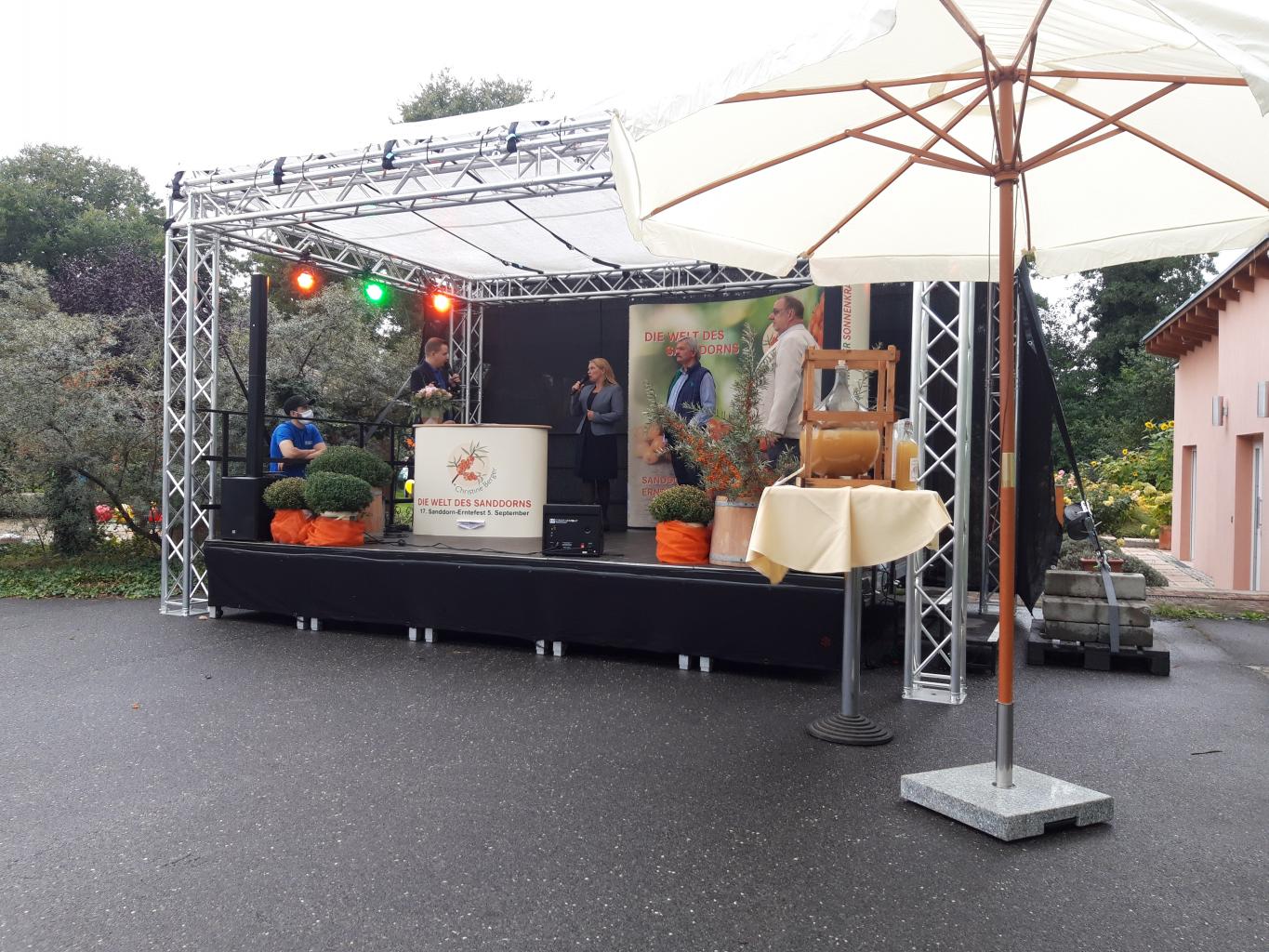
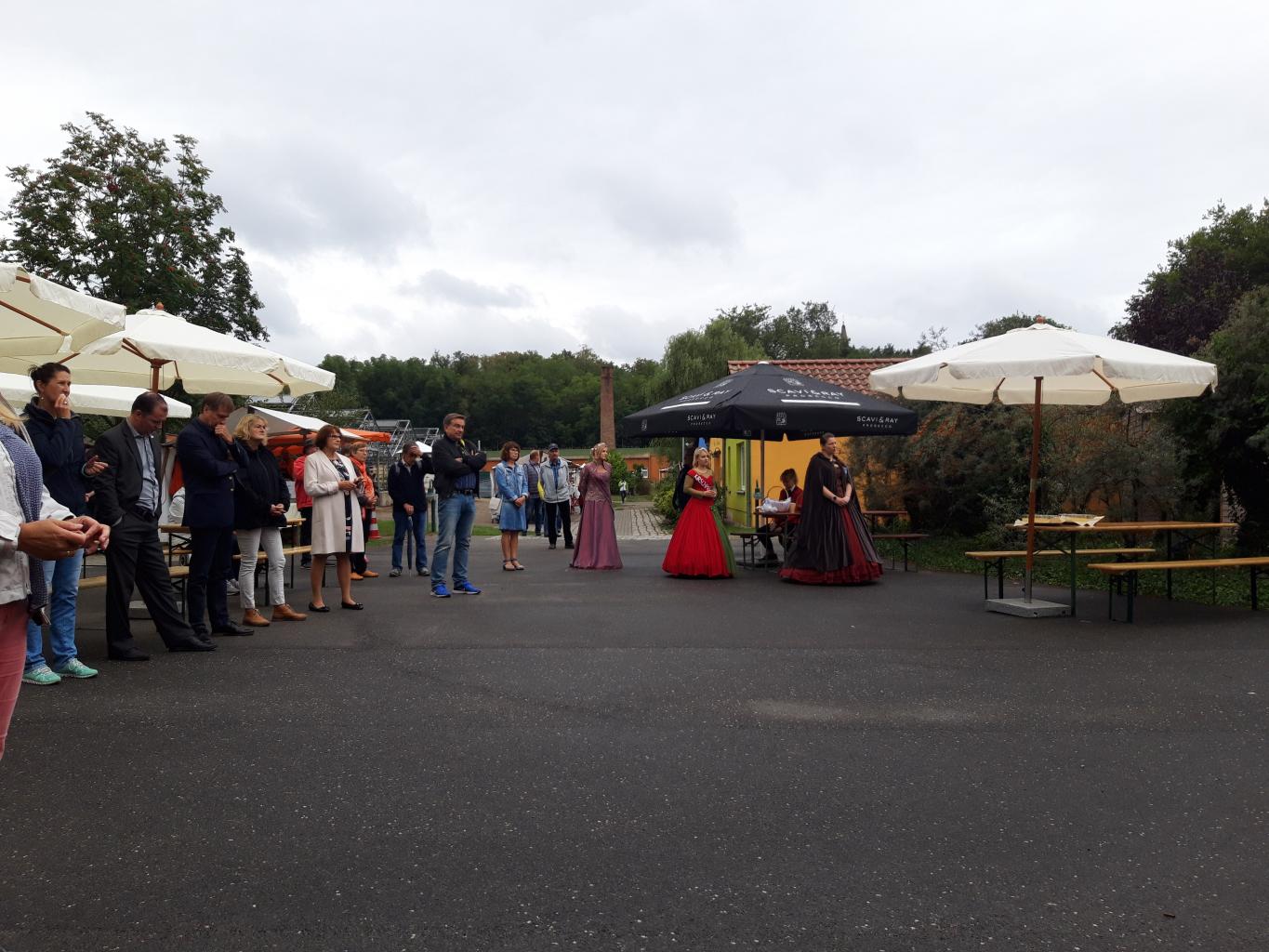
The event had a folk festival character. Over a dozen stands offered not only 70 products by the Bergers made of sea buckthorn including a young, partially fermented sea buckthorn wine that was made especially for this occasion. Other stands included a health insurance offering free sea buckthorn smoothies, specialty honies, soaps etc. The longtime guide to the sea buckthorn garden, a retired agricultural engineer, made many memorable quibs. For instance, when asked what sea buckthorn was, he said: “It is, as Goethe would have answered, an incommensurable fruit”. Another of his favourite sayings, in the context of the German way of cutting the berrry holding branches druing harvest: “There are as many theories of pruning as there are experts, only one thing is clear: the more you cut the stem, the more regrowth there will be”.
- August 2020, Sea buckthorn festival – for insights, inspiration, and cooperation (30.09.2020)
In August, field research assistant Līvis attended the second sea buckthorn festival, which took place in the Zelt sea buckthorn garden, which is located in Platone Parish, Jelgava Municipality. Within the framework of the festival, practical presentations were held about and around sea buckthorn – their care and processing, good properties, as well as the future development of the industry. The event also included a practical lesson on how to better harvest berries and cut branches, led by the most experienced sea buckthorn grower in Latvia, Andrejs Brūvelis. As he mentioned in his presentation, "sea buckthorn needs unconditional love."
- July 2020, Map of Latvia’s sea buckthorn and raspberry networks finished (30.09.2020)
As a deliverable of the research project, the Latvian sea buckthorn and raspberry networks have been mapped. The map contains farmers, processors, and research institutions. These are clustered in central and Western Latvia, while southeastern Latvia appears to be completely off the grid. Future research shall identify factors that led to these results (historical contingencies, registration process, access to information, border economy and “emptiness” / emigration issues, environmental factors).
- June 2020, Work-in-progress on the Red Gold of Serbia (30.06.2020)
Since December 2019 and through to June 2020, the lead researcher has been writing, submitted, rewriting and resubmitting a new Working paper on his raspberry research in Serbia for the Vienna Working Papers in Ethnography Series. The results will be published as a freely available peer-reviewed text, hopefully in the not-too-distant future.
- March-June 2020, Latvian language course (face to face and per skype) (30.06.2020)
Between October and December 2019, the lead researcher participated in a Latvian course at Riga Stradiņš University taught by Inga Laizāne. From March until early June, this course was continued as one-on-one teaching via Skype, in compliance with the Corona lockdown limitations.
- "Moral Appreciation" in Eastern European Agriculture (25.06.2020)
After an unfortunate delay, partly because of my holidays starting in February, which almost left me stuck in Latin America when the Covid-19 pandemic was officially proclaimed, this post finally announces the publication of my latest article “Moral Appreciation: Caring for Post-socialist cows in post-socialist Serbia” in the special issue “The Village” of the Dutch anthropological journal Etnofoor. It was officially published in December 2019, although I received my copies in January 2020.
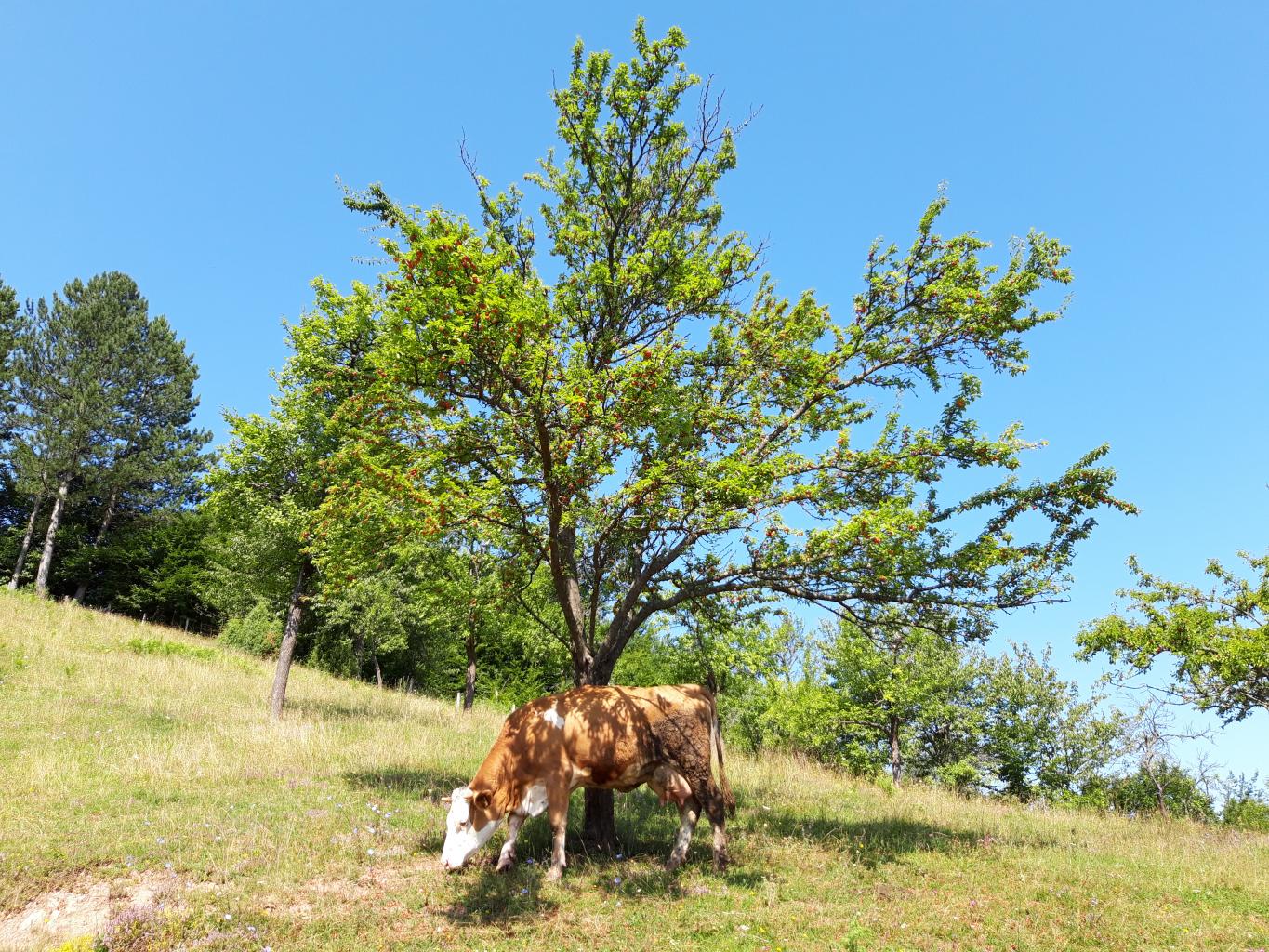
Simmental dairy cow, grazing above a raspberry field, July 2019
Based on fieldwork in Serbia between 2012 and 2019, the piece ethnographically explains the fortunes of small-scale dairy farming at the intersection of globalizing agriculture, the political economy of the transformation of state and society in rural Serbia, and the moral economy of the “living village”, a landscape understood by the rural families to be shaped by agricultural labour and the care for large livestock. Generally speaking, moral appreciation – a dialectical response to what Marx called the “moral depreciation” (or social wear and tear) of machines (and I add livelihoods and social security) encompasses salvaging value from the devalued substance of work – past and present – to reproduce the future of a place. Similar trends can be observed at the rural end of other global value chains, including sea buckthorn and raspberries.
Enjoy reading!
- March 2020, Conferences going online – new ways of facilitating panels (30.04.2020)
Covid-19 has not only impacted research and teaching, but also the discussion and dissemination of research. The EASA conference 2020 (July 20-24), was originally scheduled to take place in Lisbon. Now it will take place online, and as a co-convener of the panel “Infrastructures of Value: Uniqueness and Genericness in Agri-Food Chains” (together with Dr Christof Lammer, Klagenfurth, Austria), the lead researcher completed a short online training by EASA’s NomadIT in how to administer a panel via the large-scale video chat platform Shindig.
- On beginnings and threats to sea buckthorn 'Made in Latvia' (31.03.2020)
Anthropologists need a bit of luck. In mid-September 2019 my new research in Latvia was officially entering week six, when I was contacted by a 31-year-old Latvian state employee and budding sea buckthorn entrepreneur – I call him Ivars to protect his confidentiality.
Ivars, together with his business partner, had planted 13 ha of sea buckthorn bushes in 2018, and both were actively scanning the available science, knowledge, and governmental resources to develop and market their future product. This way Ivars found me on the Latvian Postdoc website, as he told me over a delicious Italian meal in the Old Town of Riga.
Back in 2018 Ivars had obtained the seedlings from Andrejs Brūvelis, who some call the “father of Latvian sea buckthorn”, as he is the chairman of the Latvian Sea buckthorn Growers Association who has been breeding sea buckthorn in Latvia in the 1980s.
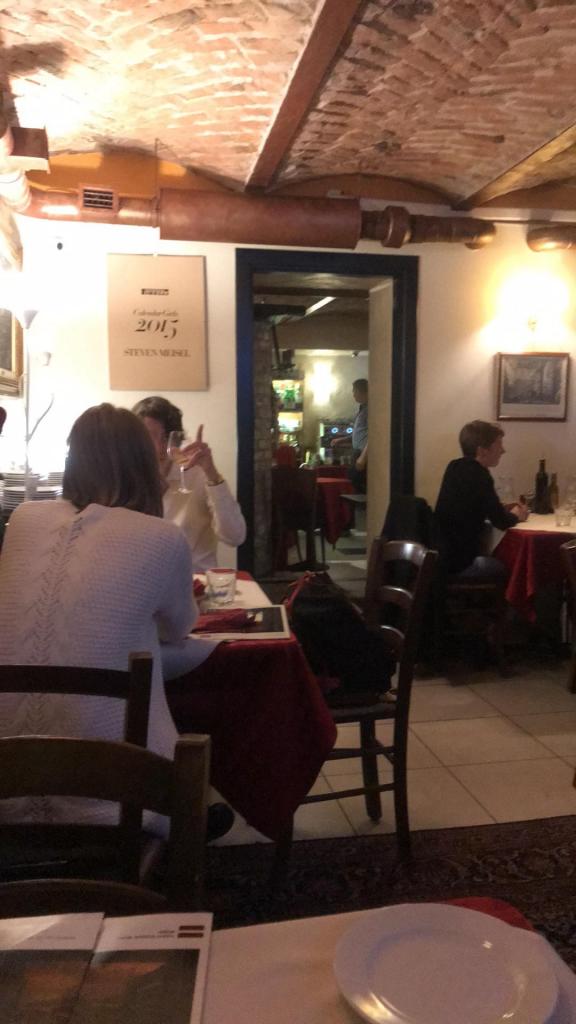
In 2019, Ivars and his business partner joined the Sea Buckthorn Cooperative with presently 8 members (founded in 2018) and intensified their research of the European market. Thus, Ivars’ business partner joined a delegation to Romania. Also in 2019, both convinced the University of Latvia’s biology department to analyse their fruits. The lab discovered a marketable quantity of fatty acid, suggesting that they concentrate on marketing sea buckthorn oil. This research was funded by a EU program.
Before we parted, Ivars and I agreed to cooperate in the future.
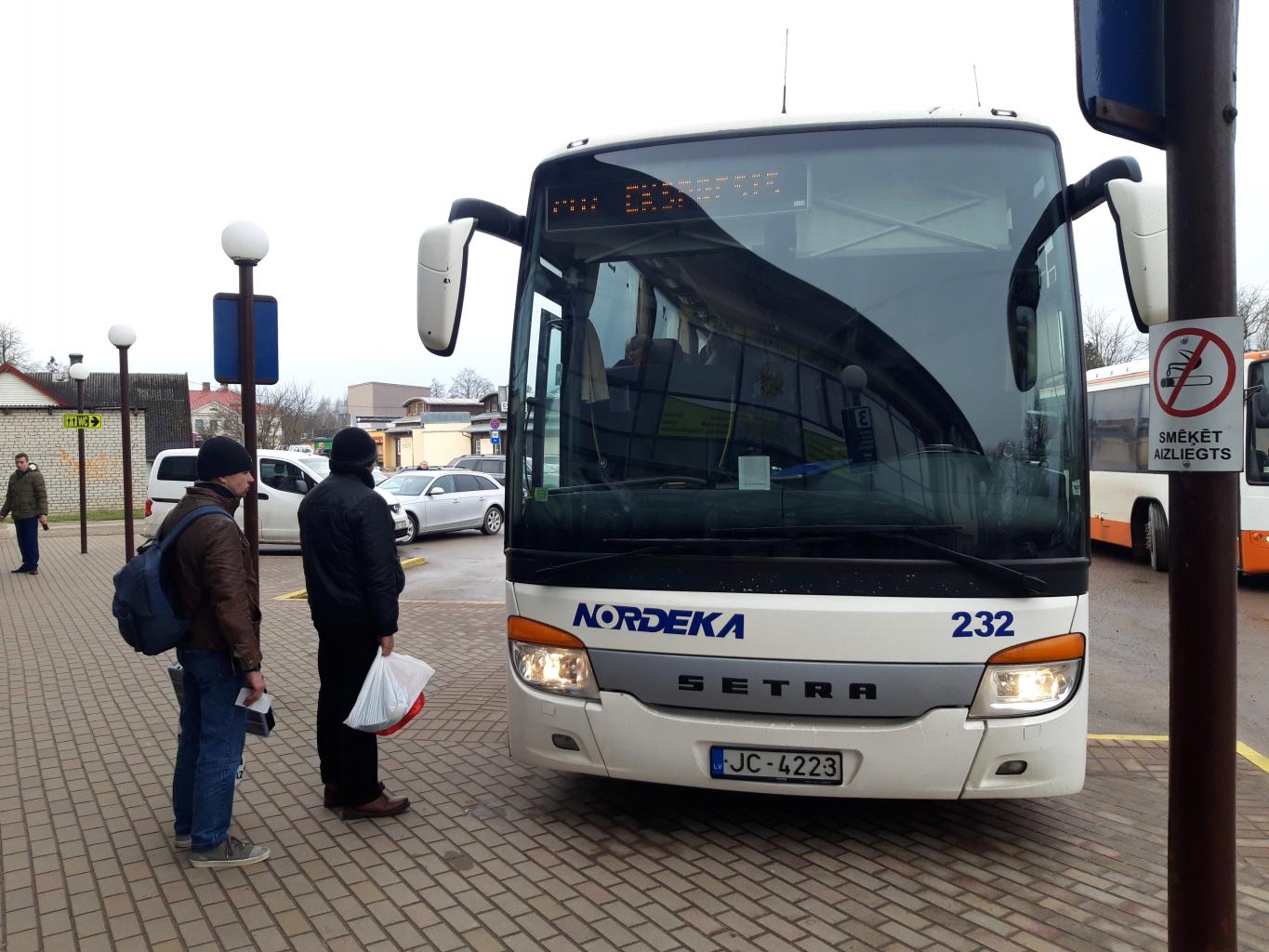
In February 2020, my new field research assistant Livis and I took the bus to Western Latvia. Upon arrival in what may be the smallest town in Latvia, we waited for half an hour in the market place and scanned the situation, until Ivars fetched us. After a short ride, we joined Ivars, his business partner, and their work gang of school friends in dispersing chalk and fertilizer. Their plantation lies on icy marshland recently ameliorated with the help of EU funding.
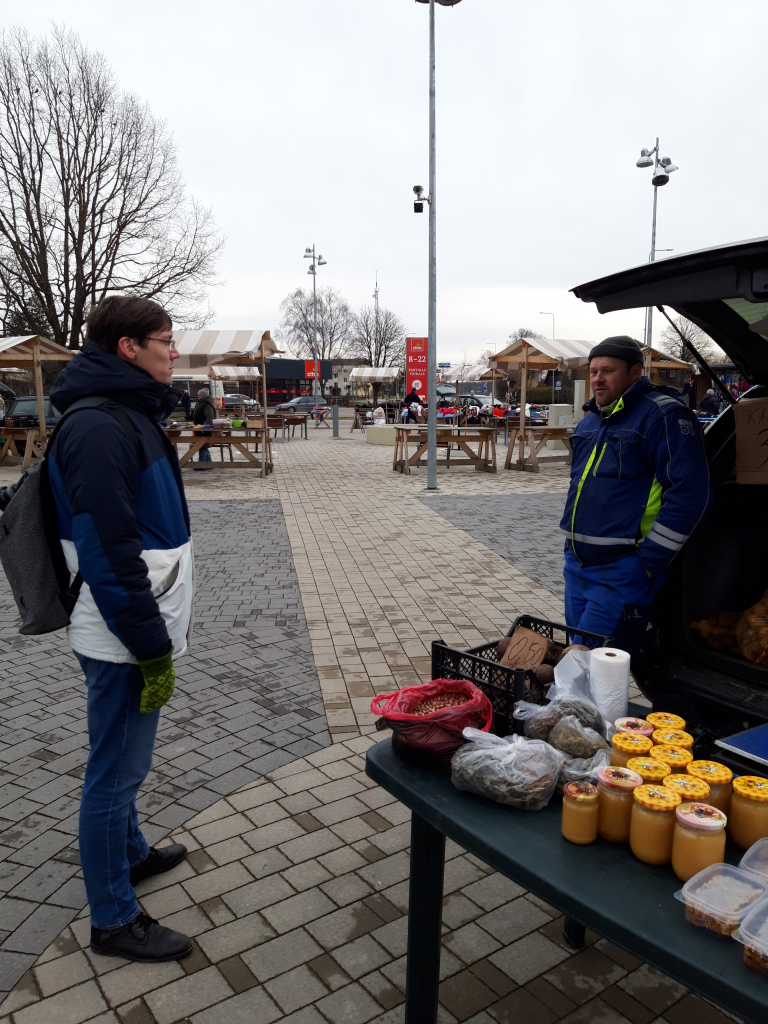
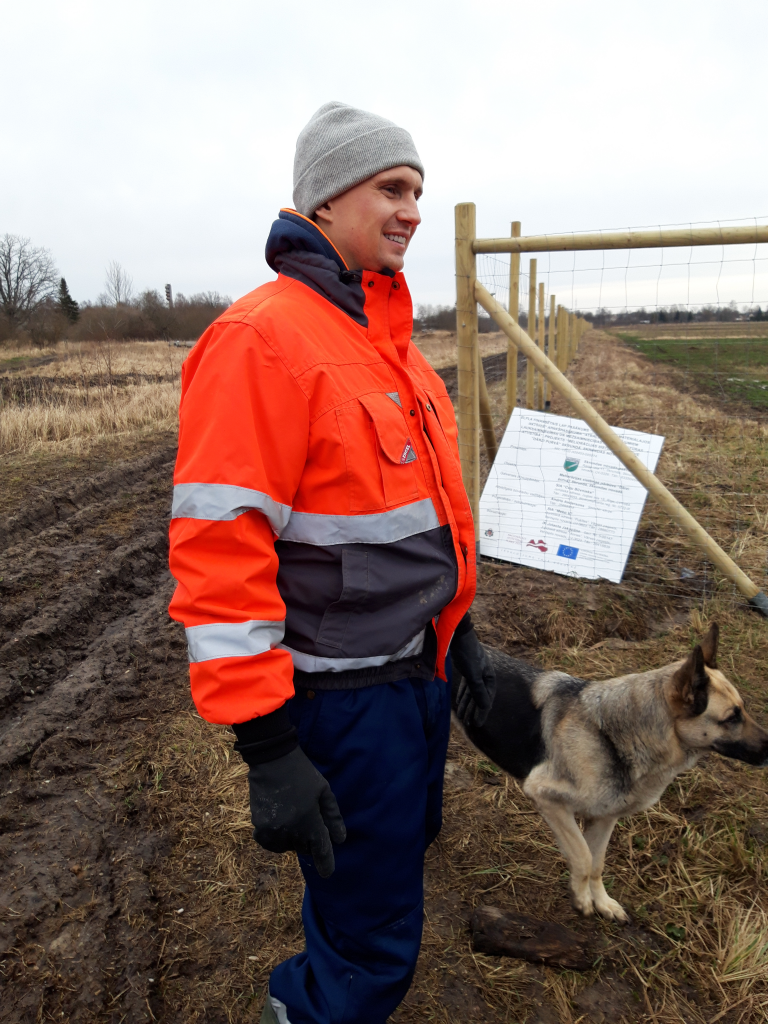
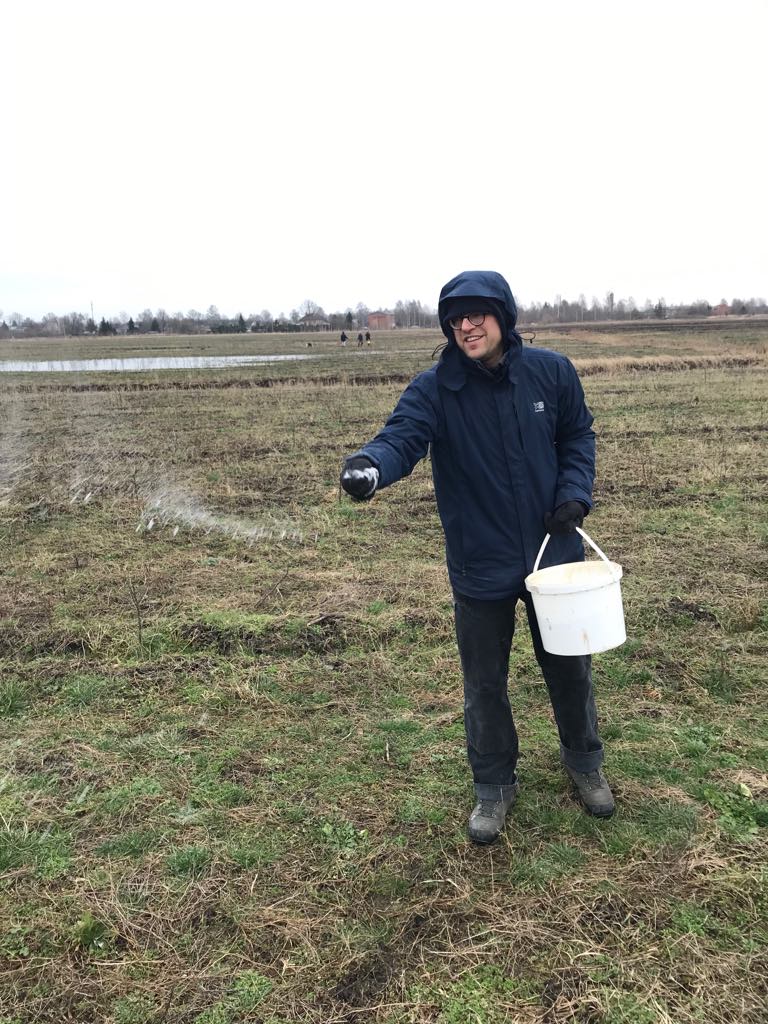
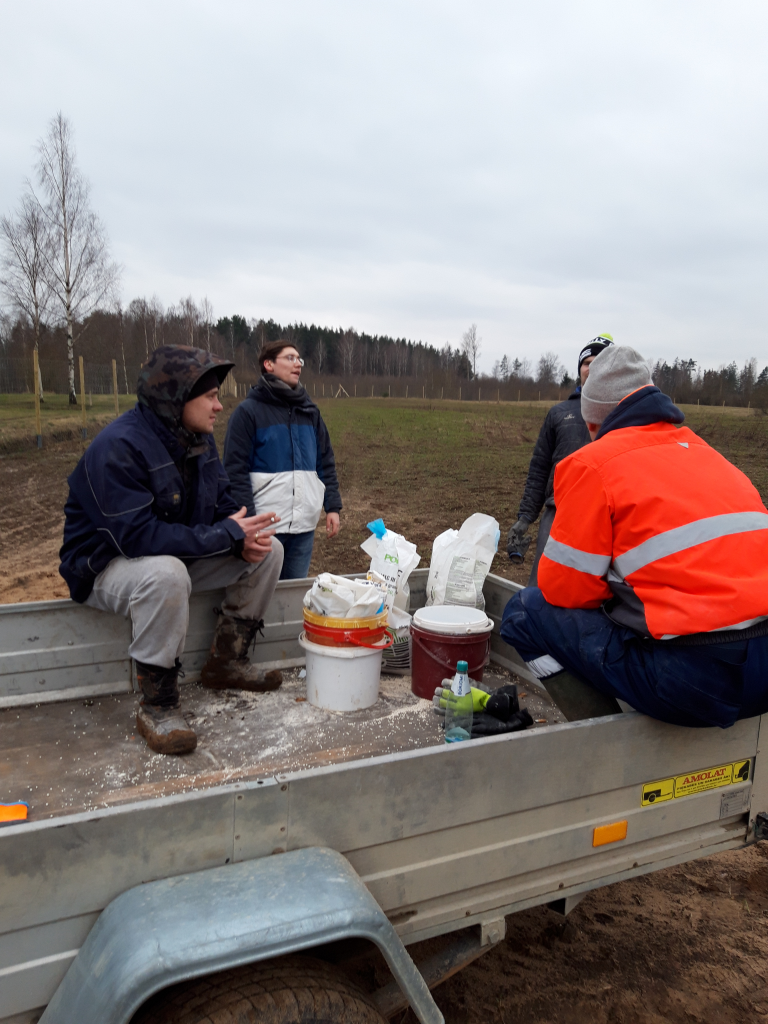
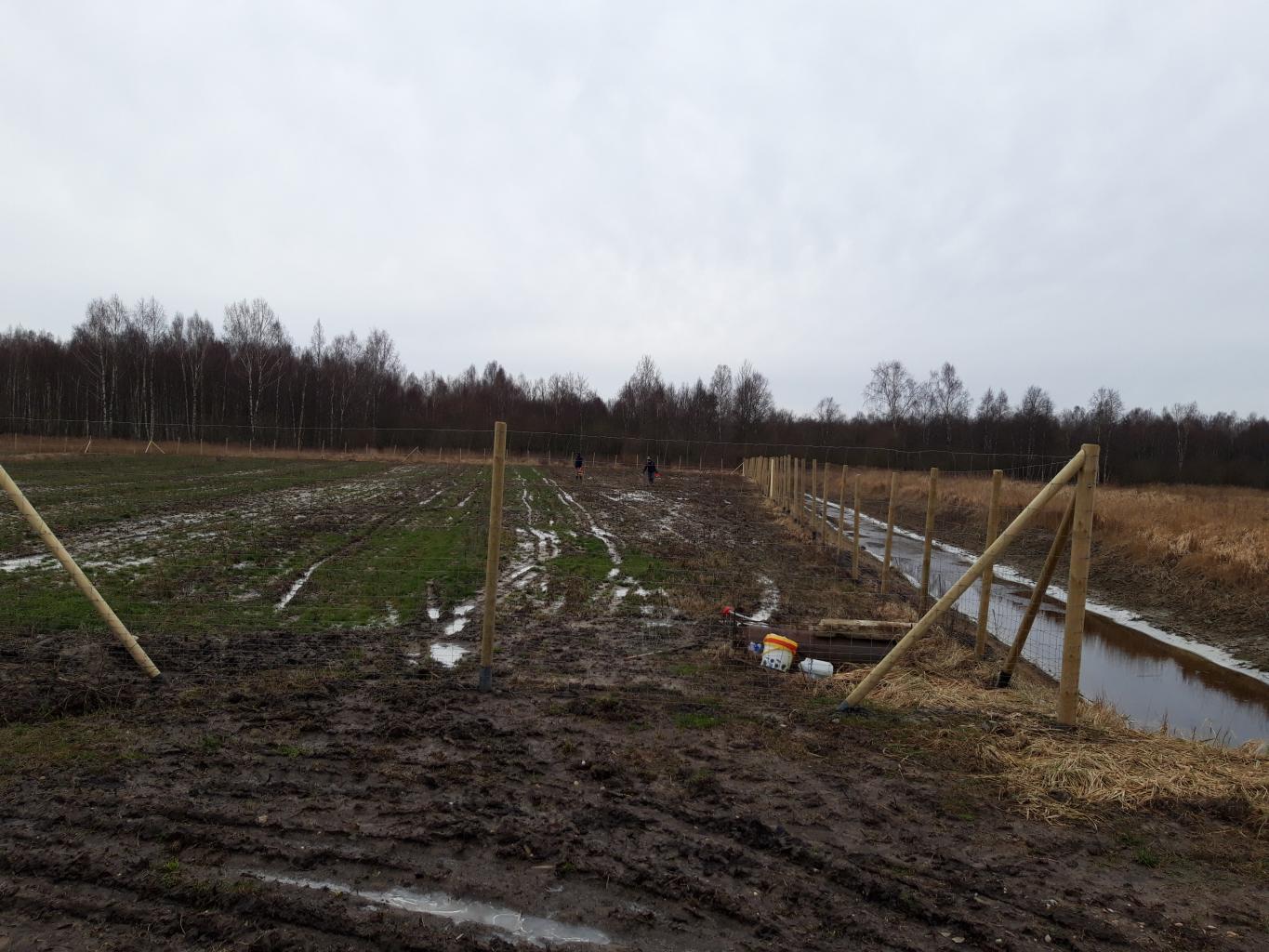
After a few hours of work, the hustle of city life was forgotten, as we worried about cold feet and running noses. In the meantime, we had had a hearty lunch in the only restaurant in town, as I would have expected from my previous fieldwork experience in Serbia (although there food would have typically been prepared by the household). What really surprised me, however, was the after-work party, or what football fans call the “third half of the game”.
Namely, the school friends followed their established winter ritual: they prepared a sauna, followed by a barbecue, then poker, accompanied by less and more hard drinks. Thus, I unexpectedly had my very first stab at poker in rural Latvia! Prudently, after losing 10 EUR, I refrained from buying more chips, and decided I could also learn by watching.
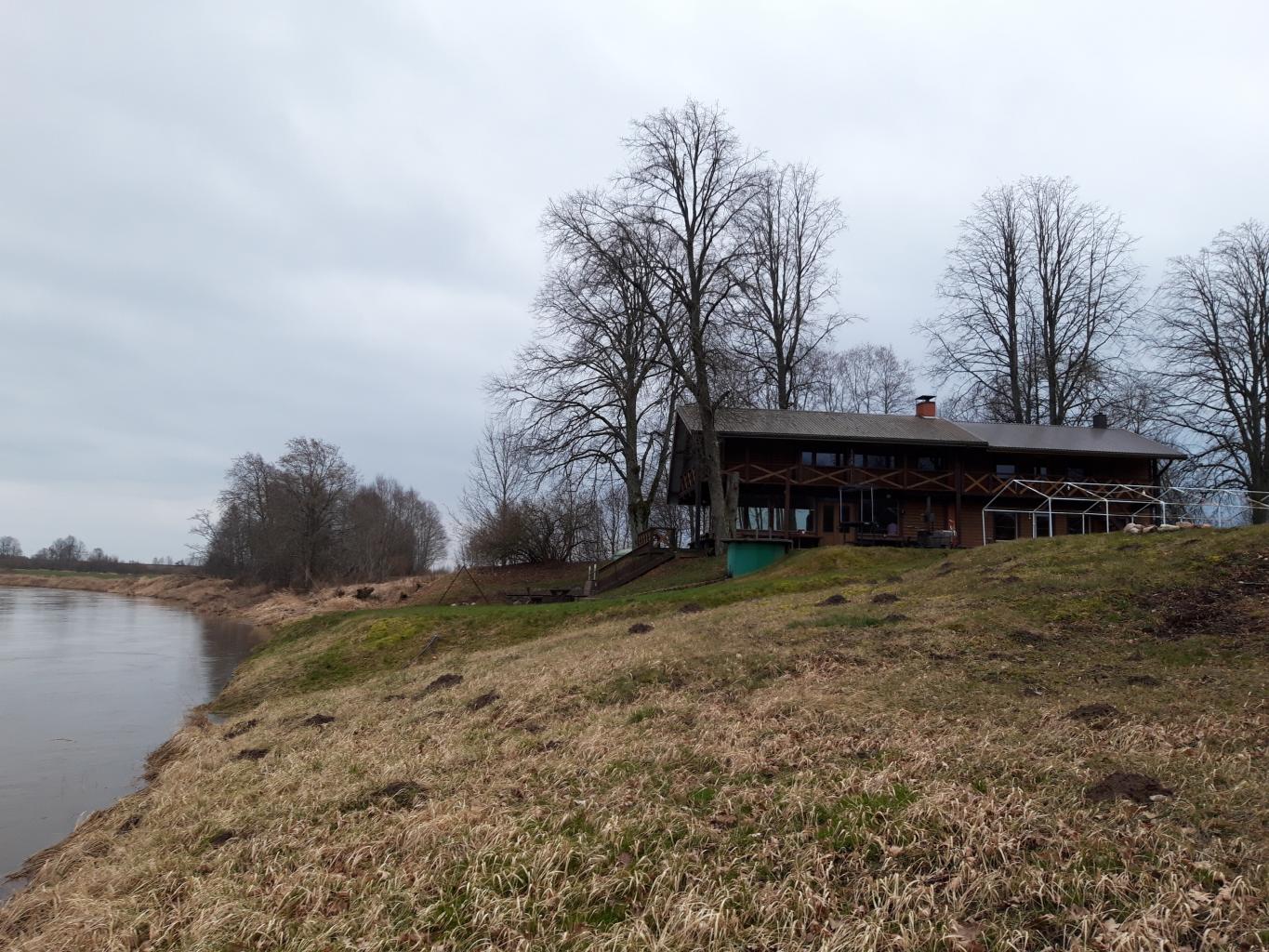
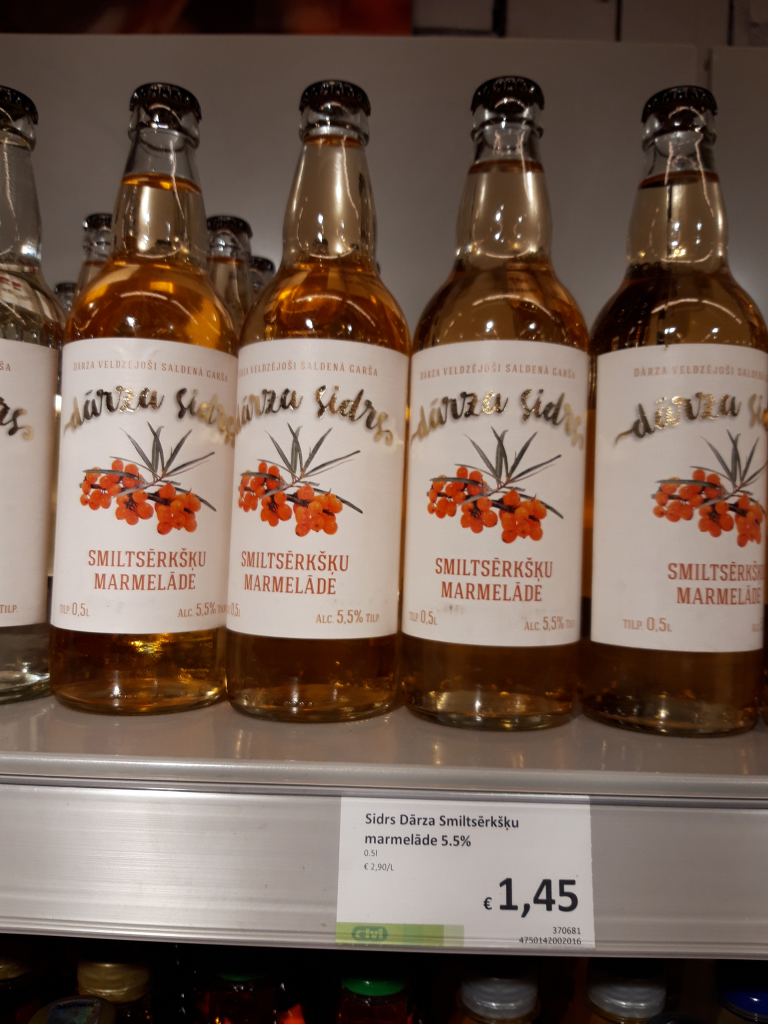
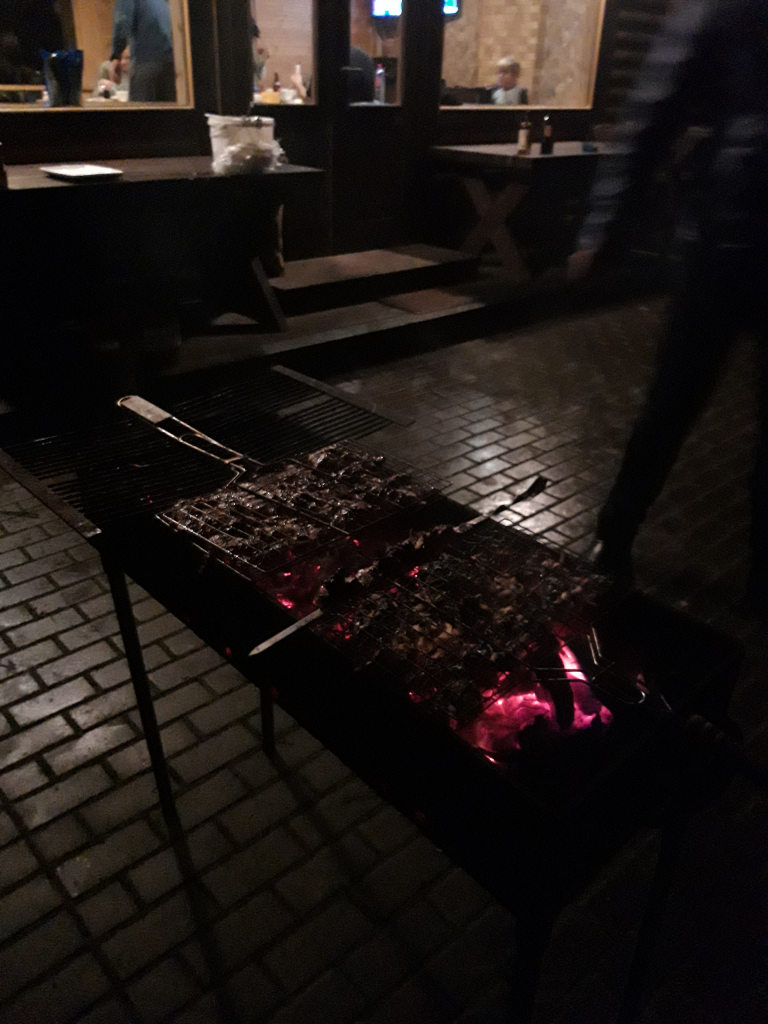
The next day, Ivars took me back to Riga by car, and we talked for hours about their venture. In autumn, they had fought a losing battle against a herd of roe deer. More recent concerns included the proper way of weeding (by hand or machine), and a new pest – a fly that ravages sea buckthorn – which has been sighted in 2019 in Latvia for the first time. Still another issue that we could not yet foresee were the effects of the Corona outbreak. At present, it remains to be seen if I can join the planting of the next six hectares of cuttings in spring.
- February 2020, Preliminary fieldwork in Skrunda, Western Latvia (31.03.2020)
The lead researcher, together with his fieldwork assistant, travelled by bus to the small town of Skrunda, Kurzeme region, over the weekend of 15-16 February. There they met young producers and did participant observation, helping to apply fertilizers at the plantation, and joining in the afterwork recreation. Especially interesting were the insights into the fits and starts of sea buckthorn production in Latvia. The issues discussed included funding opportunities for young agricultural entrepreneurs, the value of science and technology, and the risks of labour costs and various pests (see blog post On beginnings and threats to sea buckthorn 'Made in Latvia')
- January 2020, Competence improvement: Workshop on expert interviews as method (31.03.2020)
Dr Ieva Puzo, a cultural anthropologist specialized in Science and Technology studies and a fellow postdoctoral researcher at Rīga Stradiņš University (RSU) also funded by VIAA, kindly provided the lead researcher in January 2020 with a training on expert interviews, to achieve better results in research with natural scientists and state officials. The training consisted of four sessions of two hours each throughout January, and covered the main literature, questions of access, ways of data coding and the follow-up process. It was embedded in general discussions at the M.A. program in Social Anthropology at RSU about infrastructures, governing through quality indicators, and human health concerns since last summer.
- 12–13 December 2019: Cologne EnvironAnt Network Inaugural Meeting (31.12.2019)
At this fascinating workshop, I presented the paper “The sweat of the raspberry” (find the Pecha Kucha entry from 30 December 2019 in the vlog section below). Read my observations about this event.
- 20–24 November, 2019: Changing Climates (Vancouver, Canada) (31.12.2019)
Changing Climates is the largest anthropology conference worldwide. It took place on 20–24 November this year and gathered about 6,000 researchers. I participated with a presentation on my research on care and ageing in Serbia.
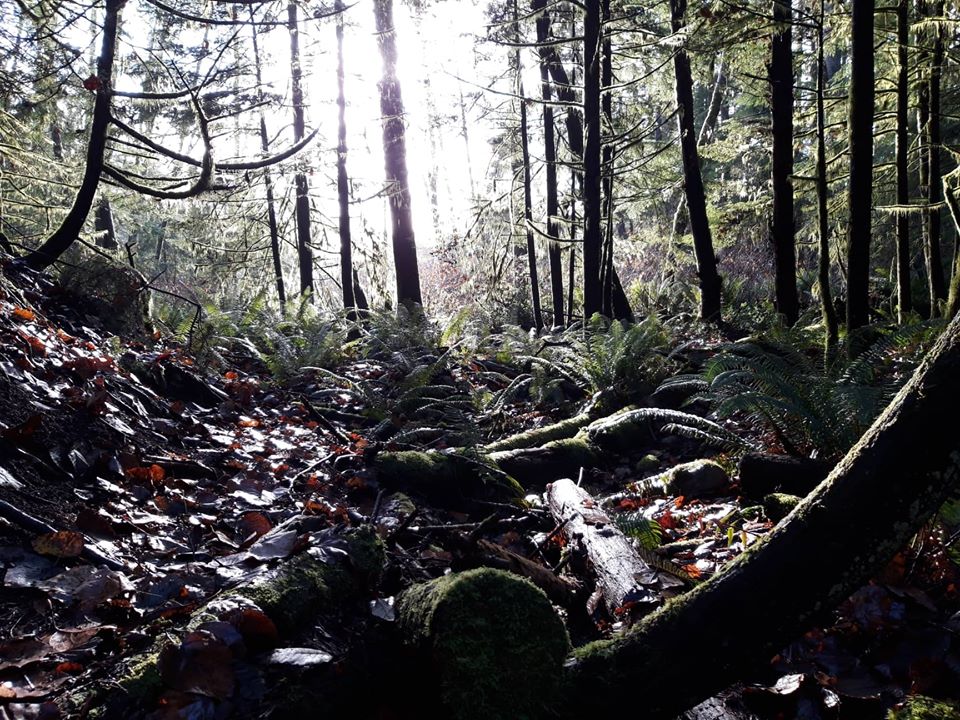
Hiking after the conference near Vancouver
- 30 October – 1 November 2019: Conference of the EASA Anthropologies of the State Network (Leiden, Netherlands) (31.12.2019)
I participated in the inaugural meeting of the European Association of Social Anthropologists (EASA) network on Anthropologies of the State on 30 October – 1 November with a talk on state infrastructures. This year's theme was 'Geneologies and positionalities of thinking the state'.
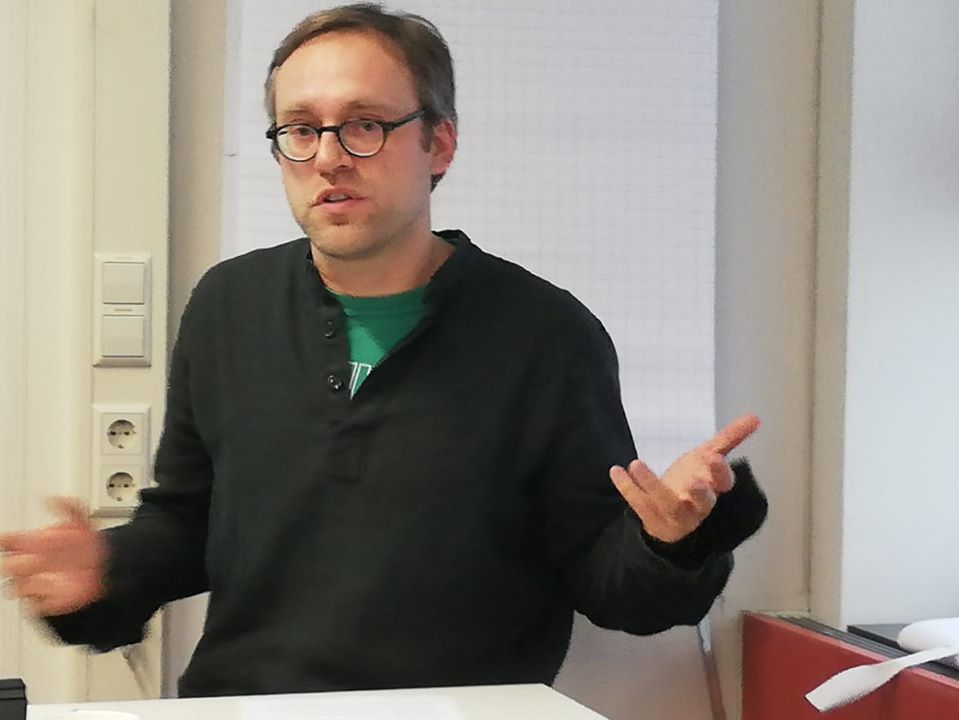
- 29 September – 2 October 2019: Conference of the German Anthropological Association (Konstanz, Germany) (31.12.2019)
The Conference of the German Anthropological Association (GAA) is the biggest anthropological conference in the German-speaking world. It took place at the University of Konstanz this year between 29 September and 2 October. This year's theme was 'The end of negotiations?' and I participated with a presentation of my project on the connection between village politics and football.
- Summer 2019: Field research (Serbia) (31.12.2019)
This summer I conducted ethnographic fieldwork on the global value chain of raspberries in southwestern Serbia, downstream from the fields to the cooling house processing.
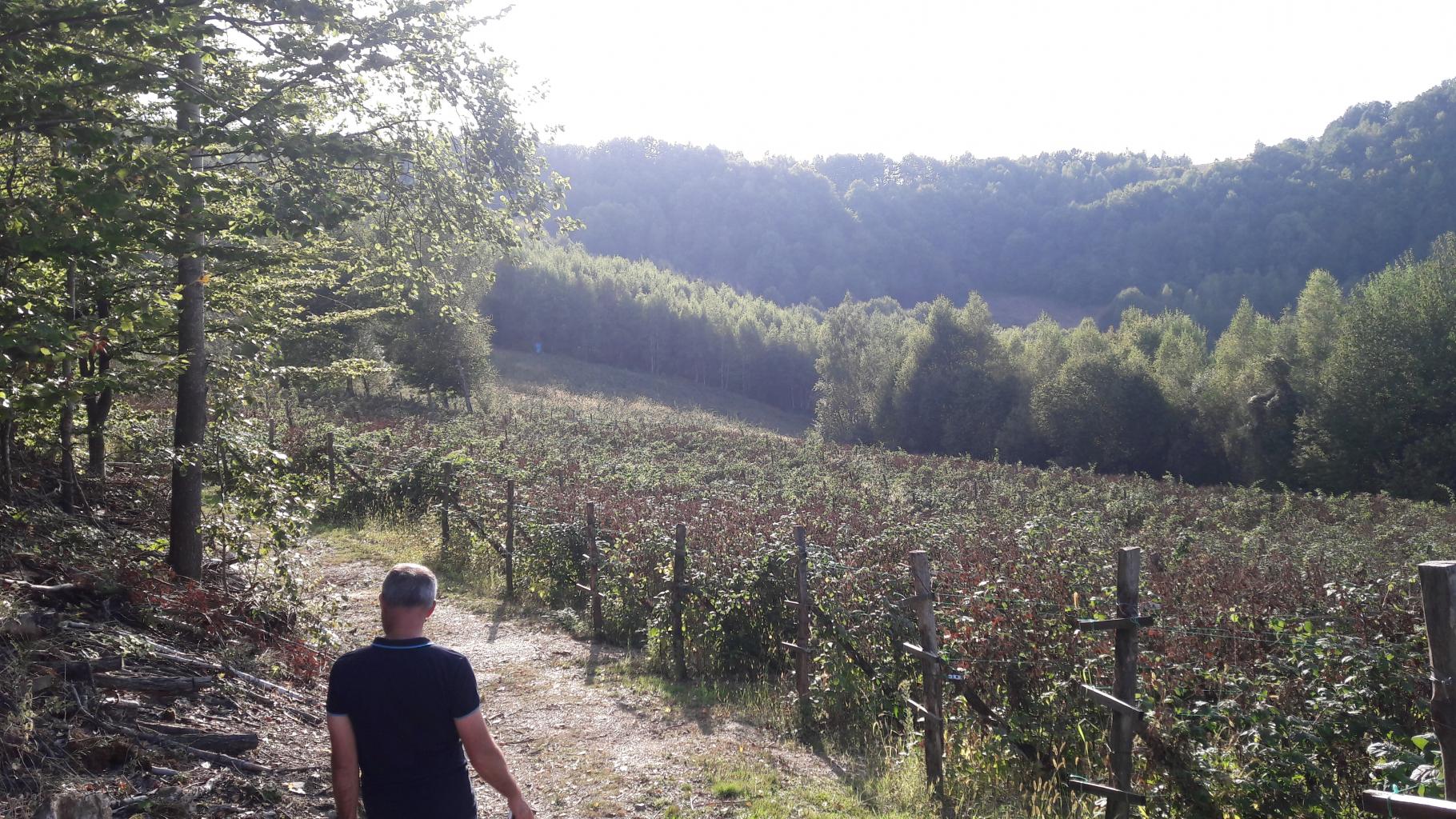
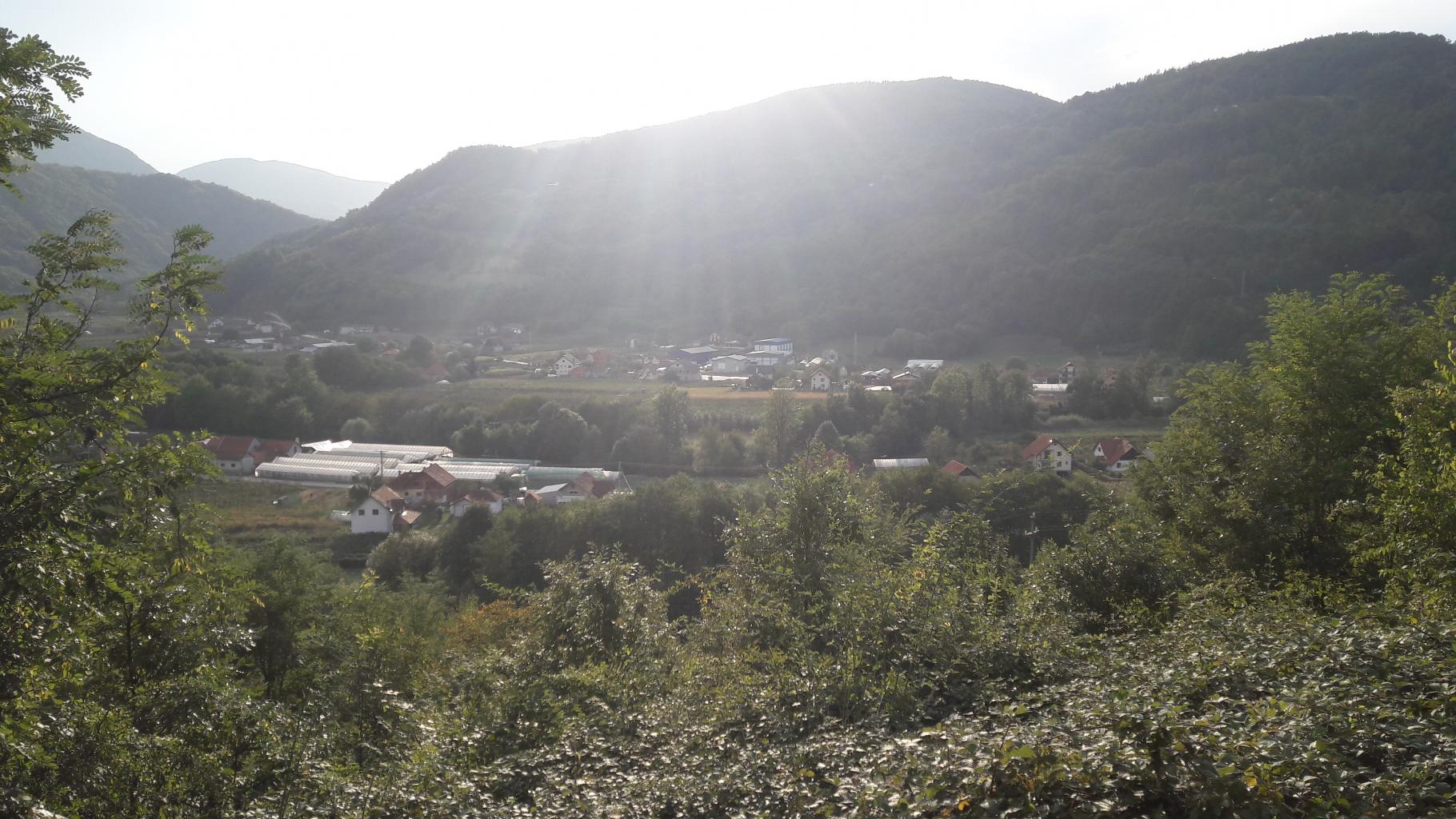
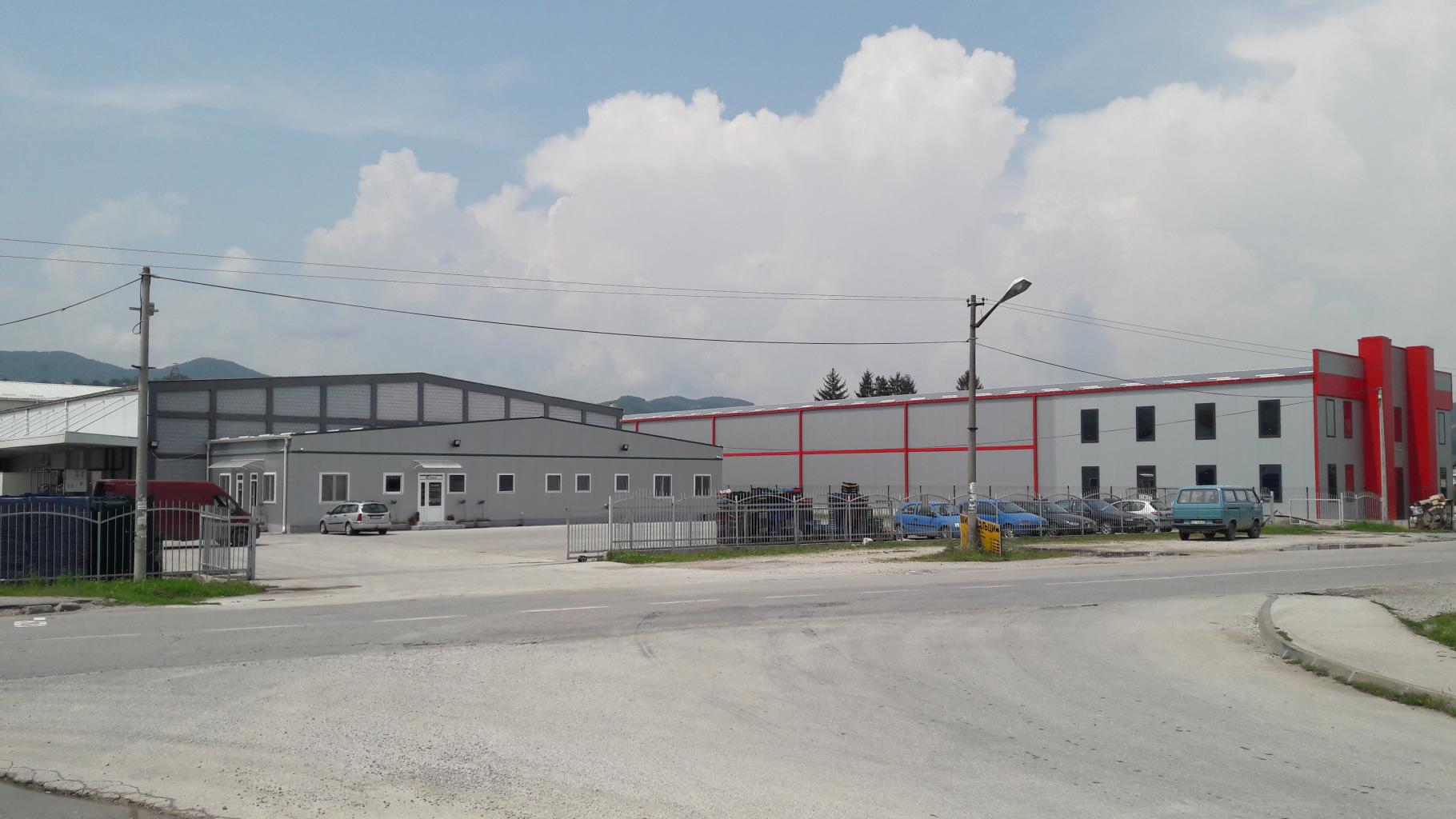
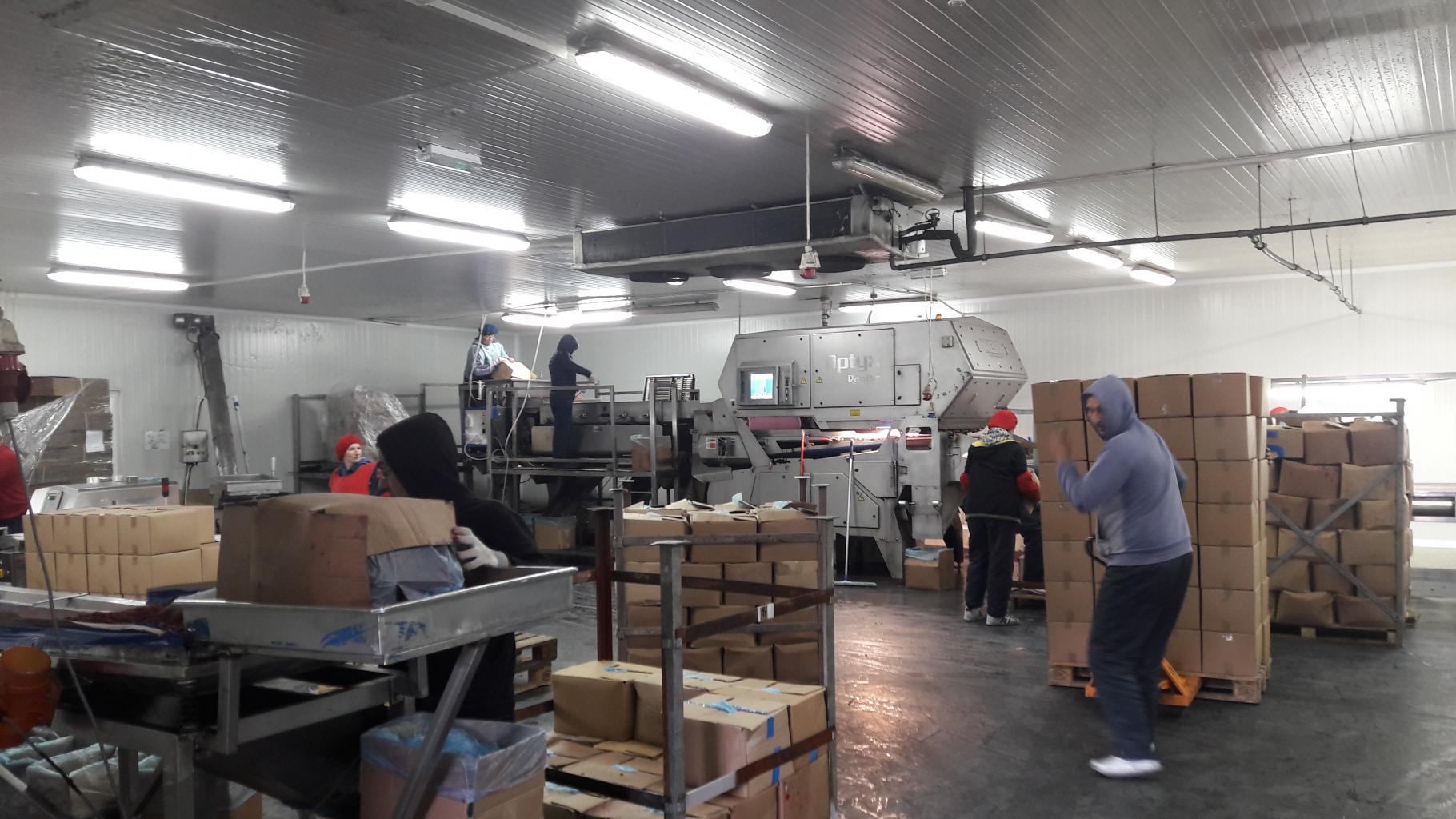
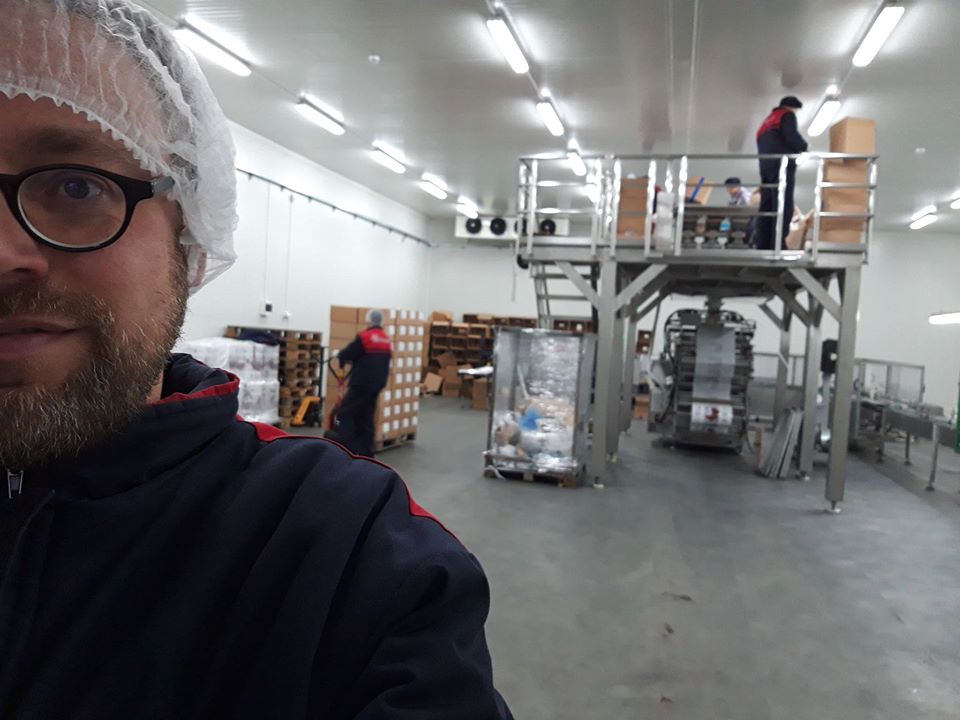
- The sweat of raspberries: Environmental concerns between witnessing and inspiring change (16.12.2019)
Notes from a workshop by the new European Association of Social Anthropologists (EASA) network on environmental anthropology
In August 2019, I started my postdoctoral project 'Comparing vital capitals: An anthropological analysis of the global value chains of sea buckthorn and raspberries' at Rīga Stradiņš University (RSU), funded by the European Regional Development Fund and the Latvian postdoctoral research grant 1.1.1.2/VIAA/2/18/271. In the accompanying blog, I will take the opportunity to reflect on the empirical, theoretical, and methodological developments of my research.
I would like to start my blog with a post on a few observations from an inspiring workshop on environmental anthropology in Cologne, 12–13 December 2019. First off, it inspired me to trace future genealogies of the field and their interconnections. Coming from a background in political and economic anthropology, I was quite familiar with some of the precursors and inspirations mentioned during the presentations and debates, but less with others. Thus, I immediately recognised the references to political ecology, cultural materialism, science and technology studies, feminist Marxism, and my own global commodity chain analyses of agri-foods, and was excited to learn more about ethnobotanics, for instance, as studied by Raj Puri (University of Kent).
The workshop was concerned with the present and future of environmental anthropology. What can we contribute to the understanding of climate change, and how can we support – in critical solidarity – environmental activism? To start answering the question, we need an initial working definition. So what is environmental anthropology? Well, as we anthropologists love to say, 'it is complex'. More precisely, both of the component terms "environmental" and "anthropology" are. The adjective "environmental" broadly refers to the world, or more narrowly to the physical, material, social and cultural landscape humans and other animals live in. The related "environmentalism" is shorthand for environmental activism. I have already noted the complex genealogies of anthropology above. We are a social sciences “in-discipline”, as John Comaroff once characterised our main strength. While we practitioners only seldom agree on much, one position most of us are comfortable with is our theoretical orientation towards anthropology, and our methodological commitment to ground our findings in ethnography.
The workshop was competently organised by Aet Annist (University of Tallinn), Franz Krause, and Michaela Haug, both from Cologne (programme).
The organisers had invited three inspiring keynote speakers: Michael Bollig (Cologne), Liana Chua (Brunel University, London), and Dan Podjed (Ljubljana). Michael Bollig first took a top-down and then a bottom-up angle in his presentation outlining his recent work in policy advice and science politics concerning environmental change and environmental anthropology. He contrasted this with group fieldwork conducted in nature parks in Southern Africa. Liana Chua presented her research on orangutan conservationists in Indonesia. She focused on infrastructuring – her term was “technologies” – and making a 'charismatic fauna' like the orangutan a matter of concern, to ultimately be seen as worthy of protection. Finally, Dan Podjed presented his applied anthropology projects, including one in which his team developed an app that successfully nudges people in European cities to walk, bike, and use public transport instead of cars.
The workshop had received many more applications than could be accommodated, which speaks to the timeliness of the whole network. The organisers used the ingenious method of Pecha Kucha to maximize the number of presentations. This was the first time I presented in such a way. The Pecha Kucha format requires each speaker to present a slide show with 20 power point slides. You set an automatic timer that changes slides every 20 seconds. Without delay or mercy, your time is up after 6 minutes and 40 seconds! (Okay, we gracefully got 20 additional seconds at the end.) This is how you could fit some thirty presentations into four panels discussing the following four questions: 1) What can we contribute? 2) How can we make ourselves heard/present? 3) What has (not) worked? 4) Inspiration and the future.
In my presentation titled 'The sweat of the raspberry plantation' I reflected on the first topic - what can we contribute.

Through my fieldwork studying raspberry producers and traders in Serbia, Bulgaria, Hungary, and Latvia, I have observed that environmental change is often cited as an important factor in the transformations of this global value chain. Raspberries grow in the continental climatic forest zone, in areas with snowy winters and mild summers. Temperatures over 30 degrees reduce quality. In hilly and forested southwestern Serbia, which was my main anthropological research site and a serious producer since the 1970s, climatic factors used to be a competitive advantage. More recently, however, producers have witnessed increased climatic imbalances like hailstorms, droughts, torrential rains, and intensive dry and hot periods that damage the plants. Consequently there is a widespread crisis discourse concerning the reduced size (and weight) as well as the quality (firmness) of the picked fruit. So, how much can climate change be blamed for the lower quality, and what could be done about it? How can you evaluate the changing composition of other inputs (less manual labour, more insecticides, pesticides, artificial fertilizers) and increased competition from even lower labour-cost economies? Are we, finally, just witnessing a "normal market phenomenon" where price fluctuations strongly influence supply and demand? Starting from a multiple values approach, I discussed the potentials and limitations of counselling for a systematic introduction of organic, integrated, and fresh fruit raspberry production in a "EU-ropeanising" Serbia.
I took the position that the answer must be complex, and to break that complexity down into “soundbites” or straightforward, simple advice is fraught with danger. For one there are already multiple voices within the field related to different “orders of worth” that represent competent and embedded environmental critique. Thus, in the raspberry sector, I interviewed young agro-scientists who suggest stricter environmental standards and new agronomical technologies. Seasoned scientists talked to me about right-sizing plantations to household labour possibilities, selecting good fields, and using manure and hacking. Cooperatives argued for more government support in regulating the sector, and an ecological farmer talked about the worth of restoring soil health and productivity in more 'integrated economies' reflecting a circular economy approach. However, it is not simply a matter of assembling these opinions and translating them in a diplomatic way to decision-makers (as Latour would have it). Rather, I follow Anna Tsing who shows how our fields are made up of conflicting and contradictory positions and processes, which generate their 'frictions' and consequent transformations.
Therefore – and here I quote a felicitous phrase by Arvid van Dam (Leeds) from the panel on inspirations – 'taking a stance does not mean taking a side'. What does it mean then? An anthropological stance is developed in a triad: intensive ethnographic fieldwork, thorough anthropological thinking, and the positionality and choices of the researcher. Sometimes, you advisedly chose to take a side, like our colleague Milena Bagdasaryan (Yerevan). She inspired us with her engaged anthropology of a gold mining project in Armenia to express our solidarity with the residents of Jermuk and appeal to the Government of Armenia to save the environment of Amulsar.
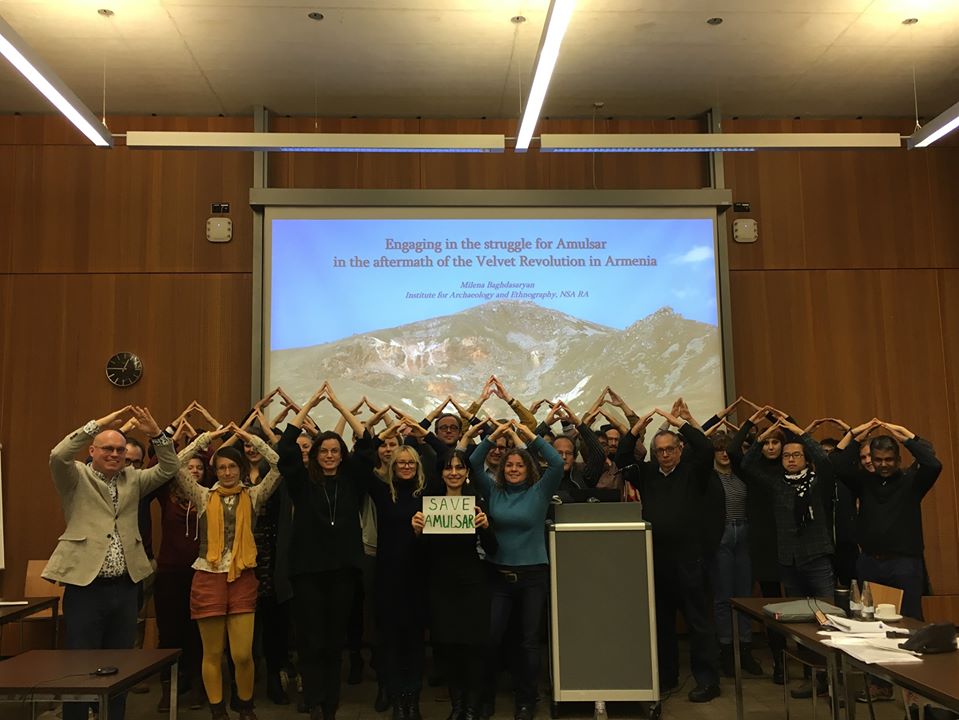
André Thiemann is a CaSt (Care and State) network team member. See the CaSt website to find out more.




